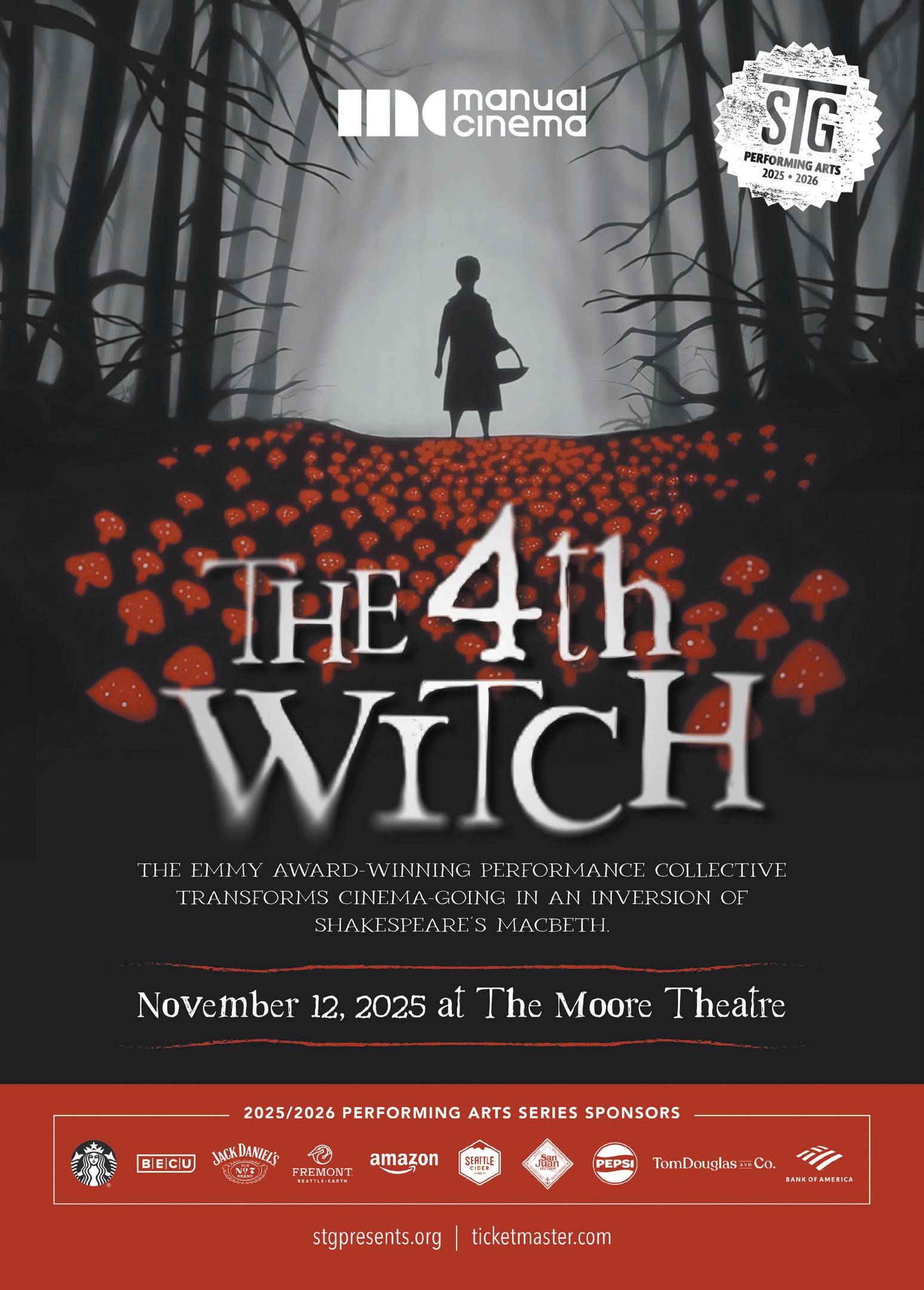


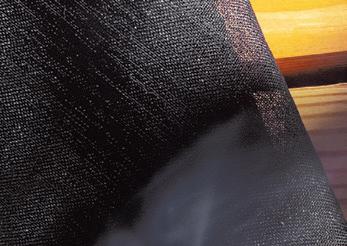







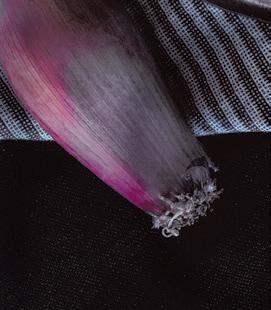



















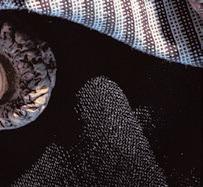


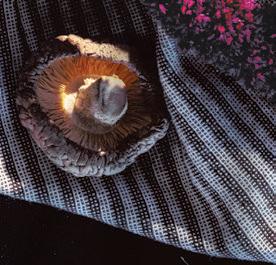







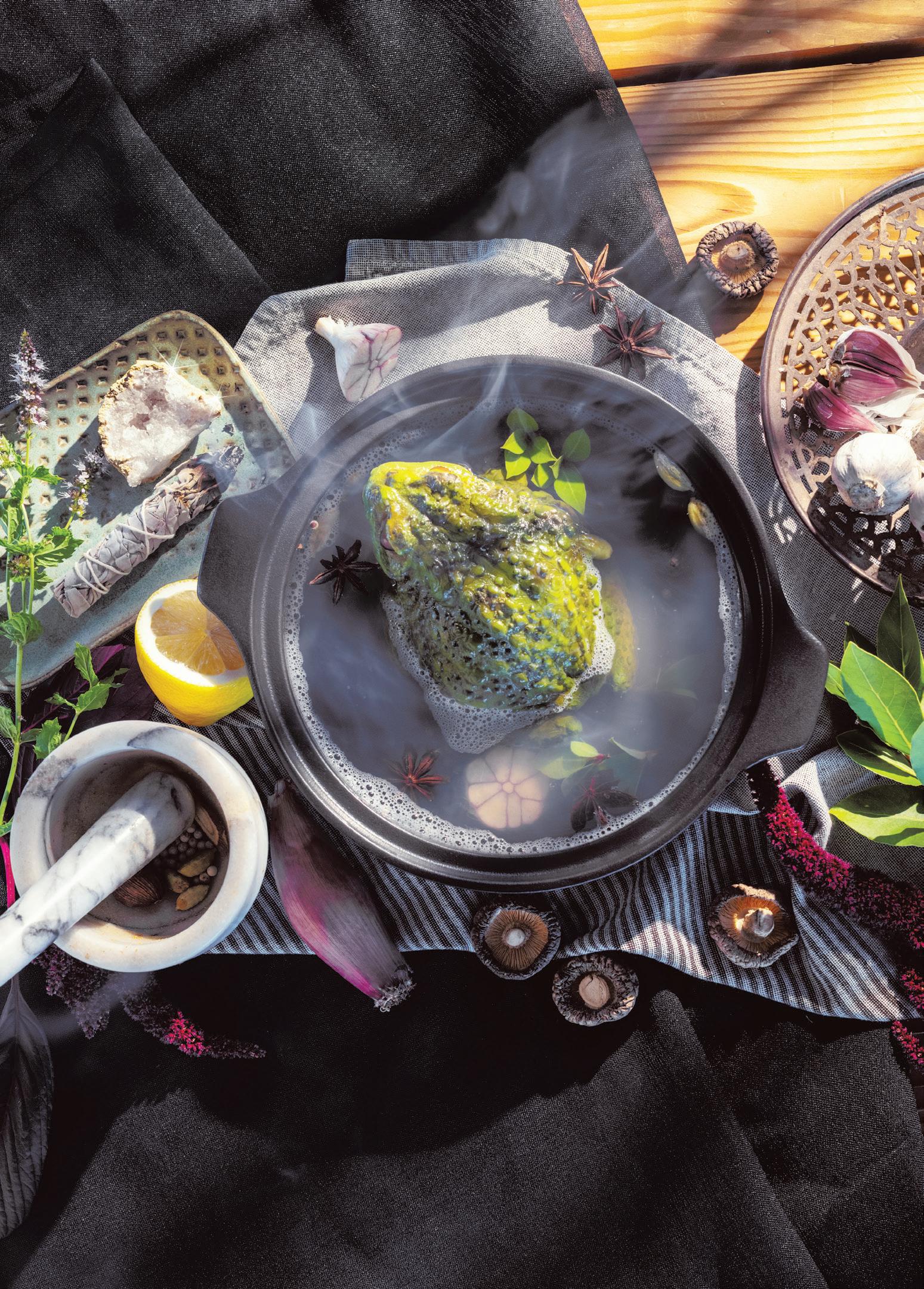




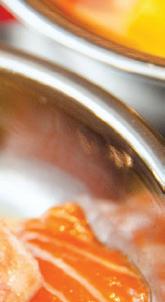




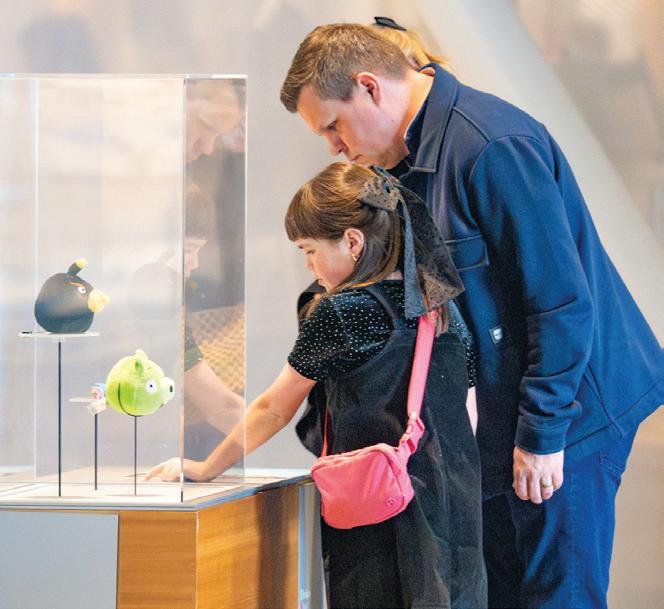






















































I Saw U
With Your Puppy at Magnuson Park, Riding Your Bike in the Dead Baby Bike Race, and Skateboarding at Green Lake
All the Vaccine Idiocy, Meddlesome Geriatrics, and University Bridge-Jumping Getaways You May Have Missed in September
She’s the daughter of scientists, an Oxford dropout, a former construction worker, and an organizer. She might be Seattle’s next mayor.
Seattle Deserves a Vibrant Street-Food Culture
At Tacos Cometa, Two Brothers Use Michelin-Starred Techniques to Make Sinaloan-Style Street Food
My Search for the Picture-Perfect Childhood Ice Cream Dream
Gurba Teaches Us How to
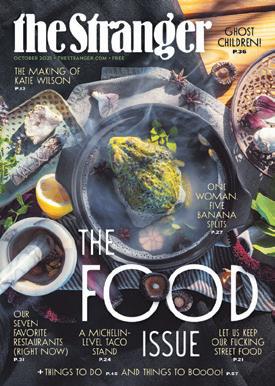
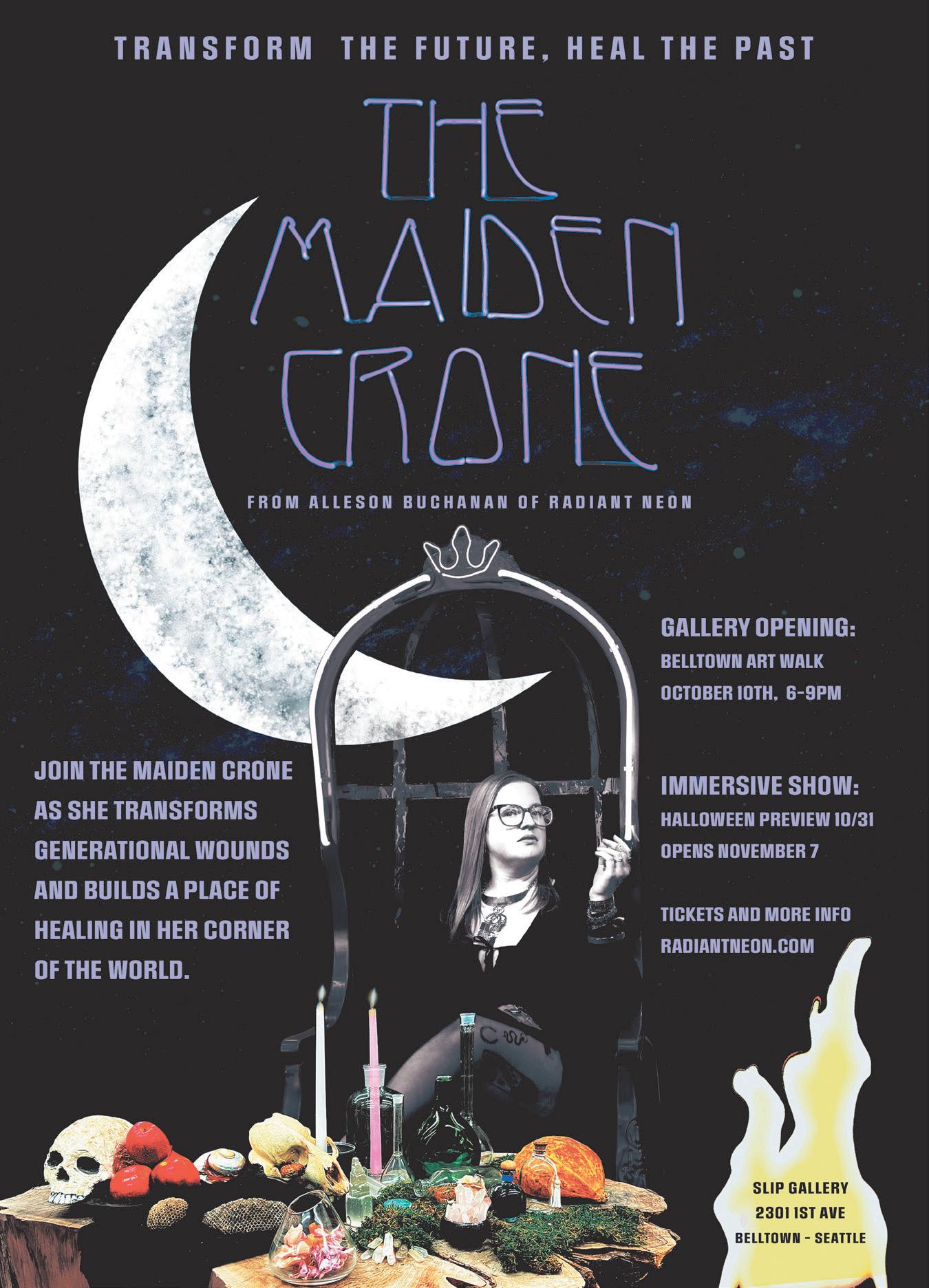
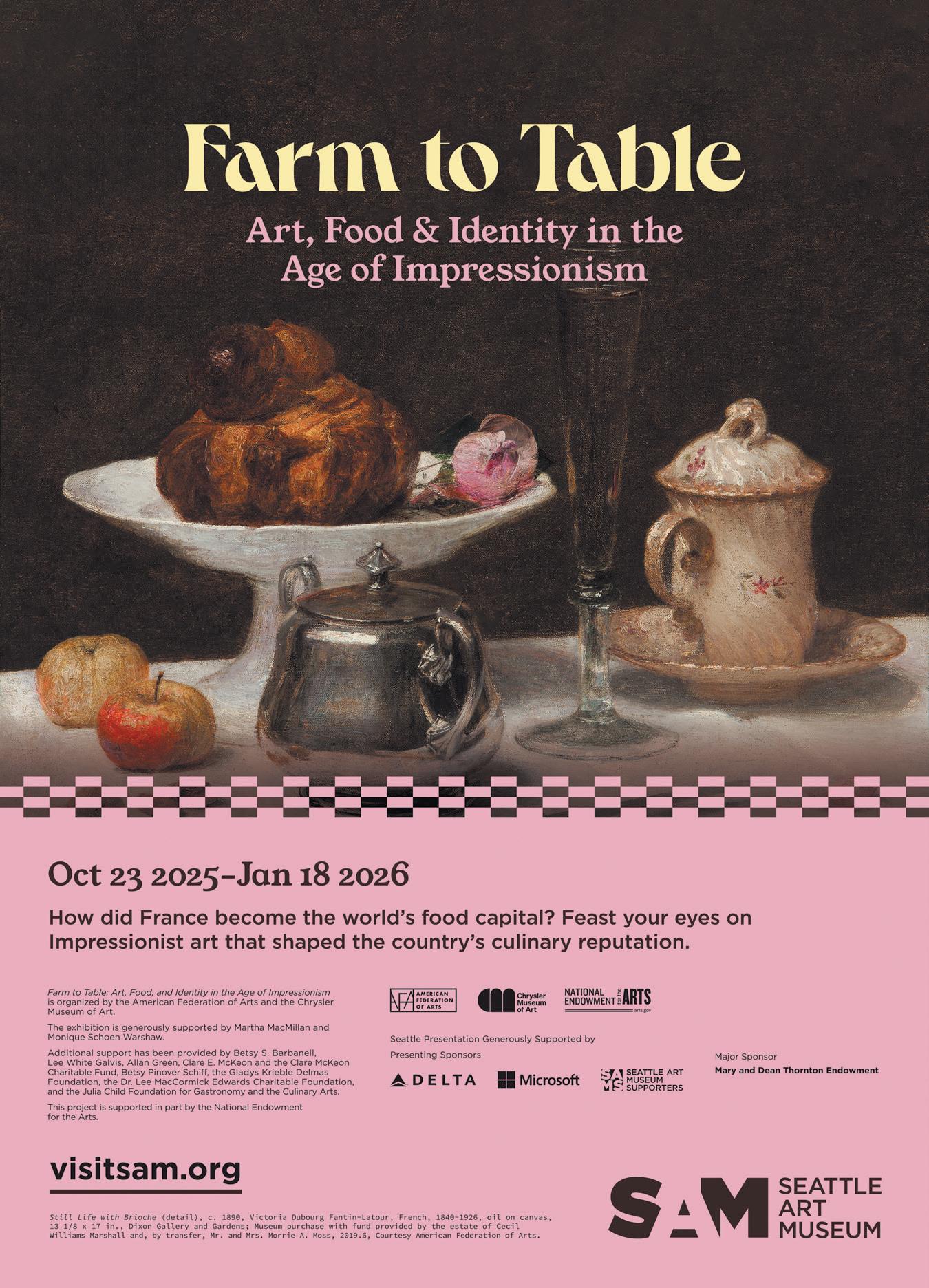

The first time I saw a proper streetfood tent in Seattle, I was sitting at a red light on Aurora and Northgate Way. It was 11 p.m. on a weekday. Most restaurants in the city had been closed for at least two hours. And on the southwest corner, two white tents were lit with utility lights, with smoke billowing from a grill and a line wound around the corner.
My car windows were cracked, and I could smell the char of al pastor on the flat top—which is, undoubtedly, one of the best smells in the world. But the tent did more than just perfume the air. I could also hear the din of dozens of people ordering, scooping pico de gallo, chatting in line. This tent took a dark, unpopulated corner and gave it life. In the words of Charles Mudede: it gives you “that feeling that you’re in a city.”
Welcome to The Stranger’s food issue. It’s all about what this city deserves.
And Seattle deserves an ever-growing ecosystem of street food (p. 21). Not just because it’s cheap and delicious. But because a food vendor on the corner of 105th and Aurora turns a tense, liminal space into an ephemeral community hub that makes us feel a little safer while it fed us.
Seattle also deserves chefs and restaurants that make incredible food while still prioritizing building community (p. 31). It deserves
Asian restaurants that thrive outside of the International District (p. 42). When we’re feeling fancy, we deserve Sinaloan street tacos made by Michelin-trained chefs (p. 24). And we deserve a goddamn banana split every once in a while (even though they’re really annoying to make, we know) (p. 27 ).
This issue should make you hungry. It should make you want to go out and try something new. It should make you want to thank all of these people who bring us together at a table or a tent or a picnic in the park.
But on the theme of “what we deserve,” we also ventured outside of the food world for a few pages. We think Seattle deserves leadership that cares about this city, and its people, as much as we do. And in these pages, you’ll find a profile of mayoral candidate Katie Wilson that we guarantee will surprise you— because it surprised us. Hell, it surprised me and I wrote it. We told you in our primary endorsements that we think that person for the job is Katie Wilson, and after spending many more hours getting to know her, we’re only more confident that that’s true.
This is all part of what makes a city a place we want to live. So get out there, eat up. Save us a taco.
Hannah Murphy Winter Editor-in-Chief
Strategies
o.b. tampons finally adopting the twist-off wrappers that Europe has had forever
Weekday red-wine hangovers from Harry’s (worth it)
Lowrider Cookie Company
All the things we couldn’t say on social media…
Dr. Martens 8065 Mary Janes
Nuns
Jodie Foster in Panic Room
Kalimotxos
Being hungover at puppy yoga
The banana-split remnants in my freezer
Brian Eno’s absolute freak fashion circa Roxy Music
“Ten Cents a Dance” by Ruth Etting Sisterhood
Katharine Hepburn’s brownie recipe
Belting my lungs out to Paula Cole
Spending too much money on fancy socks
Vintage Polly Pocket videos on YouTube
Crate training an 11 week old Milo
@blackforager’s “Poison or Snack?” series
Lesbian arm wrestling in Cal Anderson
Megan’s crow army fantasy
“No clusterfucking in the office”
Kevin’s raccoon-sensitive paws
“Espedici!”
The ding bin at MacPherson’s
Jaune flamme tomatoes
Secret soups
Peteena the Pampered Poodle
That’s Showbiz Baby by Jade
Dogs wearing doggles (dog goggles) while riding in a convertible on a late-summer day
The pspspsps of the leaves rustling in the fall breeze
Halloween candy for breakfast
Combining clever with pussy
A black house rabbit in cahoots with satan
Jimmy Cancel
“Boyfriend” by Justin Bieber for some reason
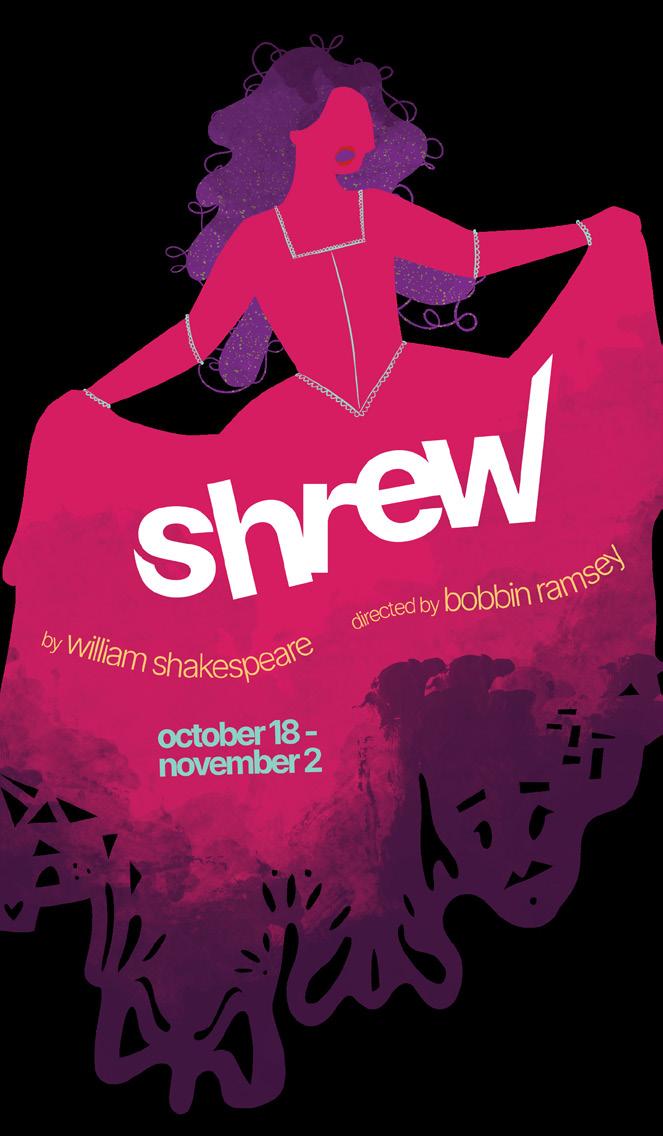
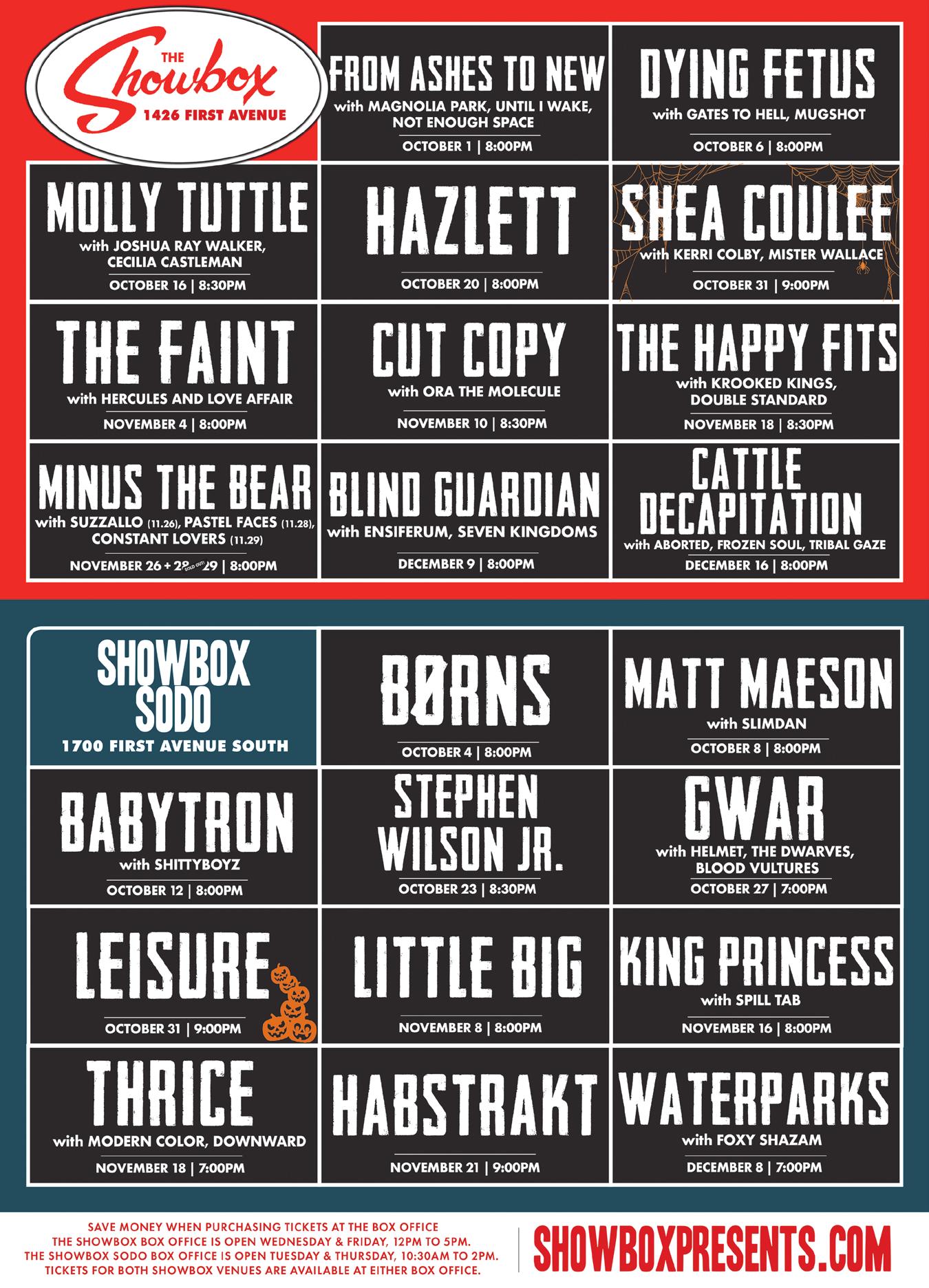
Your Puppy at Magnuson Park, Riding Your
ILLUSTRATIONS BY STEPHANIE O’BYRNE

Did you recently share a ~*moment*~ with someone while riding the bus, dancing at the club, or standing in line at the supermarket? Do you want to try to reconnect? Submit your own I Saw U at thestranger.com/ isawu, and maybe we’ll include it in the next roundup! Look for a new batch of I Saw U messages every week on thestranger.com.
Magnuson man bun
You have the sweetest tan puppy w/ bright caramel eyes, her flower dog tag even matched my pup’s. You’re tatted, glasses, blonde. Dog date?
Barboza Hair 09/13/25
You asked who did my hair and now I can’t stop thinking about you. I’m sad our conversation ended so soon. Come see me in the daylight too ;)
Parking knight with the cute mustache outside Seattle ReCreative
Like a true knight, you silently helped guide me into a parallel parking spot with a smile. Left before I could blush or thank you, and I’d love both!
club cowgirl chop suey you wore all black and a vest with red trim. i was in all denim. we wore the same boots. wanna be friends?
Earthquake engineer @ Merc
Ur time travel point was good. Didn’t get the chance 2 say I get it. Mine would b similar. U should quit smoking it’s bad. Black dress time traveler.
Rugby Hotties
Wow, I didn’t know how hot it was watching women and non binary people tackle each other. watching these games is gonna be my new hyperfixation
“Sk8er Boi” @ Greenlake Sundown
Take me back to Sun. August 24th at the tennis courts when I saw you on your skateboard. I think you’re cute and I want to talk with you!
Dead Baby Tall Bike Runner
You: running your tall bike in the tall bike race. Me: yelling how that was genius and you were robbed. Should’ve gotten your number.
Sylus Cosplayer at Poropalooza 2025 (Q Nightclub)
You danced with me (white-blue linen shirt). I awkwardly complimented and asked about your cosplay instead of your number. Exchange #s this time? :)

Saturday Secret Beach Babe Soaking Up The Sun
You: black swimsuit, koi fish tattoo. Me: deep in a book, black shorts. We shared a few glances as the steamboat went by. Meet at the beach this week?
Your friends prob took u home soon after but
Hydration line @ Massive 8/22. Single shoulder tank top+long hair. Fascinated we seem to have communicated entirely w drunk inquisitive eye contact
Thrift Store Cutie
You were in that one thrift store in u district picking up a drop off for your friend. U work at a cafe. I was the blue hair girl working. Ur so cute!
aloha on aloha
we both did doubletakes @ 19th&aloha you: curly brown hair w mustache in silver truck me: running w scruffy black dog lets doubletake over drinks?
I Have the Same Bag as You, But Mine’s Carhartt
That’s what I said to you. Waiting for the bus @ 3rd&Pine, you & your friend started a conversation to keep a homophobe away from me and my partner <3
Is it a match? Follow The Stranger on Instagram and leave a comment on our weekly I Saw U posts to connect!
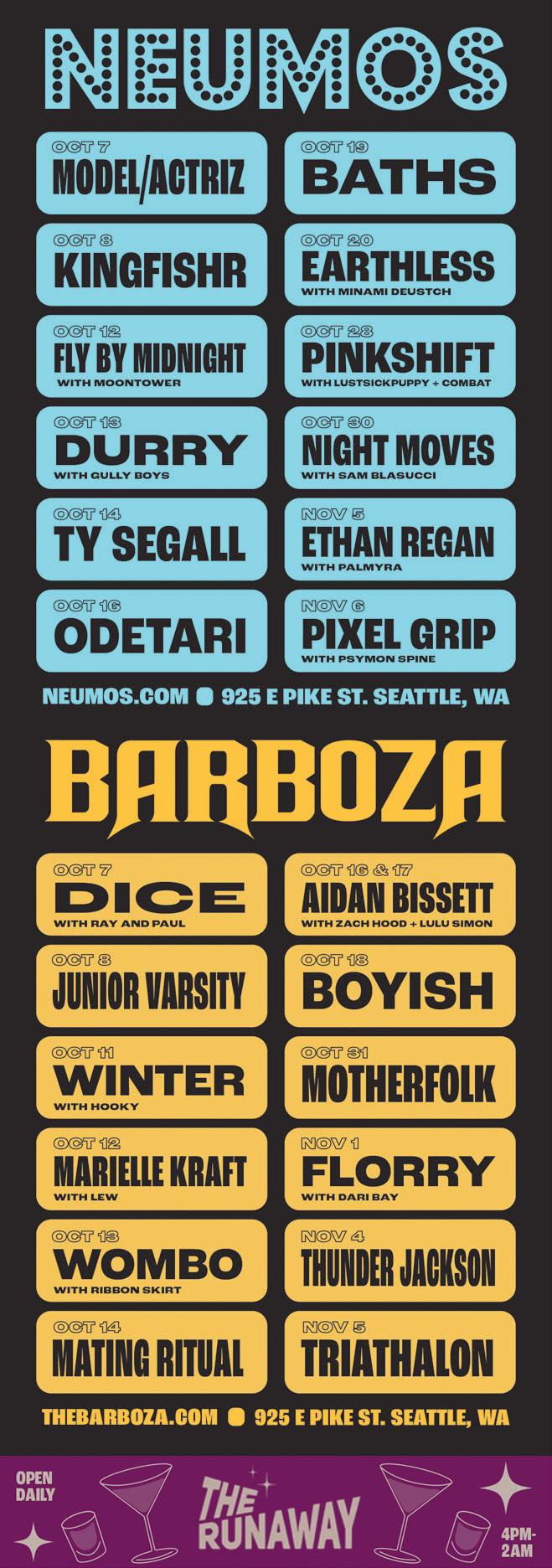

All the Vaccine Idiocy, Meddlesome Geriatrics, and University Bridge-Jumping Getaways You May Have Missed in September BY THE STRANGER’S
Last Month This Month is a recap of all the previous month’s news, featuring headlines from Slog AM. Find it in every issue of The Stranger!
* * *
This September was the worst September ever. And we mean that. A September to remember and never forget. There’s never been another September this awful. We will never forget this September and this September
* * *
Goodbye to the Americone Dream! Jerry Greenfield, the Jerry of Ben & Jer ry’s resigned this week after 47 years of making the maw of America feel so good.
B&J sold their cream palace to megacorp Unilever in 2000, on the condition that they could continue social activism. But last year, the company allegedly tried to silence their call for a ceasefire in Gaza, according to a suit from B&J. Ben Cohen is staying, but he’s no soft serve was arrested for disrupt ing a May Senate hearing while protesting the US military funding for Israel . They should have thanked him. RFK Jr. was speaking.
* * *
Trump is cool. His hands and penis? Normal to large. His veins? Functioning. Don’t mind us, we’re just practicing for government censorship after Trump formally declared that everyone he hates is an antifa terrorist. As a reminder, antifa is not an organization . The name actually means anti-fascist.
* * *


If you don’t toe the fascist line these days, middling talk show will get cancelled. Then, after your cancellation sends Disney stocks plummeting ahead of a Disney+ price increase, it’ll get uncancelled. At least that’s what happened to Jimmy Kimmel for light commentary about Charlie Kirk’s assassination. Karen Attiah, the Black columnist at the Washington Post who was fired for her reasonable comments about Kirk, did not get her job back, nor did the dozens (hundreds?) of people who lost their jobs for posting about Kirk on social media. And this is not over. Though we have learned Disney adults control the economy
* * *
* * *
Autism is over. In a Scooby Doo–esque unmasking in the Oval Office, President Donald Trump and RFK Jr. revealed the culprit. It’s Tylenol, and it would have gotten away with making the world more interested in niche things if those meddlesome geriatrics hadn’t made up a bunch of science about a fever aid.
* * * Three trans women were beaten by a group of men on Capitol Hill. As we reported, it was at least the fifth group beating since last June. In one case, ran dom men on the street joined in.
* * *
As the University Bridge rose one Tues day afternoon, a driver fleeing SPD jumped the gap , which is illegal but fucking sick as hell. The cops found the car totaled, but still running. This Righteous Knievel is still rockin’ and rollin’ (police are looking).
Oh, yeah, Charlie Kirk got assassinated. A sniper shot him in the throat during a debate at a Utah Valley University event. The killer turned out to be a 22-year-old irony-pilled white man who inscribed his bullets with memes. His ideology is still unclear.
* * *
Two Colorado teens were shot by their radicalized classmate on the same day as the assassination, the 47th school shooting in . But who gives a shit, right?


* * *
The US military keeps destroying little boats off the coast of Venezuela and in the Caribbean, killing alleged members of drug cartels. Trump claims he has the power summarily kill these people under the laws of war. Experts say he doesn’t But again, who gives a shit? We’re a post-law, post-truth society. Bombs away, gentlemen.
* * *
Doing the important work in the midst of attacks on free speech and the encroach -
ment of an authoritarian regime on our personal liberties, Seattle City Attorney Ann Davison filed roughly $40,000 in civil penalties against three local taggers. “If you vandalize the Emerald City, you will pay,” said Davison. Shut up, Ann
* * *
In a virtual meeting with her supporters, Seattle City Council President Sara Nelson laid out a plan to stay employed . The key strategy: “bump up my sort of anti-Trump rhetoric, or acknowledge that we’re under attack, or whatever.” Very inspiring, Sara.
* * * City council voted 7-2 to expand police surveillance in Seattle this week, despite clear risks of police abuse and federal overreach. Public commenters pleaded for the council to take their concerns seriously for more than two and a half hours. It was clear most of them came to the dais with their minds made up. It’s great, actually. Friends and family, especially our big brothers, will have footage of the authorities dragging away their loved ones. They used to have to imagine it!
* * *
beyond these headlines. Anyway, how ’bout those Mariners?
* * *
Brazil’s Supreme Court convicted former President Jair Bolsonaro of plotting a failed coup d’état to overturn the 2022 election, disband the courts, hand power to the military, and assassinate the then-president-elect Luiz Inácio Lula da Silva. Manifesting accountability
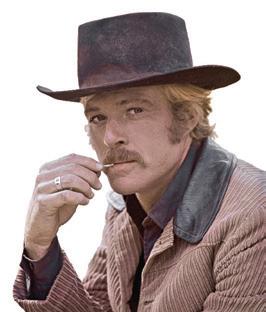

After 13 years of federal oversight, US District Judge James Robart lifted the consent decree on the Seattle Police Department They’ve been bad boys and girls (and bad boys to those girls, actually), and we really should be keeping an eye on them. With these new cameras, they’ll be keeping an eye on us. But, hell, at least Judge Robart can forget about those pesky, lingering accountability issues and focus on golf or something.
* * * Actor, director, timeless hottie, and activist Rob ert Redford died at his home in Provo, Utah. He was 89. Maybe the only 89-year-old too young to die . Watch The Sting and shoot ropes in his memory.
* * * Great, another orca calf is dead. Add it to the list of dead orca calves. Alki, a female orca in the J Pod, was spotted near the San Juan Islands pushing her dead calf through the water to keep it as close to her as possible. The good news : J Pod has a new orca calf. Hopefully this one lives, but who knows? Our environment is still degrading . The orcas are starving. We as a society can’t spare the energy to care about it
* * *
Good news for fans of women’s sports and fingering women! Rough & Tumble announced they’re opening a second women’s sports bar! Coming (ha ha) this October to Columbia City.
* * *
The One Seattle Plan, an initiative meant as a comprehensive road map for the city’s future growth, had more than 100 amendments, which is too many to begin with, and the shortsighted city council shot down pretty much all of the good ones. Those brainiacs cut back density in a number of proposed neighborhood growth centers and greenlit new tree protections. “Tree protections” sounds good, but it’s not We already protected the trees. These are restrictions that make building onerous. The Lorax wouldn’t be fooled, and that guy is single-issue.
* * *
NASA might have found evidence of a long gone microbial environment on rocks in a dry river channel. Not a euphemism for bacterial vaginosis. This indicates there may have been life on Mars. It’s inconclusive, but certainly something, the scientists say (for now). With all the federal cuts, it’s incredible that we’re even learning about this.

* * * Bad news for needlephobes, good news for needlephiles: Washington State is committed to protecting our access to vaccines. And no, they’re not going to hold down those hippie freaks on Vashon or whatever island that was and inject mind-control drugs into their tykes. They’re providing a choice.
* * *
Meanwhile, Florida, land of fools and oranges , plans to become the first state to eliminate all vaccine mandates. The A-Team is coming back: tuberculosis, polio, rubella, mumps, and, though he took some convincing, whooping cough. ■

Position: Web and Digital Interface Designers
Duties: Manage branding and marketing strategies for URL, LLC, enhancing brand visibility and customer engagement. Design store interiors and curate merchandise collections to reflect the brand’s identity and meet market demand. Build partnerships through collaborations to strengthen the brand image and expand market reach. Collaborate with the Korean parent company’s development and design teams to create app designs aligned with URL, LLC’s identity.
Minimum Job Requirements: Bachelor's degree in the arts, specifically related to design and at least 60 months of relevant work experience
Wage: $155,000 – $157,000 per year
Benefits: Health, dental, and vision insurance; 401(k); paid time off (PTO); paid holidays; commuter benefits
How to Apply: Please send resume w/ cover letter to URL, LLC. 524 Broadway, Seattle, WA 98122 Attn: Young Moon Song for interview - ym.song828@gmail.com







She’s the daughter of scientists, an Oxford dropout, a former construction worker, and an organizer. She might be Seattle’s next mayor.
BY HANNAH MURPHY WINTER
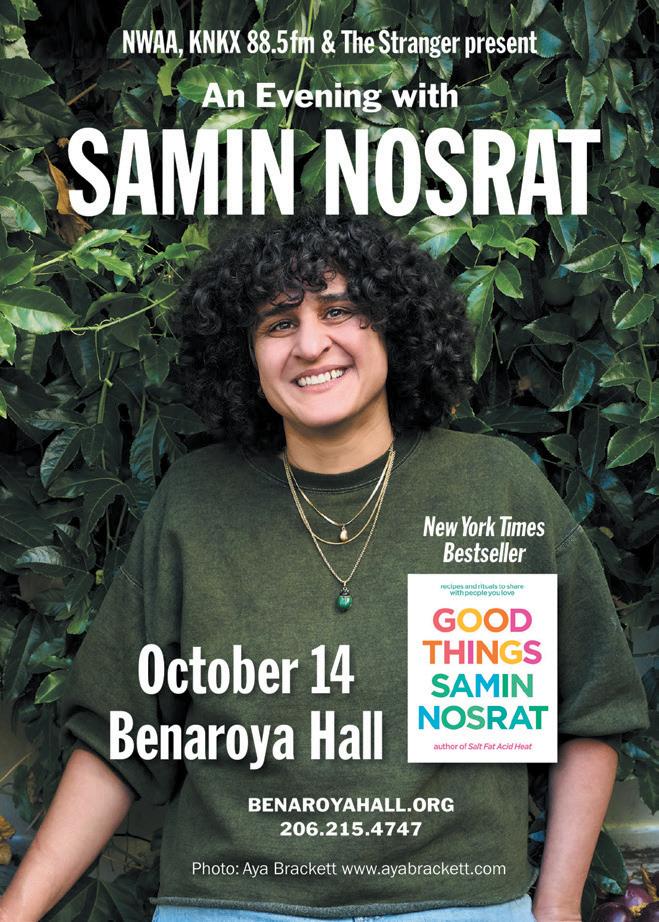


It’s 7 o’clock on August 5, the night of the Seattle primary election. Most local candidates are hosting their election night parties at industrial-style bars and breweries across Capitol Hill or Ballard, but not mayoral hopeful Katie Wilson. This room in Beacon Hill looks like it was set up for Bingo Night, or a particularly hype, politics-themed children’s birthday party.
And it actually is a particularly hype, politics-themed children’s birthday party. Wilson is sitting at a table, pinning the tight bun her hair is always tied into, when someone carries over a little girl in a cotton floral dress and sets her down. Josie is celebrating her second birthday tonight, watching the scene from the floor, wide-eyed and a little over it.
Balloons are taped to the wall and tied to the backs of plastic chairs. Streamers hang haphazardly by her yellow campaign signs.
Campaign staff, volunteers, and a handful of other candidates for city office mill around the open space, snacking on hummus and veggies and cashing in their drink tickets for beer and wine. A truck outside is selling pizza, a nod to an early campaign video about why a slice can be as much $8 in Seattle now. It’s all so scrappy, just like her.
At 8 p.m., the packed room quiets. The ballot count will drop any minute. For months, Wilson was fighting a narrative as much as she was fighting incumbent Mayor Bruce Harrell. He was entrenched, unbeatable, the institution. She was the progressive upstart without a shot. Early polling showed that voters liked her message, but were barely familiar with her name. Refreshing the King County election website on their phones, the room was eager to know if that narrative was right.
At 8:05, a woman yells: “Katie’s number one!”
The crowd erupts.
Wilson walks to a podium at the back of the community center through a chanting crowd that’s already closing in around her. Her bag is still on her shoulder and she’s wordlessly looking toward her team in the crowd.
When the cheering quiets down, she brings the mic to her mouth, and looks over to her campaign staff. “Are we really at 46 percent?”
The crowd roars.
“Wow, that’s a lot better than I expected,” she says.
The general rule of Seattle politics is that older moderates vote early, and younger progressives vote right before the deadline. The first ballot drop skews conservative. An hour earlier, Wilson told me she hoped to be a few points behind Harrell that night, catch up in the next few days, and overtake him in the end.
She didn’t expect to be almost a point and a half up.
“Okay, so we’re headed to the November ballot,” she says to the room.
In the end, she took more than 50 percent of the total vote, leaving Harrell almost nine points behind her.
The Friday after election night, I met Wilson at her campaign office in the Smith Tower: a room of mostly empty desks that’s 20 by 20 feet, at most. She’d shared this office with city attorney candidate Rory O’Sullivan
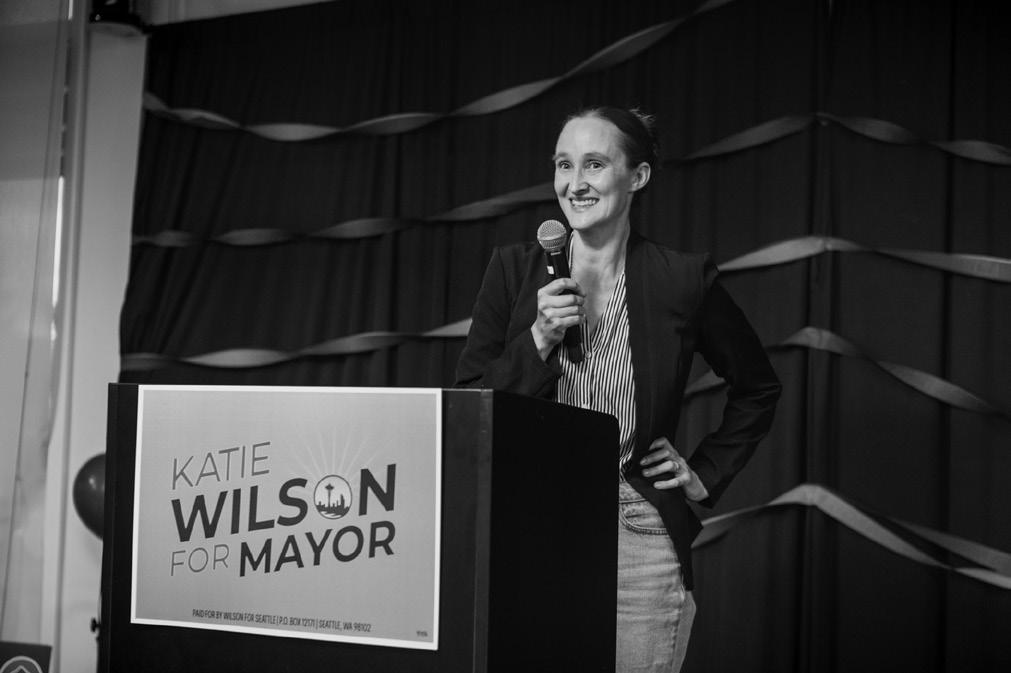
and city council candidate Jamie Fackler, but neither of them got through the primary. She’d spent the last four days catching up on the 150 “congratulations” texts from everyone she knew, and quite a few people she didn’t know. Frontrunners are more interesting than upstarts.
Sitting at a desk, looking toward City Hall Park, she started from the beginning.
Wilson was raised in Binghamton, New York, in a home steeped in academia. Both of her parents were evolutionary biologists. Her mom, Anne Barrett Clark, studied birds, and she specialized in redwing blackbirds when Wilson was in grade school. “I have a lot of memories of tramping around her field site, helping her to put little bands on baby birds, or weigh them, measure them,” Wilson says. Today, her mom is focused on crows’ social behavior.
I ask about her dad.
“He’s actually quite well-known,” she says, uncomfortably.
In the 1970s, the biologist Richard Dawkins published The Selfish Gene , a blockbuster pop-sci hit that argued that our very genes, the genes of animals, of plants, all strive for immortality. Living things are completely governed by our own self-preservation. And as a result, everyone and everything is selfish by design. His arguments
“I remember thinking, ‘This is a weird person. I’ve never met someone like this.’”
have been co-opted by every libertarian and cheating ex-boyfriend to explain their rugged individualism for the 50 years since.
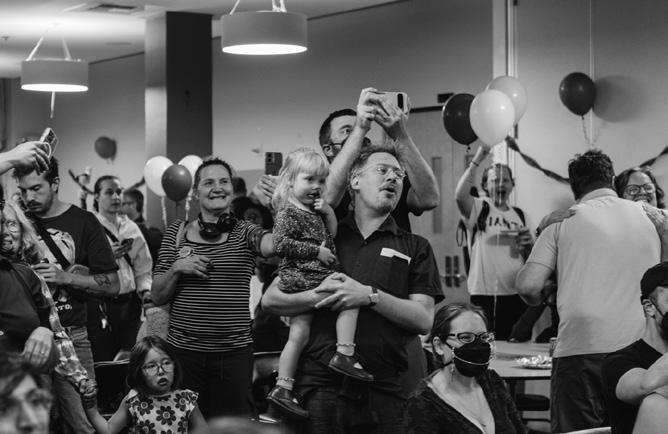
dad, David Sloan Wilson, made his career arguing against Dawkins’s theory. Essentially, he developed a counter-theory that altruism—rather than selfishness— can be a product of natural selection. His publications on the subject span from 1980 to 2022. And in his 2011 book, The Neighborhood Project: Using Evolution to Improve My City, One Block at a Time, he helps find practical ways that evolutionary biology can be applied to the world around you.
“The thrust of my dad’s work is showing that, from a scientific, biological point of view,” Wilson says, “noble, moral motivations are real. And that there’s an evolutionary basis for that.”
It’d be easy to try to draw a connection between Wilson’s dad’s work and her own politics. A household driven by the belief that community-mindedness is inherent to our biology seems like it could create little leftists straight out of the womb.
But when I ask Wilson, she tells me I’m off base. Yes, her household shaped her politics. but not in the way I thought.
She took three essential gifts from her parents, and in spite of them: a refusal to trust authority just because it’s authority, an ambivalence to the ideas of status and money, and a refusal to follow her parents
into the world of academia.
From her vantage point, her parents seemed so separated from their subjects, and she wanted to make a tangible impact. “They were genuinely in it because they want to understand how the world works,” she says, but “they were in this ivory tower, right? They’re thinking about things, but there’s a lot about the world that I think they didn’t understand. And that I didn’t understand either, because I hadn’t been in it.”
In high school in Binghamton, she started to get involved in the anti-consumerist, anti-globalist movements of the ’90s, the way that teenagers do when they have a strong sense of moral justice and nowhere to put it. When she was 15, she cofounded a local chapter of Food Not Bombs, a sort of freegan, and vegan, soup kitchen that made free meals for the community.
That’s where she met her now-husband, Scott Myers. At the time, Myers was a self-described punk, with a touch of rockabilly. “My hair was greased up like Elvis or something.” And the chapter was serving food at an animal rights protest against a circus that was coming through town. His first impression of Wilson? “Well, she was wearing Birkenstocks and socks,” he says. “I remember thinking, ‘This is a weird person.
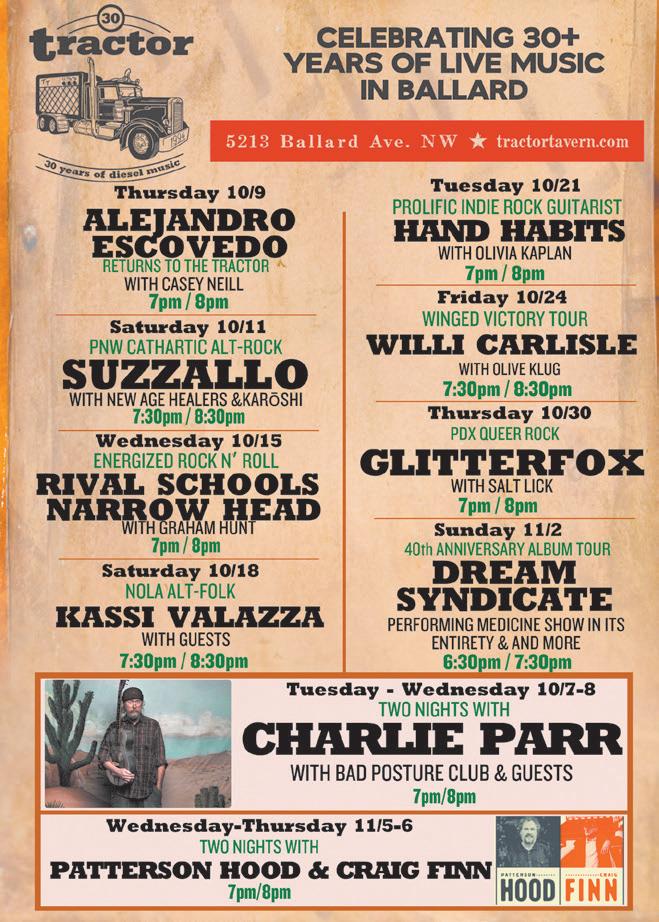
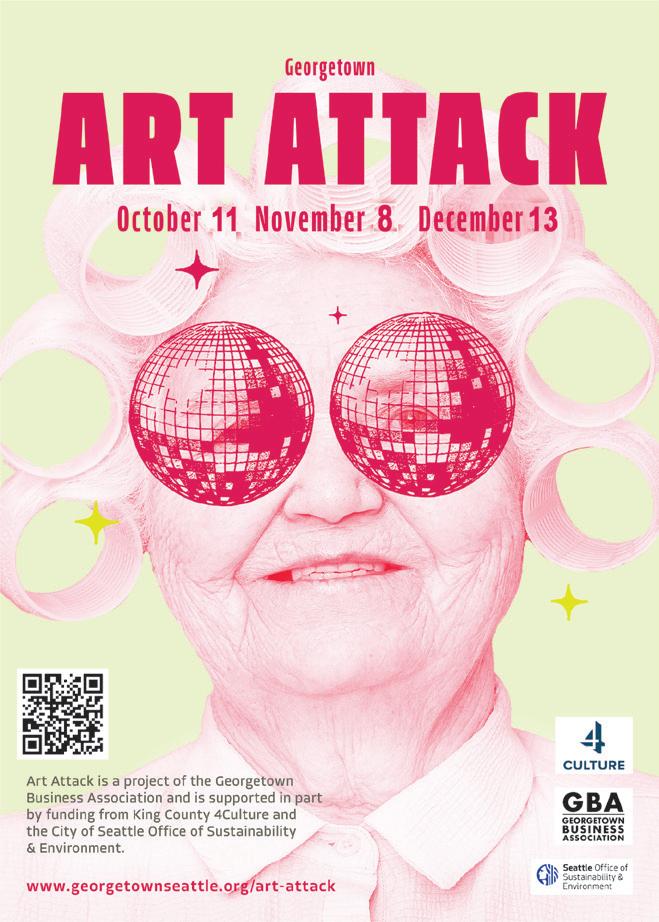
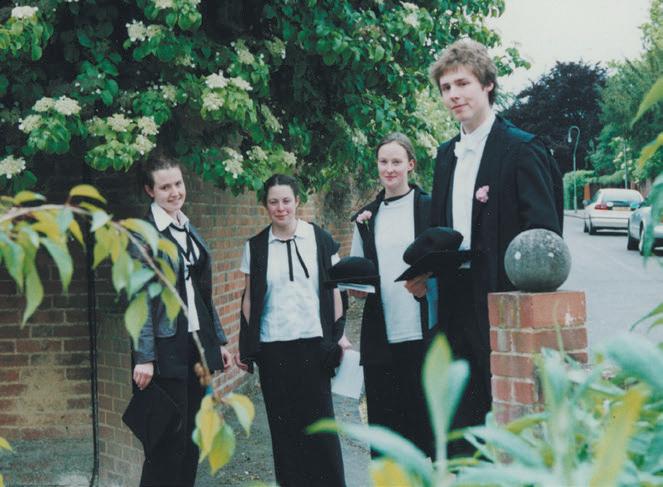
I’ve never met someone like this.’”
When I ask Myers if, in any way, she’s still the same person he met that day, he, like anyone who’s known someone for 30 years, struggles to find an answer that could fairly capture decades of growth. But he’s easily able to paint one clear throughline from that teenager at the circus: “If she’s ever ambitious,” he says, “it’s never for her own reasons. It’s always about trying to do the most good for the most people.”
The two went to different high schools, but that meeting started a relationship between the unlikely pair that would last, off and on, through their adult lives. (Wilson and Myers describe their teen romance as “a complicated, adolescent relationship” and “tortured, teenage, fits and starts,” respectively.)
At that point, Wilson still appeared to be on the same academic track as her parents. She graduated from Binghamton High School as the salutatorian, and headed straight to Oxford University to study philosophy and physics (“to get to the bottom
Like flipping a railroad switch, she veered away from a life that seemed to be inevitably barrelling toward prestige and academia.
of things,” she says). But when it came time to graduate, Wilson considered her parents’ ivory tower again. She didn’t want to be “looking down on the world and trying to understand it,” she says. “I wanted to get my hands dirty.”
And this is where her rejection of her parents’ careers in academia came to a head: Six weeks before graduation, Wilson dropped out of college.
“As I got toward the end of my time at Oxford—that’s the time when people are thinking about what they do next, right? Are you gonna go and apply for graduate school or get a job with McKinsey? And so as I got into my final year, as I was having those thoughts, it was like, ‘Well, I’m not doing any
of that.’” And so she decided to make sure that that wasn’t an option.
“I have to admit I was at least a little bit of a bad influence on her,” Myers says, sheepishly. While Wilson was in college, he’d gotten his GED, moved to the Bay Area, and gotten deeper into the protest movements of the early 2000s. His life looked drastically different than hers: He was busking on the BART and volunteering at an Indian reservation. “I’m happy it didn’t wreck her life,” he says. “She had to work jobs that she probably wouldn’t have worked, and get a different perspective on life, and on how a lot of people live and make a living. It might look less prestigious, but I think it’s shaped her a lot… But if my daughter did it, I would be like, ‘Don’t do that.’”
“No regrets,” Katie tells me. “And my parents have forgiven me for it, at this point,” she says, in a way that makes me wonder if it really did take until she was in her 40s. ***
Dropping out of college did exactly what she wanted it to do. Like flipping a railroad switch, she veered away from a life that seemed to be inevitably barrelling toward prestige and academia, and into the life of someone who wasn’t raised for Oxford from birth.
Wilson and Myers got married in 2004 and took what they call a “Greyhound Honeymoon,” busing from city to city to decide where they would start their new life. That city, it turns out, was Seattle.
They landed here because, at the time, it was affordable, and because it had an accessible university library system where they could continue their education on their own (which Wilson describes as sometimes “inefficient and weird,” but also a valuable way to fill in some of the gaps that her two majors left).
Their youthful self-education was driven by a central question: Why did the political movements they were a part of in the ’90s and aughts die in the water, and what did it take to make a social movement successful? They’d been involved in the Wolrd Bank protest in 2000, the anti-war movement after the invasion of Iraq, “and we were both somewhat disillusioned with the results of those movements,” Wilson says. “And so we made a joint decision to figure out, ‘How do we change the world?’”
They knew the key was organizing worker power. “We were inspired by the labor movement of the 20th century and the Civil Rights Movement,” she says, “but the world today is not like it was in the 1930s and the 1960s.” What was 2004’s organizing principle? Could they organize Walmart and other big box stores? Could they organize service workers?
But in the meantime, they had to make a living. In Seattle, Wilson’s first job was as an office assistant at an environmental science laboratory, followed by a brief stint at the Seattle Yacht Services, buffing hulls, painting boat bottoms, and repairing yachts.
But her mainstay for a few years was construction. She started out as an apprentice carpenter with a general contractor in Eastlake, renovating apartments. “This was a shady fucking worksite,” she says. The building itself was probably made as a hotel for the World’s Fair in 1962, she says, and then converted into apartment buildings. This time, their crew was turning studio apartments into one-bedrooms and flipping the building. “They were so cheap, they didn’t even buy us ladders,” she says. “So if we were doing work on the ceiling, we had to stand on five-gallon buckets.”
Looking for a construction job that felt less like a death trap, she emailed Mike Cain, a local contractor who had posted an ad on Craigslist looking for a construction laborer. She wrote:
I have some experience with framing, and I am proficient with both a hammer and a nailgun. I did a lot of drywall (both new and repairs), taping, mud, spray texture, painting (spray, roller, and brushwork), cheap flooring, and window trim and baseboard installation. I did demolition and, in general, a lot of carrying heavy things from one place to another… I am strong and competent and I am a hard worker. I learn very quickly, and I have a sharp eye for detail when necessary.
She ended the email: “I have my own tools - a
cordless drill, a small skil-saw, a carpenter’s belt, lots of hand tools, and personal safety gear. I have a drivers license, but no car. I commute by bike and I live in North Seattle, which is within easy biking distance from University Village. I am very punctual and reliable…I would be available to start work immediately.” She asked for $15 an hour, but she’d take $12 “for a trial period.”
When I ask Cain what he remembers most about her, he tells me about their face-toface interview, at the job site. He knew she’d recently moved across the country, and he remembers asking her what she was doing in Seattle. “I’m going to unionize Walmart,” she told him. “That was so cool,” he says. “‘You got the job,’ [I told her], just on the basis of that. Just her spirit and her spunk and everything. I was like, you look like you can lift 50 pound things over and over and over again all day.”
Wilson ended up working for Cain for six months. And she didn’t unionize Walmart. Instead, it took many patient years before she found an entry point to start organizing worker power in Seattle. In 2011, after the Great Recession pushed King County to take up austerity measures, the county was planning to cut Metro bus routes—a direct hit on working people.
“It was personal to us,” Wilson says. “We didn’t have a car, so it legit affected us. And then we just thought, ‘Okay, let’s organize transit riders.’”
Wilson and Myers would eventually run a number of successful campaigns, working within the complex ecosystem of city budgets, policy makers, and communities. When these two now-seasoned organizers talk about their first campaign, they can only see the mistakes they made with that first effort. At the time, “we didn’t know the details of real-world politics,” Myers says. “The political stuff we were in when we were younger was like: make a banner, go to a protest, make a pot of food. We didn’t know anything about taxes and revenue and any of this stuff, so we just dove into it.”
For the “Save Our Metro” campaign, Myers says, “we spent a whole week just
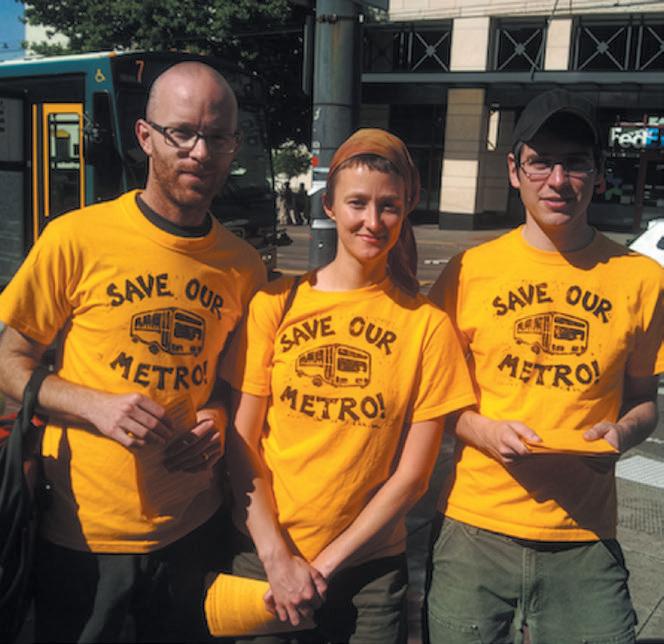
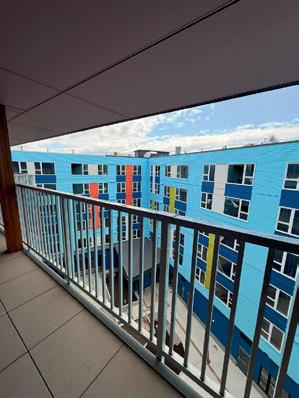
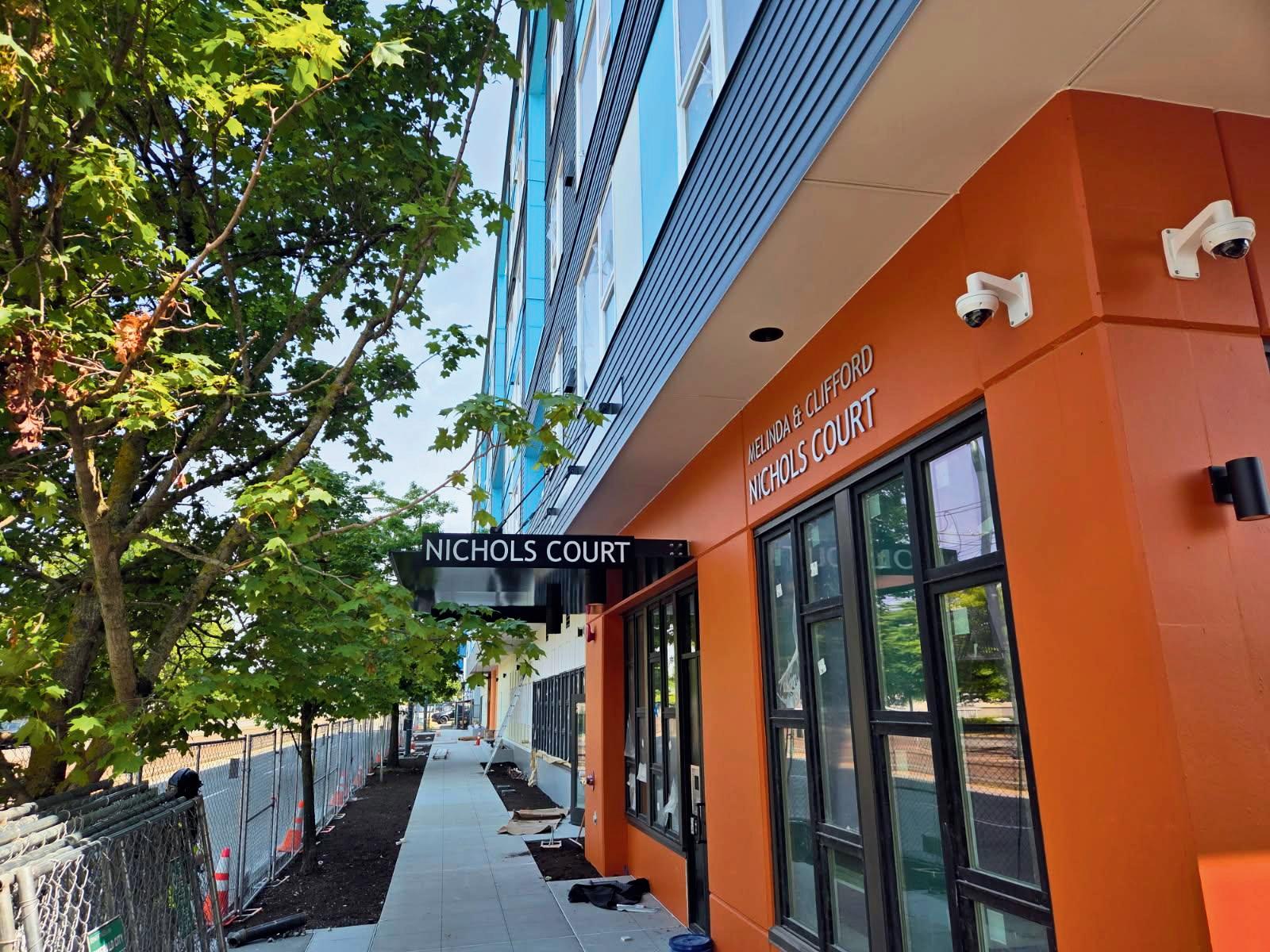




flyering down on Third Ave.—the big bus corridor—putting up posters and talking to bus riders. We didn’t know how to organize or anything, so we just thought, ‘Oh, we’ll do this, and all these people will show up to our rally.’ And then like 30 people showed up.”
They hadn’t even learned to collect contact information from protesters yet (“We thought that was cynical, or something,” Myers says). But some of the protesters wanted to keep fighting for their transit system. “It was a lot of figuring it out as we go,” Myers says. “It took us a year to figure out how to write a constitution and bylaws.”
And that’s how the Transit Riders Union was born.
For someone who has been in politics, but not a politician, for years, Wilson is rather private. The Transit Riders Union is where Wilson’s story starts for Seattle’s political left. Her brainy family, walking away from prestige, her blue-collar jobs, the long journey of political discovery—it’s not just less a part of her campaign than pizza, it’s not part of her campaign at all.
The first glimpse I got of just how much we didn’t know about Katie Wilson was at a political forum called Candidate Survivor. Hosted by The Stranger and the Washington Bus, the forum includes a talent portion, where candidates are asked to perform. Wilson walked on stage with a guitar over her shoulder and a harmonica in a holder around her neck. She used to busk at Pike Place Market, she told the crowd. It’d been 10 years, though, she said, “so give me some grace here.” And she dove into a bluegrass standard.
How could someone running for Mayor of Seattle go months without telling voters that they’d been a busker at Pike Place Market? It’s the kind of narrative that politicos fall over themselves for. The stories that tell voters that this person really is a real person, not just a pile of ambition in a suit.
That’s a choice. Wilson has been running her campaign like she’s campaigned for minimum wage, progressive revenue, and renter protections. They were never centered on a person or personality, because that wasn’t the point. It was to build coalitions, find where groups had common goals, and pull power out of people by showing them that they agree with one another. That’s her special sauce. When her campaign broke out into the national media, The Nation magazine said she “launched her campaign like a social movement,” an exercise in “new progressive pragmatic political power.”
And it’s certainly not the only way she breaks from the Seattle mayoral tradition. Former mayor Jenny Durkan owned a $7.5 million mansion on Whidbey Island. Harrell bought his Seward Park home in 2011 for $1.4 million. Ed Murray owned his home on Capitol Hill and a vacation home on the Peninsula. Wilson and Myers rent a one-bedroom apartment in Capitol Hill. When they moved there in 2018, it was the first time in years they didn’t have housemates—a luxury they were only able to afford because that year, the Transit Riders Union was able to start paying her for her work. The apartment has four rooms: a kitchen, a living area, a bedroom, and a bathroom. Maybe four and a half, if you consider the small living room nook where Josie’s toys and clothes are tucked away.


Her building was built in the 1920s—a three-story walkup that was meant to help address a severe housing shortage at the time. It’s full of simple, original details: arched doorways, natural wood trim, and a built-in linen closet. And that’s just the bones. Myers was laid off during lockdown, and he used that time to single-handedly turn the apartment into an old-world, maximalist dream—ornate wallpaper cornstarched to the walls, painted ceilings, saturated velour couches. Their kitchen has two refrigerators and two ovens because Myers regularly makes homemade bagels and pizza. It’s all DIY and secondhand. And it works.
“Honestly, I’m more worried about my ability to put together a mayoral wardrobe than I am running the city.”
And when it’s a coalition, then there’s lots of organizations who are being paid to do the work as part of their time,” she says.
The challenge, then, was taking the sliver of attention that that incredibly talented group of people could give to her cause, and making it as effective as possible. And it worked. Like she told me the day before she announced her campaign for mayor: “I would be happy to put my legislative record up against Bruce Harrell’s any day of the week.”
Wilson decided to run for mayor after Harrell opposed the social housing proposition that ultimately got almost two-thirds of Seattle’s vote. Wilson saw it as the biggest fumble in his term, and a clear sign that Harrell was out of touch with the voters in Seattle. And maybe that meant he was vulnerable to a progressive challenger. She went home that night and told Myers what she was thinking. “I told her, ‘If you run for mayor, I’ll divorce you,’” Myers says. “But we stayed up all night long talking about it, and by the end of the night, I told her, ‘If you don’t run for mayor, I’ll divorce you.’”
“Honestly, I’m more worried about my ability to put together a mayoral wardrobe than I am running the city,” she told me, gesturing at the combination of Goodwill finds she was wearing that day. “I know so many highly skilled, competent people, people who’ve worked in City Hall for decades. I’m so confident in our ability to assemble this team, and really excited about it.”
The people she’s worked with over the last decade reflect that same confidence. When she launched her campaign, scores of people who’d worked with the Transit Riders Union sang her praises. And of course, Cain, the contractor, gave her the most glowing endorsement of all. “Katie Wilson is smart, tough, running for mayor…and a former Mike Cain Construction employee,” he wrote on Facebook after she announced her campaign. “She was outstanding at moving heavy stuff around job sites.”
But it’s also so small. Two people can’t be in the kitchen together without getting tangled. Their mattress sits on the floor. Josie sleeps in a Pack ’n Play in their bedroom until they go to sleep. Then when it’s time for them to go to bed, they carefully move her, Pack ’n Play and all, into the living room, where she sleeps for the rest of the night. They haven’t figured out what happens when she outgrows the Pack ’n Play, but they’re confident they will. They do a lot with a little.
The same can be said of Wilson as an organizer. She knows that understanding the world—whether in academia or in politics—is about knowing what she doesn’t know. And she follows that by finding the one person who knows the most about that thing, and makes them a part of her coalition. That’s how she got the city to buy in to subsidized Orca cards, renter protections, raising the minimum wage—every seemingly pie-in-the-sky victory that the Transit Riders Union won.
Until her mayoral campaign, she’d never had a team—even a small one—that was fully dedicated to the cause. “You need to herd cats, to get them all doing their thing.
When I talked to Cain, he talked about Wilson’s intelligence, her spunk, and how interested he was in how she found herself working in construction in Seattle. “Especially since she’d just dropped out of Oxford,” I added. The voice on the other side of the phone was silent. “I actually didn’t know that,” he said, with a note of surprise.
There’s a lot to be surprised by from Katie Wilson. Her ability to play guitar and harmonica at the same time. Her taste in home decor. That her favorite movie is Orson Welles’s 1965 Chimes at Midnight. I’m confident her parents and her Oxford professors have been floored by her at least once. When I first arrived at her apartment, she popped her head out of the doorway and waved me in. Her hair is usually tied into a careful knot at the back of her head with a series of bobby pins. But when I got there, her hair was still down. To my surprise, when it wasn’t wound into her signature bun, it fell almost all the way down her back.
While I watched her pin her hair up, I was reminded of the final impression Myers wanted to leave me with when we spoke. “I don’t pay very close very close attention to all the media. She might seem, on the exterior, staid and unflappable,” he says. “But inside, she’s a really passionate person,” he says. And she’s coming for the mayor’s office. ■
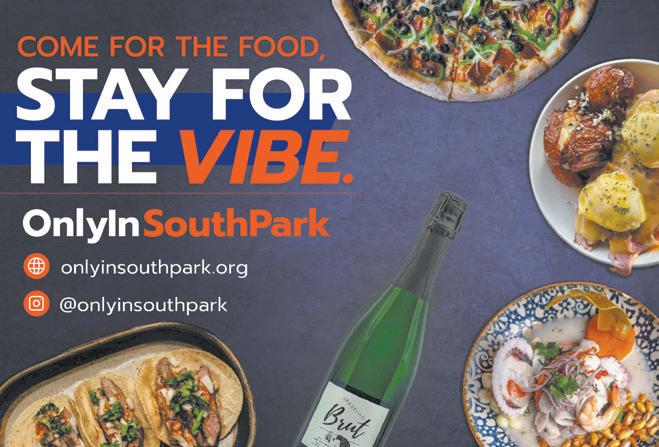
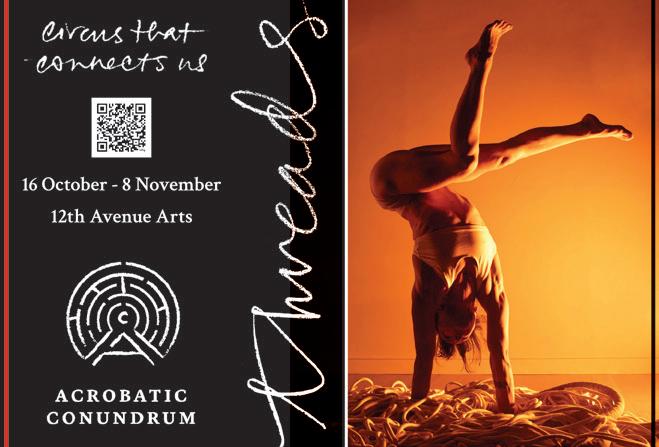


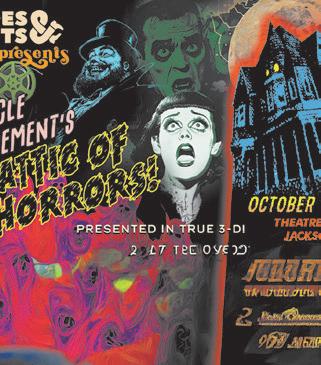
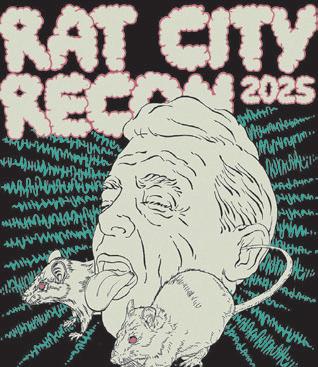
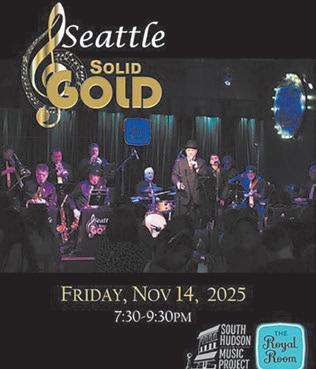


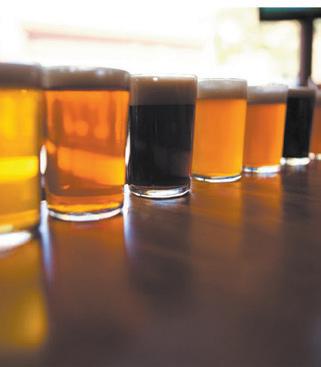
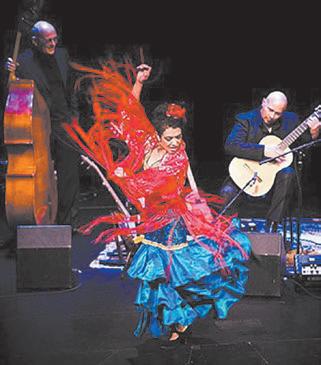
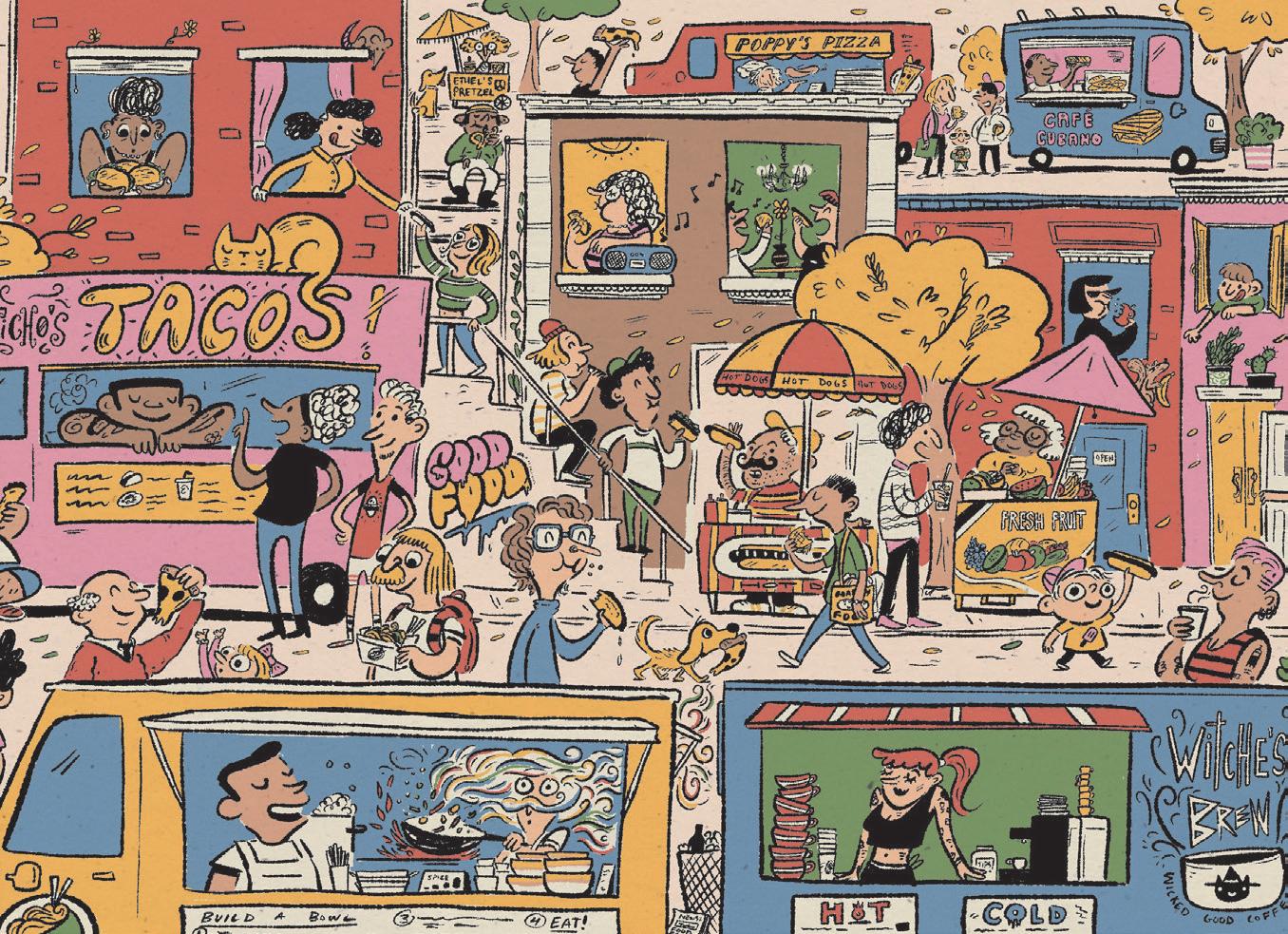
BY CHARLES MUDEDE
ILLUSTRATIONS BY JAMES YATES
It’s Friday night in South Seattle. I’m standing in a short line for tacos sold by what is officially called an “unpermitted pop-up vendor.” The setup is small and under a flimsy blue tent that’s planted next to a Rainier Avenue sidewalk. There is a table, two mild-mannered young men (they are brown and Indigenous), containers with salsas and other taco toppings, an iconic rotating tower of al pastor, a commercial-grade but portable griddle, a pot stewing beef brisket, and the whirring of a small Westinghouse gas generator. Behind all of this is a huge parking lot for a supermarket under a clear August sky.
In front of me is a young Muslim couple that looks like they might be recently married: arms tightly linked, a head rested on the other’s shoulder. A moment later, they walk into the night with their meal on a
paper plate covered by tin foil. I make my order. Beef brisket tacos. They are served in no time at all. One costs just $3. I eat them
At the end of the day, street food has to be good, because food is all a street vendor has. No table service, no manager. Just good food.
inside my partner’s car. It only takes a few bites for me to reach an important personal discovery: A great taco is nothing without
an excellent tortilla, and what makes an excellent tortilla is a distinct and dense (but not chewy) and even burntish earthiness.
And I’m not even a taco fan, but tonight the pleasure of this form of Mexican food that has for so long eluded me became apparent: simple, rich, short-lived.
As we leave the parking lot, I spotted the Muslim couple eating their tacos on the hood of a red car that’s not new. Others are doing the same on the hoods or inside of their cars: some are Black, some white, some in the dark. And as we turn onto Rainier, which has several unpermitted vendors here and there, I have that swelling feeling that is so important to the essence of my existence, the feeling that I’m in a city.
“Seattle, King County must enforce mobile food-vendor laws for safety,” roared the Seattle Times editorial board nearly a
year ago. The column was packed with outrage: “Authorities have every right to be concerned about the threat of foodborne illness,” “unpermitted sellers threatened the livelihoods of established restaurants and cafes,” “unpermitted vendors… don’t pay fees, rent, or possibly appropriate wages,” and so on. “There are no fines, and inspectors don’t confiscate carts or other equipment,” they complained.
“In Santa Monica,” claimed the board, “enforcement is conducted collaboratively between Code Enforcement, the Santa Monica Police Department and the Santa Monica Fire Department. That kind of coordinated effort is needed here.” (The Seattle Police Department has, so far, wisely decided to not to add this common infraction to its list of priorities.)
Though the board identifies small busi-

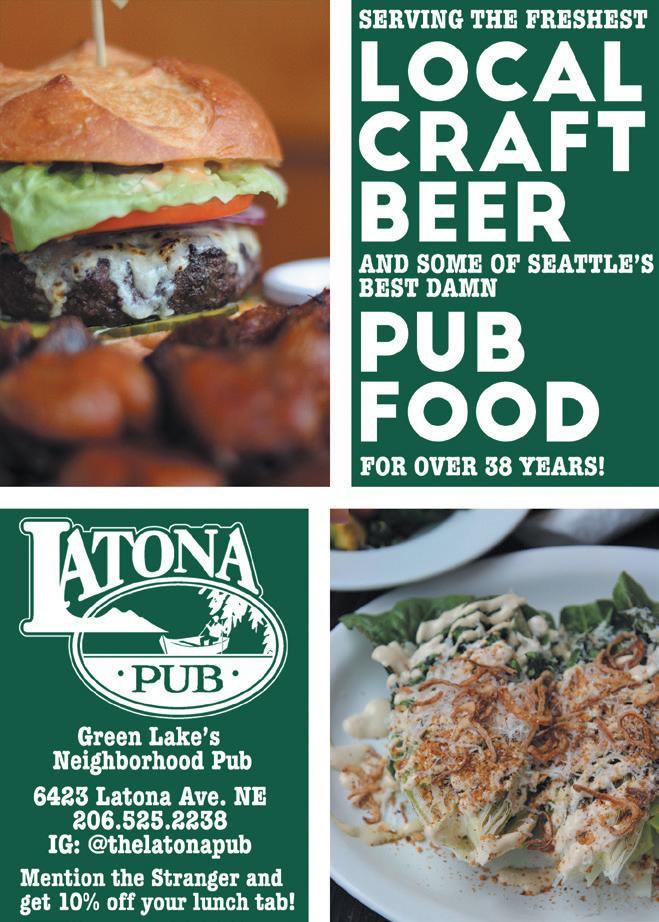

nesses that follow the codes and pay the fees as the primary victims of this outrageous law-breaking behavior, it conveniently ignores its most salient feature: Many of the vendors are not white. This fact represents a social/class factor that the board refused to consider because it would demand a deeper and less strident and more complex analysis of a cultural development that raises a host of very thorny issues.
More recently, the Capitol Hill Seattle Blog noted that the “Health Department’s unpermitted vendor crackdown has barely made a dent in Capitol Hill street food scene,” had nothing substantial or positive to say about the unpermitted vendors, often found near Cal Anderson Park, and often selling great food (check out the superb burgers sold by a multicultural crew of young men posted near the Black Lives Matter street mural), and instead reiterated the Seattle Times board’s concern for permitted businesses, which saw the crowds gathered around these venues as dangerous. “Late last year, Pike/Pine retailers, bars, and restaurants worked with District 3 representative Joy Hollingsworth to address the surge in unpermitted food vendors they said were creating public safety issues,” they wrote. CHSB was also unhappy about SPD’s decision to “not get involved.”
“They are just trying to make a living,” says a Mexican American woman who asked not to be named. She works in brickand-mortar restaurants around South Seattle, and she knows it’s not easy to get a legitimate business started in this very expensive city. And for many people, the sidewalk pop-up is not their only job. They do this over here and that over there to make ends meet. And most of the vendors can’t even afford to live in this city. They come here from Skyway and Burien.
“Of course, many of them prepare their food in their kitchens, even those who have figured out a way to get a permit—and there are ways of doing that—I know the food came from their kitchen,” she says with a dry burst of laughter. She describes an old woman from Guatemala who has a table in the heart of Beacon Hill. “Eating her food is like eating at her house. No difference. That’s why people like it so much.”
Oddly enough, I found King County’s Food Safety Program manager, Dr. Eyob Mazengia, to be more sympathetic than
the Seattle Times and other outlets. During our conversation he immediately points out that most of the closures conducted by his department are “Hispanic,” and so they are trying to work with community organizations to resolve this unappetizing matter. He knows that many of the vendors are really just trying to make a living, and doesn’t want to criminalize them. But he has to do his job, which is to protect the city from vendors who are not cleaning their hands or preparing the foods properly.
are collaborating [with manufacturers] and looking into vendors at this point to see [if we can] actually collaborate [to make carts] that make sense… so that the [entry] costs hopefully will be reasonable.”
But that’s a long term-plan. What’s needed today are policies that keep vendors outside of the shadow of crime. And so I wonder if the best solution at present is just to inform people of carts that are permitted and those that are not and leave it to the customer to decide what they will
I have been to the pop-up on Rainier twice. It’s nothing but a party there. Long lines. Music blasting. People having a good time and eating in an abandoned parking lot. As for the taco spot on Beacon Hill, I go there at least once a week, because I can’t find a brick-and-mortar business that comes even close to their Mission District–grade burritos. None. Indeed, when I have visitors from New York City, I take them there because I want them to see that I’m not in the middle of a cultural nowhere—that Seattle is

“We are offering a one-time 50 percent reduction in operational permit cost,” he says. “So, we’re [trying to] lower the financial barrier a bit, granted that the permitting cost is not a significant cost for starting a business.” The significant cost is, in his opinion, access to a commercial kitchen. So “for beginners, [we are giving] them up to six months of free access to a commercial kitchen.”
It’s a start, but not a solution. When I ask if there’s something innovative that he thinks his department can do, something that’s way outside the usual law-and-order formula, he thought that design changes to carts is of great importance. The present ones are really for hotdogs and hamburgers. What we need, he points out, are carts that match the needs of other cultures. “We
and will not put in their stomach.
At the end of the day, street food has to be good because, as my Mexican American friend explained, the food is all street vendors have. No ambiance, no table service, no manager to direct your complaints. “You want people to come back. Bad tacos [are] not going to do that,” she says. “That’s why I go to the [taco vendor] on Rainier, which I think is run by the same guys on Beacon Hill. It’s a great deal and it’s so good.”
The KEXP DJ Riz Rollins also knows this place on Beacon Hill. It has “saved his life” when he needed something good to eat at 3 a.m. And isn’t that just what a city should be? It never sleeps, it’s constantly mixing and introducing cultures from around the world, and it’s always generating new and soul-expanding encounters.
not just about big tech, the Space Needle, and people throwing fish at the Pike Place Market. No. This is a real city—one whose fringes are not cold, but sparkle like the stars at the edge of the Milky Way.
The joint on Beacon Hill has become legendary. And yes, we all know it’s flying under the radar. We all know what we are getting into. But the place has never made me sick, which I can’t say about that licensed and regularly inspected Seattle deli that made me so sick that I couldn’t eat a thing during a short visit to Rome, one of the world’s culinary capitals. And what did I miss in Rome, one of the oldest cities in the world? The vibrant street food culture.
Seattle is growing. We are becoming big. And with a big city, comes big, delicious food tents. ■
Last November, four Capitol Hill street food vendors were shut down in one night. Local blogs called it a “crackdown” on unpermitted vendors—a term the Public Health office of Seattle and King County does not appreciate. King County’s Food Safety Program manager, Dr. Eyob Mazengia, emphasized that they’re “doing more than just closing businesses.”
In addition to permit enforcement, they’re providing “guidance and support to vendors,” he says.
“We do sympathize with people who are

out there trying to make a living.” Still, he says, the permitting process, for restaurants and street vendors alike, is meant to protect the public. “I mean, we’re not talking about just simple illnesses or inconveniences for a day or two,” he says. “It could result in chronic illness, it could result in kidney failures, it could result in death and hospitalization, right?”
So is there really a crackdown? And is it warranted? We decided to look at the numbers— some of theirs, and some of ours.
Number of unpermitted food vendors shut down by authorities in 2023:
BY JULIANNE BELL
PHOTOS BY CHRISTIAN PARROCO

If you’re near the southwest corner of Cal Anderson on a Saturday night, you might catch a whiff of the smoky aroma of charcoal-grilled beef.
Follow that scent and you’ll find brothers Osiel and Reynaldo “Rey” Gastelum behind the grill of their taco stand, Tacos Cometa, serving Sinaloan-style carne asada tacos that you can’t find anywhere else in the city, heaped with chopped red onion, cabbage, and tomato salsa, and served with a cold wedge of cucumber.
Hungry regulars congregate beneath a white tent lit by string lights, as beef sizzles on the flat-top and Osiel deftly chops cooked meat on a wooden cutting board with a cleaver.
You might not know it, but those tacos are the end result of a decades-long journey that started with home cooking in Sinaloa, Mexico, with stops at some of the world’s most exclusive three-Michelin-starred restaurants along the way.
Rey and Osiel spent their early years in Culiacán, the capital of Sinaloa, surrounded by an abundance of seafood and produce. Their parents, who were generous hosts
and the best cooks in each of their respective families, routinely entertained on weekends, feeding friends and family “too much food.”
Some of Rey’s earliest food memories are of his parents making gigantic portions of barbacoa, which is traditionally made by slow-cooking meat until it falls apart in tender shreds and varies according to region.
“Barbacoa in Sinaloa is a little bit different,” says Rey. “We use chilies to make a marinade with beef and a little bit of pork rib, and we would make huge batches of barbacoa. I remember as a little kid helping out and the smells that would come out of the kitchen. It just makes you hallucinate, it’s so good…The end result was magical to me, that transformation.”
Osiel recalls his dad, a dental technician with no restaurant experience, making “massive meals” with advanced techniques, including tacos de cabeza. “I remember him just coming home with this whole cow’s head and just steaming it,” he says.
Their parents passed their love of food to the next generation. Rey went to culinary school in Orange County, and Osiel, who is two years younger, attended cooking
school at Universidad Autónoma de Durango’s Sinaloa campus. After graduation, Rey moved to San Sebastián to train at the three-Michelin-star restaurant Martín Berasategui. He returned to the US to work for the high-end Italian restaurant Acquerello in San Francisco, then spent seven years in
“I remember as a little kid helping out and the smells that would come out of the kitchen— it just makes you hallucinate.”
Paris at esteemed institutions like Le Gabriel and Marsan by Hélène Darroze, and serving as sous chef at the historic Michelin-starred restaurant, Hugo Bourny at Lucas Carton. Osiel spent a few years after school working in some of the best restaurants in
the Bay Area. In 2016, he joined the team at famed chef Dominique Crenn’s three-Michelin-starred flagship Atelier Crenn and worked his way up the ranks from commis to sous chef. Over the next few years, he worked under Aitor Zabala at Somni in Los Angeles, developed his butchery skills at Curtis Stone’s steakhouse Gwen, and became the chef de cuisine at Stone’s restaurant Gwen. With years devoted to the culinary grind, both brothers decided that they wanted to start a formal sit-down restaurant of their own. The two scouted multiple locations, including Florida and Texas, and eventually landed on Seattle, because of its high-quality seafood and produce and the changing seasons. On a research trip in September, they tried a taco in Seattle and came up with the idea to start a taqueria instead, realizing they could offer a product unlike anything else in the area. They wanted to pay tribute to the regional tacos they grew up with at their favorite stand in Sinaloa, which are charcoal-grilled and feature the aforementioned finely chopped cabbage and red onion. Rey says the goal is to “make Seattle known for amazing tacos, to put it on the map along with LA.”
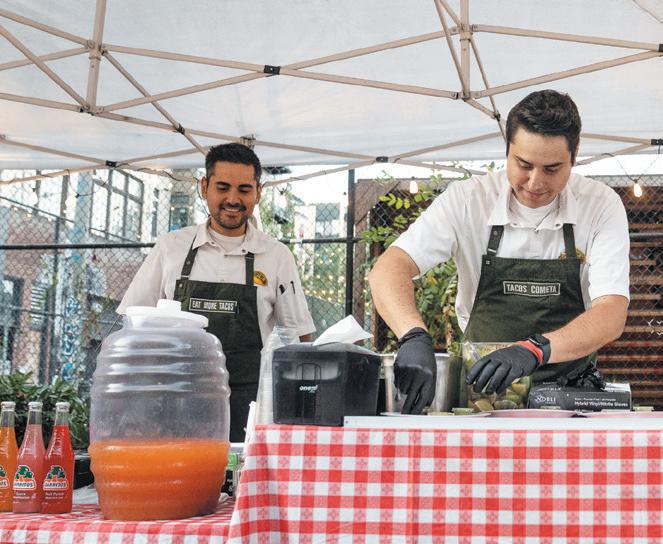
“Cometa” means “comet” in Spanish: they’re “rare,” “bright,” and “unforgettable,” which is the experience Rey and Osiel want people to have when they try their food. The menu is straightforward: tacos, quesadillas, vampiros (a popular Sinaloan street snack with an open-faced, griddle-toasted corn tortilla, layered with melty cheese and taco fillings), and aguas frescas. And if you’re lucky, you might catch them on a day they offer alfajores, melt-in-your-mouth sandwich cookies filled with dulce de leche.
The brothers are constantly tasting the food and adjusting the seasoning, working off their experience and memories. “We focus on simplicity. We don’t overcomplicate it,” says Rey. “Our meat, for example, there’s no marinade. What we do is have really good quality meat and the charcoal and the love and the time. This is what makes it a good taco.”
Osiel believes that a Michelin-starred kitchen is not as different from a taco stand as one might think. He uses similar techniques and has learned from fine-dining to focus on restraint. “It’s the attention to detail,” he says. “You can have the exact same ingredients at both restaurants, but if you focus on the different details, you’re going to have a different result.”
Rey and Osiel are in lease negotiations for a storefront not far from their spot at Cal Anderson and hope to open a permanent location by March 2026. They just launched a crowdfunding campaign on Kickstarter, with incentives for supporters that include salsa packages, merch, cooking classes, three-course meals in your own home, and a private taco party. In the meantime, find the taco stand on Fridays in Fremont, and Saturdays at Cal Anderson.
The brick-and-mortar menu will be largely the same, possibly with some rotating specials, such as a taco with pescado zarandeado, based on their dad’s recipe— butterflied red snapper coated with a blend of mayonnaise, soy sauce, and butter, then grilled over charcoal. Rey says they aren’t sure yet whether they will have access to an oven, but that they will try their best to offer the alfajores, even if that means baking them in a different kitchen. The vibe will be “minimal” and unpretentious, to maintain
the feeling of a street taqueria.
At times, navigating the hurdles of Seattle’s health department laws has proved a challenge. However, counter to any stereotypes about the Seattle freeze, Osiel and Rey say they’ve encountered only warmth and kindness from the city’s chefs and restaurateurs. “There’s been a huge sense of community,” Rey says. “It seems like people are there to help and not screw you over.” Chefs at local restaurants Driftwood and Le Coin contributed guidance and leads for purveyors, while others have shared tips on navigating the process of opening a restaurant.
Chef Keiji Tsukasaki of LTD Edition Sushi, located near Tacos Cometa, even once bought a round of tacos for his restaurant as the last course of his omakase menu and regularly orders tacos for his staff toward the end of their shifts. “That feels pretty special, to have a connection with someone who’s doing something super cool in Seattle and have them validate you,” Osiel says.
Since opening in late December 2024, Tacos Cometa has attracted a loyal following, with some fans attending religiously nearly every day they’re open. “Nothing makes me happier than just standing at the taco stand, watching someone take the first bite and smile,” says Rey.
As for their food-loving family, they couldn’t be more proud. Their parents traveled from Culiacán to visit and beamed when they tried their sons’ tacos—especially their dad, who’s harbored a hidden dream of opening a taqueria all his life. He was less than impressed by a multi-course tasting menu at a prestigious restaurant managed by Osiel last year, but a few hours after getting off the plane to Seattle, he was hanging out behind the stand, manning the grill.
“When we got into fine dining, he didn’t really understand it. He was always like, just stop doing that and open a taco shop or a skewer shop or something like that,” says Osiel. “So I think now that he sees us doing a taco shop, he’s super excited about it, because it’s something that he understands, something that he can contribute to.”
“He’s seen us working in Michelin-starred restaurants and working with amazing chefs,” says Rey, laughing. “It’s like, no. Now we’re proud of you.” ■


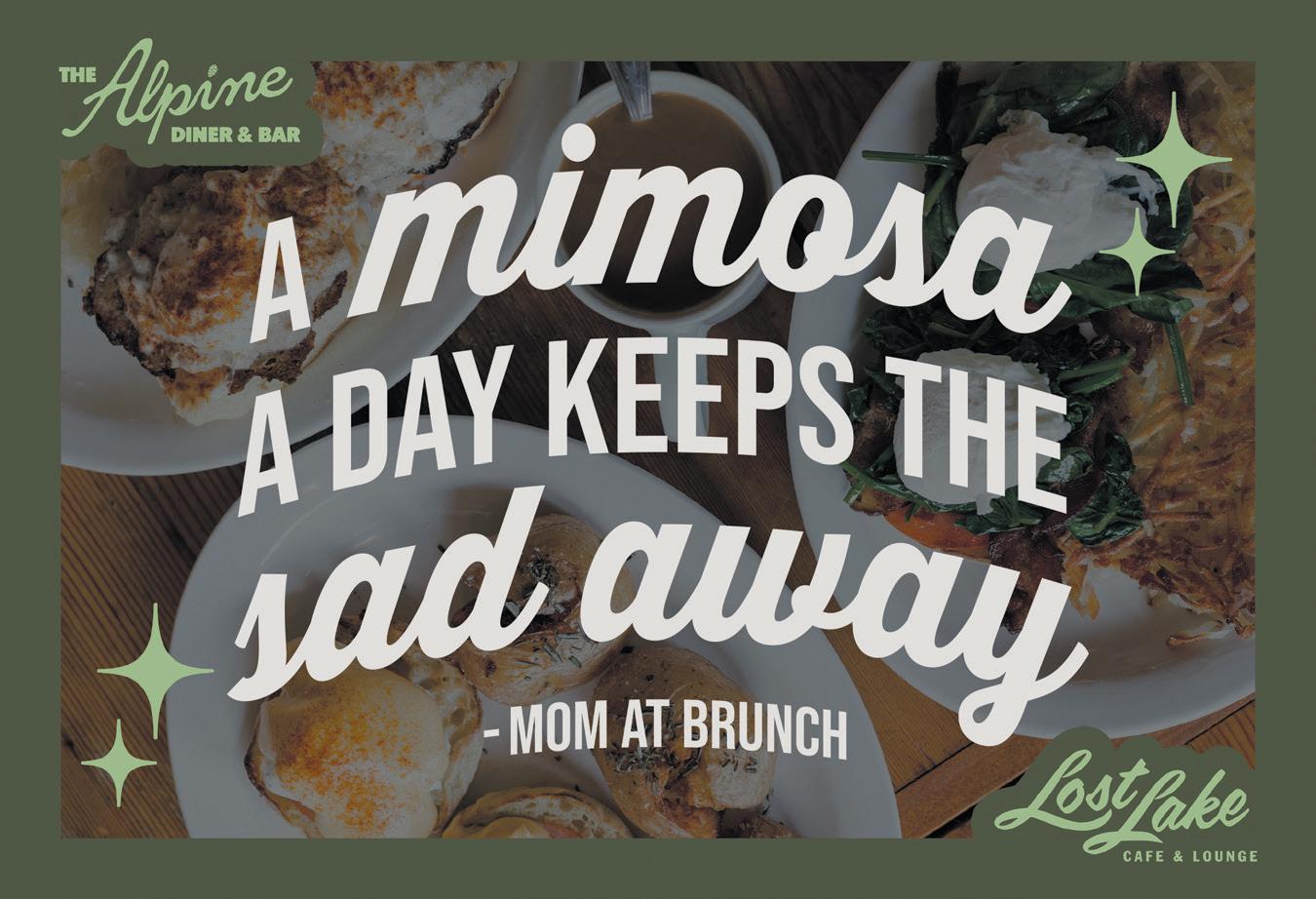







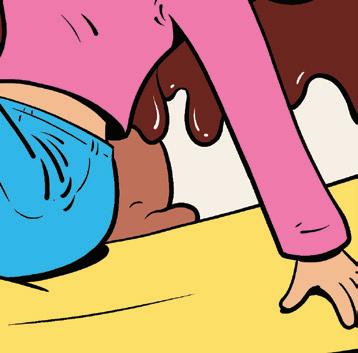





BY AUDREY VANN
When was the last time you ate a banana split? I asked myself this question and drew a blank. I remember loving the indulgent triple-scoop sundae, and I was certain that I’d had one, but with no specific memory of when or why. Was this a false memory, shaped by a childhood full of banana split scratch-and-sniff stickers and images of wide-eyed children in books ogling them through shop windows?
It’d make sense. My love for the banana split is primarily visual. The dessert, traditionally served in a glass boat, has so many textures, colors, and shapes that looking at it gives me the same satisfaction I feel when looking at a bowl of Trix Cereal or a freckled Tutti-Fruitti Jelly Belly. But the banana split is more enigmatic. It’s not a casual snack. There is no perfect occasion for such a dessert—it’s not traditionally served on birth-
days, or any holiday, for that matter. And you can’t eat it on the go.
With a craving, I began researching where to get the archetypal American dessert in Seattle—it was supposedly invented in Penn-
I panicked and chose gummy bears and rainbow sprinkles. This proved to be too much.
sylvania in 1904—but the only insight I found was a three-year-old Reddit post filled with more questions than answers and a 15-yearold Slog post (written by our own snack critic, Megan Seling), which cites establishments
that are long gone. So, I did the lord’s work: I searched through every single diner, ice cream shop, and soda fountain menu in Seattle and Burien and mapped out a quest to acquire the old-fashioned sundae of my childhood dreams.
The banana split I yearn for is something close to the original early-20th-century invention: three types of ice cream (chocolate, vanilla, and strawberry), three sauces (fudge, strawberry sauce, and—and this is important!—crushed pineapple), whipped cream, and cherries, all composed between two lengthwise slices of a freshly peeled banana. After much online investigation, I was able to taste-test five banana splits over the course of three days (that’s a total of 15 scoops of ice cream) and send the receipts to my employer to make them pay for it.
While I had expected a stomachache, I did not anticipate the psychological impact of
asking for such an indulgent, inconvenient, impractical, and childish treat back-to-back in ice cream shops across the region. Each time I watched the server scramble around the kitchen for the menagerie of elements, I felt ashamed that I wasn’t ordering a simple ice cream cone.
But I did it for you, Seattle.
The Great American Diner & Bar $7.99
I walked into the West Seattle Junction’s American Diner and was seated by a kind waitress who handed me a menu. “I actually already know what I want—can I just get the banana split?” I asked, sliding the menu back across the table. “Sure, I’ll go make that for you right now,” the waitress said with a tinge of panic in her eyes. Less than 10 minutes later, she returned with a large dinner plate topped with three scoops of ice cream



(chocolate, vanilla, and strawberry) between two broken banana halves, and it was topped with whipped cream, chocolate sauce, almonds, and rainbow sprinkles. “Does that look okay?” she asked with uncertainty. I felt the need to validate that she did a great job. “Does anyone ever order this?” I asked. She threw her head back and laughed. “No, not while I’ve worked here!” she said, relieved. “I was nervous to make it, but it was actually very fun to decorate.”
$8.49
The next day, I tracked down my nearest Baskin-Robbins. I was not expecting much from the strip mall chain in the Burien Safeway parking lot, but they delivered. As I walked in, I was relieved to see that they actually had a banana split on the TV screen menu with a glorious photo of the cherry-topped treat. Although once I told the teenager behind the counter what I wanted, I could feel her annoyance. She peeled and sliced a fresh banana, which I saw hanging on a special rack in the kitchen. She scooped the three flavors of ice cream—chocolate, strawberry, and vanilla—then doused them
The
more banana splits I ordered,
the more I became convinced that they are the espresso martini of the ice cream world.
in three different sauces: marshmallow, hot fudge, and a jammy strawberry syrup. Then, she topped each scoop with a crown of whipped cream and three maraschino cherry halves. It was presented to me in a special plastic dish with a lid that was specifically designed for banana splits.
$6.99
In true fast-food fashion, Dairy Queen was the smoothest procurement and most accurate to the original recipe. This could be in part because I ordered it through the drivethrough, so any confusion or annoyance (which, to be clear, I completely understand) would have been out of my view. The beautiful dessert, served in another special container (which was shaped like the DQ logo), was handed to me within seconds of placing the order. The quality was higher than you’d expect from a fast food chain—three twirls of vanilla soft serve between a surprisingly fresh banana, topped with crushed pineapple, strawberry sauce (with actual strawberry chunks!), chocolate syrup, and thin whipped dairy topping. Because Dairy Queen’s soft serve famously contains very little butterfat, it can’t legally be called “ice cream.” The dessert was by far the lightest and most refreshing of those I tried.
$10.99
The Ben & Jerry’s banana split was a lot
The split banana held three scoops of ice cream of my choice (strawberry, chocolate
fudge brownie, and Cherry Garcia) and was smothered in hot fudge, caramel sauce, and real whipped cream. Before it was complete, the server told me to choose two toppings. I panicked and chose gummy bears and rainbow sprinkles for the visual appeal. This proved to be too much, especially as it was my third banana split of the day. The server seemed especially chipper and remarked, “I love making banana splits!” I have a feeling she wouldn’t have said this if the shop were not empty.
Lil’ Tiger Ice Cream
$11.25
On day three of the mission, I was mentally and physically burnt out on this dessert, so the fact that I enjoyed Lil’ Tiger’s banana split should say a lot. I was greeted with a sandwich board sign advertising banana splits, which felt like open arms outstretched to welcome me. The server didn’t blink an eye when I ordered, and asked me what flavors and toppings I’d like. I went with the classic ice cream flavors with hot fudge, strawberry syrup, whipped cream, and sprinkles, forgetting to add nuts. Lil’ Tiger’s homemade ice cream was decadent, soft, and flavorful. I found myself digging into the rich vanilla bean scoop more than any other, which is out of the norm for me.
Solidifying my theory that the banana split is the most arduous dessert, I asked Pike Place’s Shug’s Soda Fountain over the phone if they still served the tantalizing “Banana Brûlée” split. They told me that it goes on and off the menu, depending on how busy they are. “Once people see it,” they told me, “they all want it, and it takes a while to make, and it slows the line down significantly.” This is understandable, considering how delicious it sounds. Per their Instagram, the treat consists of “creamy vanilla ice cream, topped with warm caramel sauce, crunchy pecans, brûléed bananas, whipped cream, and a Toschi cherry on top.” I decided not to risk it.
“So, you feel bad about ordering it, even though it’s being offered on the menu?” my analyst asked me, at a regular appointment in the midst of my banana split marathon. I expressed my guilt for taking on this seemingly meaningless project and inconveniencing the teenage server at Baskin-Robbins, who looked increasingly stressed as a line formed behind me. I knew it wasn’t rational, but at the same time, anyone who’s worked a service job knows the lack of self-awareness that customers can have. The more banana splits I ordered, the more I became convinced that they are the espresso martini of the ice cream world. But that doesn’t mean that you should avoid abundance completely at the risk of inconveniencing others.
So if you’re gonna get one, you should get a good one. While I am hesitant to award a mega chain as the winner of this experiment, Dairy Queen has mastered the art of the banana split. They’re the only ones to offer a sundae that has traditional crushed pineapple. That said, Baskin-Robbins was the only sundae with three ice cream flavors and three sauces. As far as local institutions, Lil’ Tiger leads with the yummiest, most quality ice cream. So, this month, while the weather is still nice, order yourself a banana split. But be mindful of your surroundings, be grateful to your servers, and tip well. n
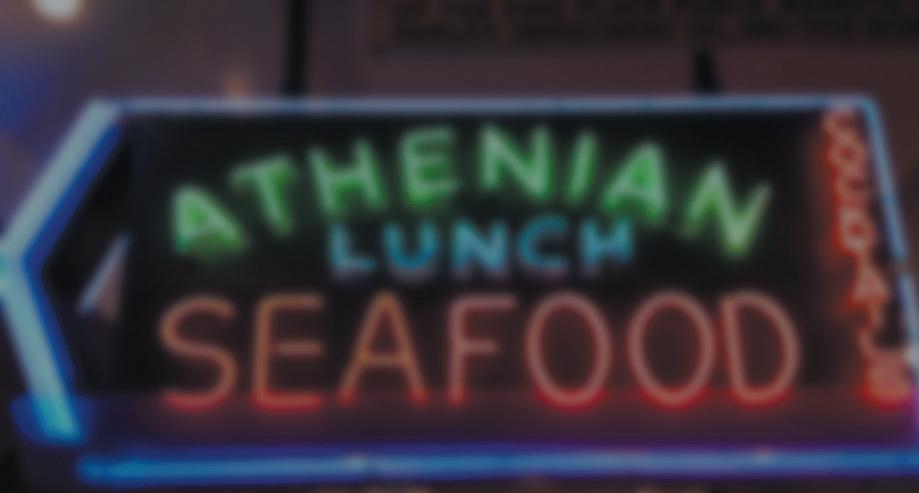
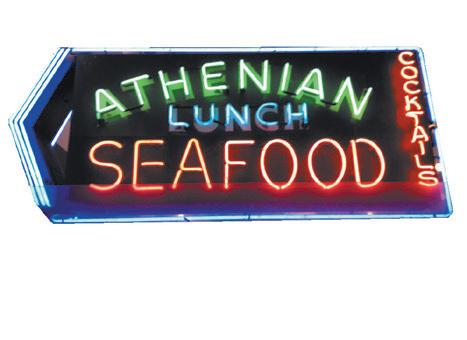


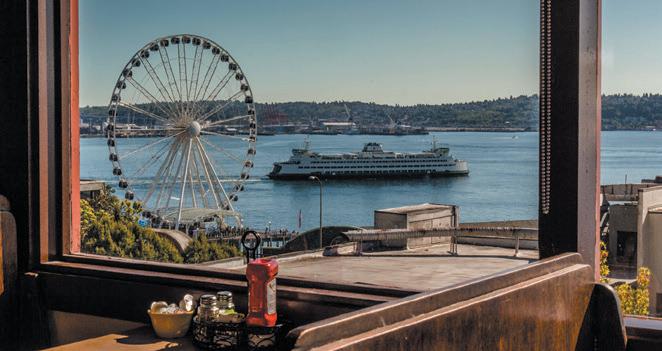

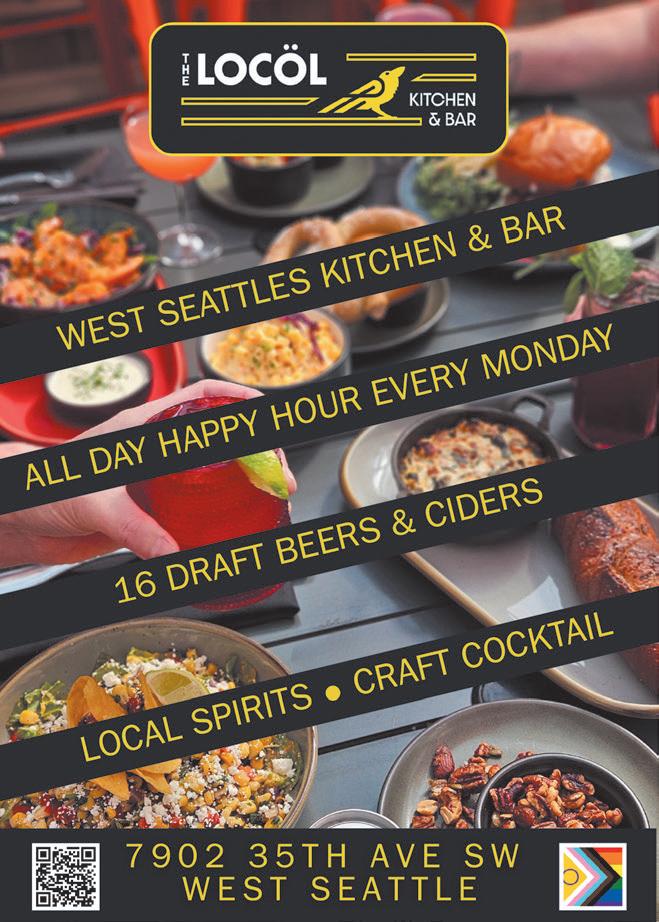

BY MEG VAN HUYGEN
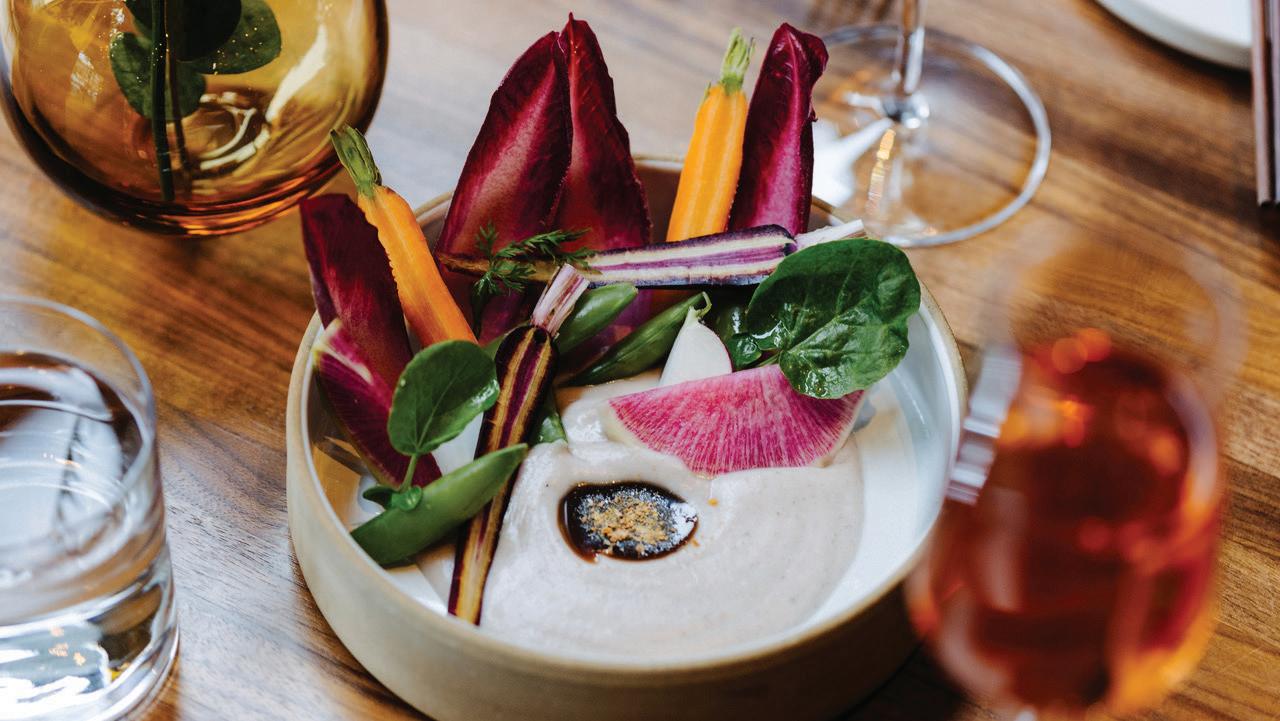
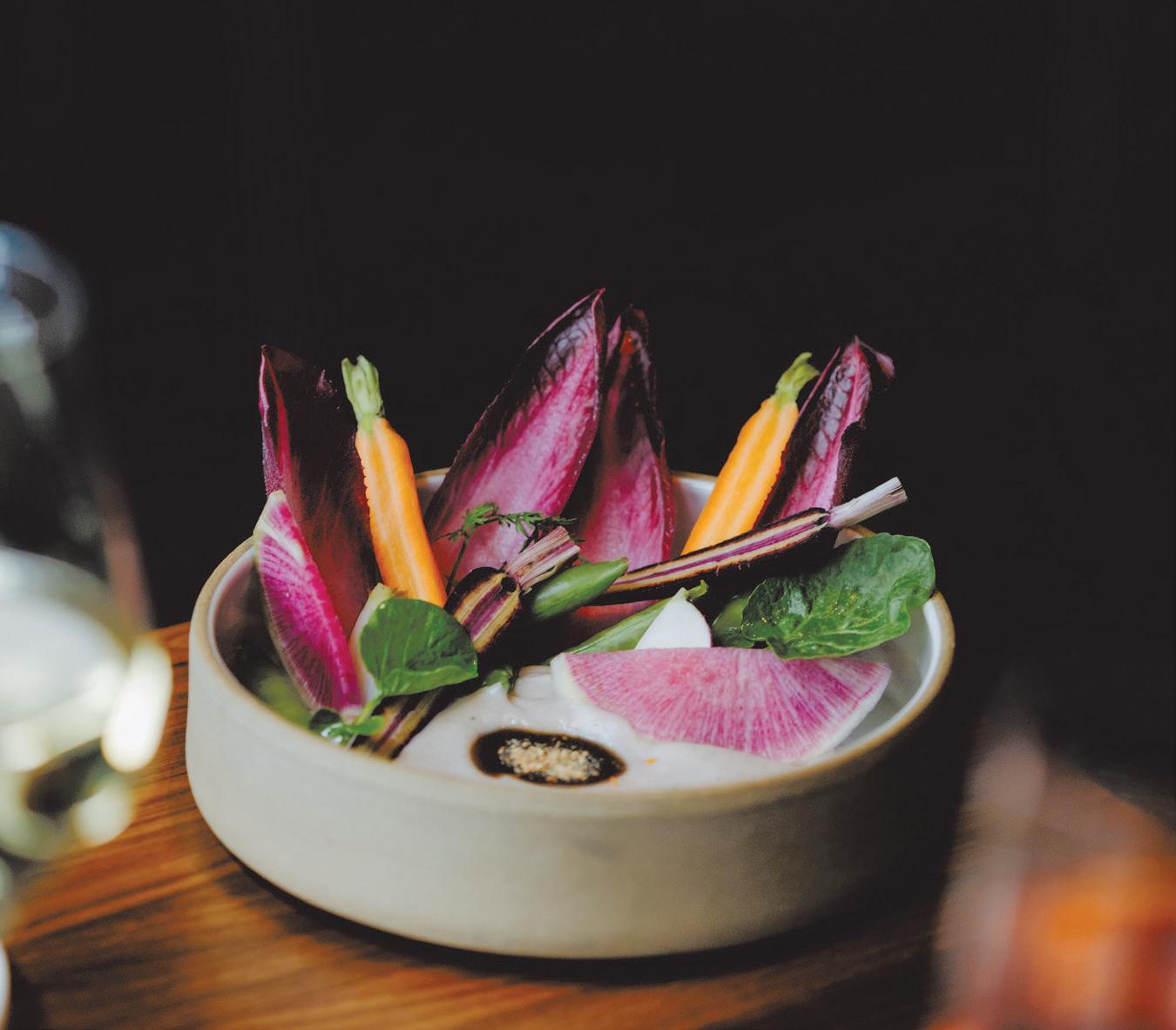
Gee, it sure is hard to write about fancy food when the nation is swiftly descending into fascism, we’re all broke, and restaurants become more of a luxury every day! Sorry to be grim, but… a food writer questions whether their efforts might be better spent on, say, grant writing or political manifestos lately. Why am I still doing this again??
Well. Because food is art, and our artsy city is packed with food geniuses who’re still out there doing innovative and delicious things in the face of our crumbling democracy. Even if we don’t go out and eat all the art personally, we can still be dazzled by the concepts.
As well, Seattle’s restaurant industry is a close-knit community of lionhearted saints who have been dedicated to hosting fundraisers and donating meals and selflessly serving another much larger community (that’s you) as the world burns, so let’s give them their roses. Restaurants are community spaces, and that includes popups and food carts to a degree. Even with all the appalling bullshit going on in the
world, our chefs are continuing to make fantastic food, constantly coming up with new concepts, and connecting people to one another.
Since we all gotta eat a couple times a day, below are some good local places to do that, owned by good people who make great food and give a shit about our community. An effort was made to include restaurants with veggie and vegan options, as well as places with flexible formats, where you can stop by for a full meal, a snack, or even just a beverage. As ever, these best-of rosters are really just a list of suggestions based on what the writer happened to eat this year. Here’s hoping there’s something on this list for everybody, and that here in Seattle, in these fucked-up times, we all can try to help each other stay fed.
Cafe Suliman
CAPITOL HILL
Ahmed Suliman is kind of a Seattle hospitality industry legend. Pick a local restaurant at random, ask a staff member if they’ve worked with Suli, and they’ll probably start regaling you with stories about what a great
dude he is. His name comes up organically a lot, too—this has happened to me a couple times this month alone, and I don’t even know the guy. After all this suspense and foreshadowing, you might wander into Cafe Suliman and expect some kind of golden… bejeweled… palace… of a restaurant, because
Our city is packed with food geniuses.
he’s clearly regarded as industry royalty. Instead, it’s in the wide-open commons of Melrose Market. There are only three walls. One might be a little unsure of how to approach the setup at first—It feels like a mall food court, but with table service… and wine? But the answer is to just sit down. The menu’s based around dishes from the Arabian Peninsula—Suli himself is a Sudanese national who grew up in Abu Dhabi, and the restaurant is in part a tribute to his late mom, Afaf. Longtime local wine guy Marc Papineau (Lecōsho, Bar Ferdinand) also runs his
Cantina Sauvage project out of the same space, providing natural, un-fucked-with wines to complement the seasonal menu.
Although the dishes change all the time, there are truly no misses. If there’s chicken and you eat chicken, order the chicken; right now, it’s served with freekeh and a fermented green garlic sauce. If you don’t, you’re in luck, because Suli is SO good at veggies. Some recent hits are the carrots with whipped feta, the charred cabbage with green chili butter, the bright fattoush, and the luscious grilled halloumi with dukkah, quince, fennel, and leeks. Meaty people, aim for the fragrant lamb on hummus. For dessert, there’s latterly the summery olive oil cake with rhubarb cream and tangerine oil. Even the luxurious little toasts—like the turmeric cauliflower one with labneh, pickled sultanas, and green olive relish, served on award-winning Ben’s Bread from up in Phinney Ridge—are a full sensory meal, down to the vibrant visuals. To me, this is the perfect Seattle restaurant. A balanced dovetailing of casual and snazzy with some flavors from faraway lands, pretty vintage plates, a killer wine list, and a chill, chatty vibe. It’s for shooting the shit with a
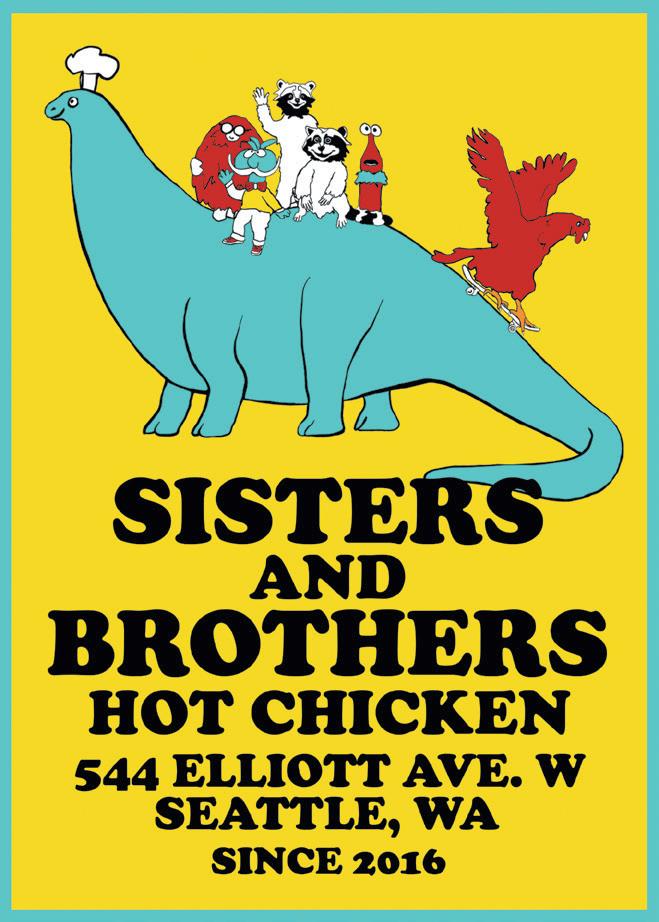
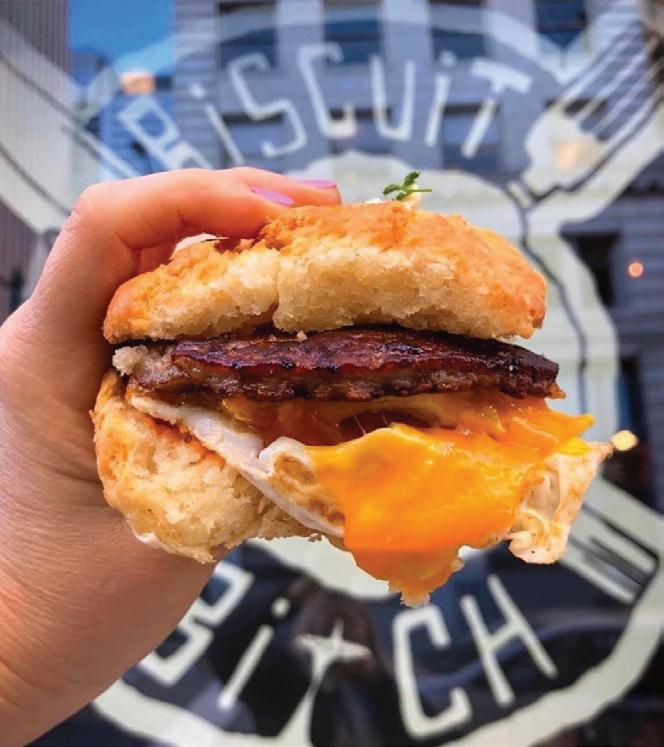

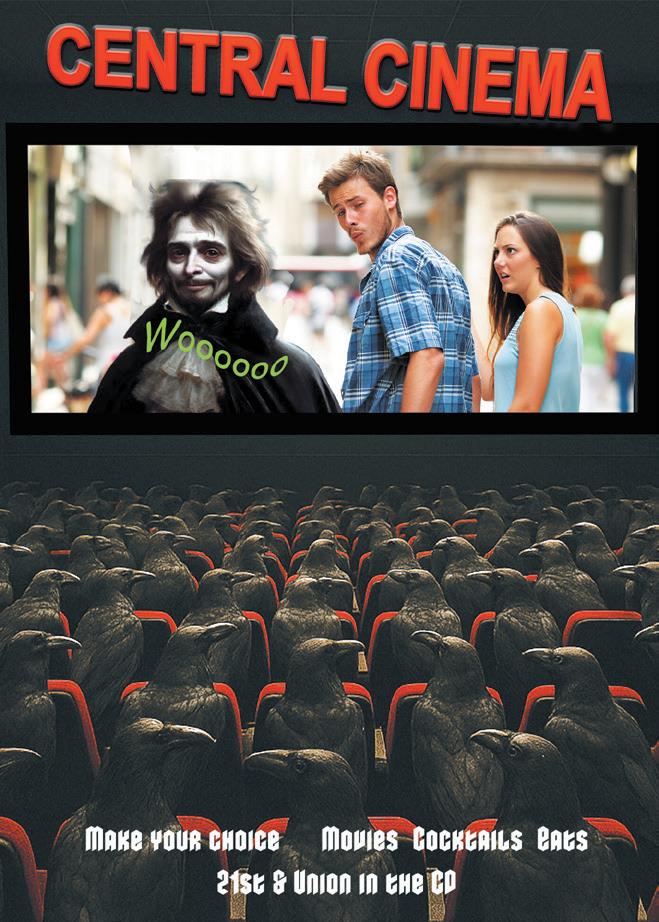

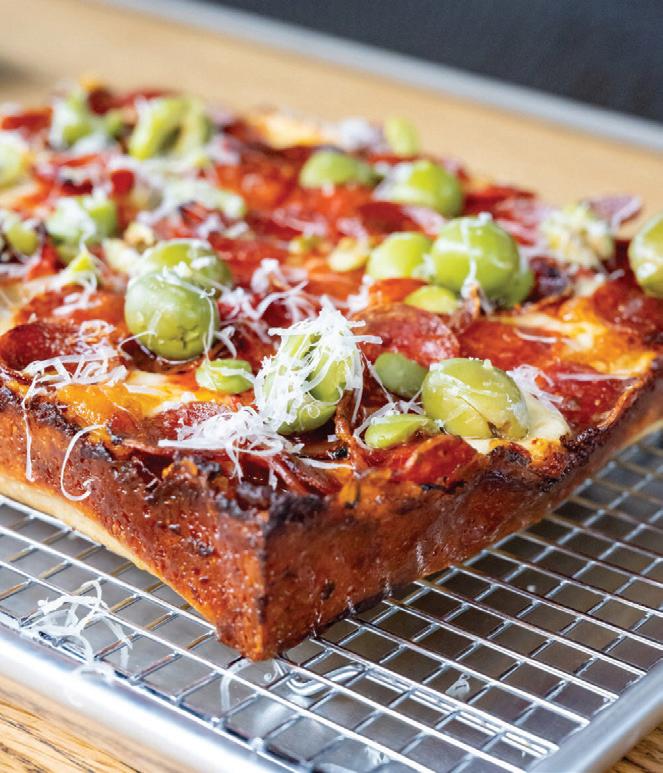
friend or three. The menu is modular: order a little food, order a lot, or just order drinks. In an era where even Canlis can’t enforce a dress code, Cafe Suliman provides what today’s overworked, borderline-broke Seattleite wants: an affordable and customizable menu, a little style and intrigue, and an opportunity to be comfy while eating opulent, gorgeous food in your hoodie.
When the COVID-19 pandemic began, so did a nationwide trend of Pizza That You Cannot Have. That’s where someone starts selling a regional style of pizza, usually as a pop-up, and then they’re immediately booked out for four months, ostensibly because transplants lose their minds over finally being able to get an authentic Milwaukee tavern pie or some processed Provel cheese on a cracker crust per St. Louis or that Altoona-style opioid-inspired pizza felony with the American cheese (don’t google this). Folks love a limited-time offer. Doesn’t seem to matter what style pizza it is, as long as it’s hard to get. Here in Seattle, when everyone was clamoring about Detroit-style pizza in particular, former Michigander and web developer Derek Reiff did this, too—and was helped immensely by the fact that his pizza is very, very good. So good that, after selling special pizza out of his house for a while, he was able to set up his own shop this year, in a slender slice of a space next to Tangletown Pub.
Derek’s Fav is the main protag here; it comes with pepperoni, green Castelvetrano olives, and Grana Padano, although the rich red pools of pepperoni oil are their own standalone condiment. It’s more casserole than pizza: a two-person slab cut into six squares, with hella frizzled frico at the edges and a tall, dark crust that’s so caramelized in places, it’s almost black—but definitely not burnt.
are cutting loose from tradition in their newest project, restyling and freestyling old dishes and creating completely singular new culinary concepts in the process.
Right off the bat, the radicchio pudding starter is astounding—it’s a vegan take on tiết canh, a duck blood pudding from Northern Vietnam. Usually, the dish is made with pork meat and duck gizzards, but Ramie’s version combines cucumbers, honey-roasted walnuts, roasted peanuts, rice crackers, a peppery pesto made from rau ram (Vietnamese coriander), and radicchio, from which the pudding gets its brilliant blood-red hue. Organ meats are not my own personal bag, but this version of the dish offers a way better UX, and it lands like a crunchy-soft savory dessert. Just genius.
Another example of their innovation includes Ramie’s cover of m ắm kho qu ẹt, traditionally a dip made from caramelized fish sauce, which they’ve punched up with taro root and shrimp powder. It’s plated alongside a simply gorgeous rainbow veggie crudo, just totally tantalizing to behold. In comparison, the coffee-rubbed pork ribs with butternut squash seemed sorta normcore, at least per the written description, but they might be the king of the whole menu. Whew. I wasn’t ready.
As well, Trinh is a French-trained pâtissière, so whatever exquisite dessert she has on offer is always worth investigating.
Gabriele Russo from Naples—and they’re both total hams, pun intended. A sort of Cheech and Chong of Italian sandwiches. Right away, the mood here is light and sunny. You’re about to have a good time.
They only do sandwiches and salads here, and on an all-star menu, the ‘nduja sandwich with capicollo, salami, and olive-tomato tapenade is the screen diva. It’s a monster— and at $19.50, it better be—that’s piled with ’nduja (aka spreadable pepperoni), capocollo, salami, artichokes, real Provolone, and an olive-tomato tapenade on excellent, olive-oily focaccia. Three bites in, and you feel like you’ve eaten an entire pizza, in the best way possible. I’m a big guy, and I barely got through the first half of this sandwich.
The rest of the menu is no slouch either.
We have leveled up as a society when it comes to fake meat, everyone. It’s time to realize.
Pizzas change with seasons, but currently, there’s a fancy one with ’nduja and Gorgonzola and a veggie one with basil and heirlooms, or you can build your own with options like mushrooms, Mama Lil’s peppers, garlicky ranch, and “cheap sausage.” And you can do a vegan cheese switcheroo. I’m also a fan of the very fishy kale Caesar, with cheesy Goldfish crackers smiling up at you from beneath a heavy mantle of shaved parm, and a pair of fat anchovy fillets crisscrossed on top like a bow on a birthday present. They have a cool spread of ciders, too, like the super dry Cidre Bouché from Les Vergers du Pays d’Othe in Normandy and the earthy, funky Basque-style line from Son of Man in Northern Oregon.
It makes sense now. Tavern pies are nice and everything, but if you grew up with pizza like THIS, well, shit. If you couldn’t have it and had the knowledge of how to make it, you would have no choice but to do so. If you, like me, roll your eyes at all the mid-sounding hyper-regional pizza pop-ups that are immediately sold out forever after five minutes, eat this pizza, which is now actually available to us ongoingly, and it’ll all come into focus.
CAPITOL HILL
It took a long journey in order for Seattle to have Ramie. Hailing from a family of Vietnamese immigrants, brother-and-sister team Thai and Trinh Nguyen got their culinary start 25 years ago at their parents’ Pho T & N in Poulsbo. By her teens, Trinh was already running the FOH there, and in 2019, she and Thai opened their own spot in Bainbridge Island: pretty little Ba Sa, serving contemporary Vietnamese recipes with PNW seafood and farm-to-table twists. Ramie, which opened last year on the Hill in the old Omega Ouzeri space, is yet another level up for the Nguyen sibs. Trinh and Thai
The siblings’ creativity is on full display at Ramie, at last, and their menus are a great opportunity to get yourself introduced to some unusual-in-the-US ingredients you may not have tried. E.g., the Nghiên cocktail uses ngò ôm, also called rice paddy herb. Even the restaurant’s name (long A, rhymes with Amy) is borrowed from a plant that’s rarely seen in this part of the world, usually woven into textiles. We’re learning so much here—and what a delicious way to do it.
At the western foot of Yesler Way, Bottega Gabriele is a scene out of a Roberto Benigni movie: the glass display case stuffed with huge cheese loaves, salami links hanging from the scale. This photogenic little deli is owned by two dudes who share one name— Gabriele Brownstein from Sardinia and
Best supporting actor is the mortadella sando with lemon zest, ricotta, arugula, and hot honey that’s been enhanced with Calabrian chile, and the tuna piccante fucks hard, too. (Although the veggie sandwich is a bit of an empty gesture. This is not really a place for vegetarians.)
No matter your order, what’s immediately clear is that the ingredients they use at Bottega Gabriele are all extremely legit and have been imported directly from Italy to your hungry little mouth. We used to have to go to San Francisco for this level of Italianosity, but no longer. Maybe life is beautiful after all.
It’s weird how Capitol Hill contains like six different neighborhoods. The main Broadway area, the Pike/Pine corridor, the antique Cornish mansion neighborhood to the north, the Victrola/Kaiser Permanente area up on 15th—those are all well trodden. But it’s easy to forget about that leafy little
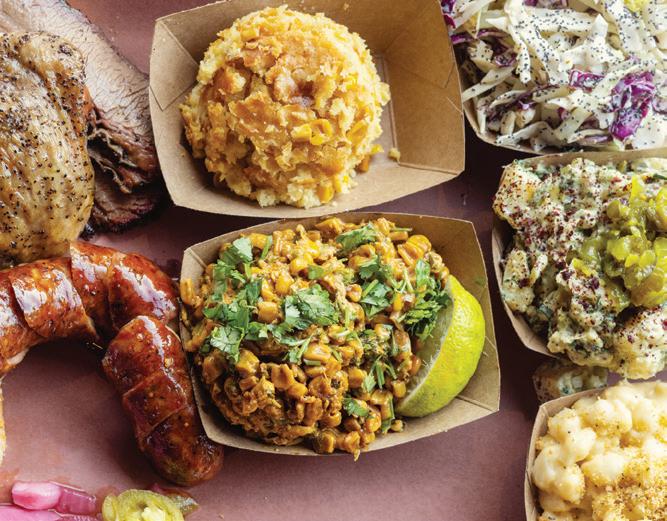





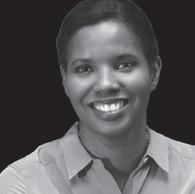








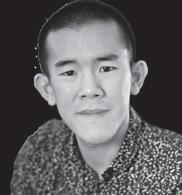







micro-district on Summit Avenue East, between Mercer and Roy, and its one-blocklong center of commerce.
Single Shot isn’t new. For a restaurant, it’s kinda old. Opened in 2014, it’s shuffled through a few different owners, chefs, and concepts since, and the kitchen is currently helmed by chef Antonio Palma (Ascend Prime, Cuadra No. 32). Palma’s doing an unstructured style of global cuisine, with influences from Italy, North Africa, Spain, France, Japan, and his native Mexico, among other geography. There’s a simple sort of dignity about the dishes, and an honest respect for the ingredients. No real overarching concept is present here, though—it’s just a sweet little dinner spot with great cocktails, hidden beneath the trees.
It’s a seasonal menu that’s subject to Chef’s whims, but it seems that the magnificent pork chop with green goddess dressing is there to stay. In the summer, it’s accompanied lightly by charred rapini and Granny Smiths; last winter, it was served with a savory roasted celeriac purée that made you wonder where the hell celeriac had been all your life. They’re all stars, though. The STUNNING hamachi crudo, all polka-dotted with pickled fresnos, yuzu, tamari, blood orange, and crisped-out garlic bits, is like a David Hockney painting. The indulgent roasted cauliflower on tahini AND hummus AND romesco. The fatty, biscuit-like housemade bread with its little side of very powerful black garlic butter.
This is really hedonistic food, and for many budgets—including mine—it’d be reserved for special occasions. A dinner at Single Shot is a bit of an event. But it deserves a spotlight because, in our rapidly changing cityscape, it seems like the kind of beloved stalwart for the ages that later finds itself at risk, and then we’re all surprised. It’s not yet, and I don’t want it to be. Its semi-secret location has both pros and cons, of course, and maybe I shouldn’t worry about some shit I made up that hasn’t happened yet. This place is just so fucking good, and it’s run by humble, creative, community-minded folks. I want everyone to know.
We have leveled up as a society when it comes to fake meat, everyone. It’s time to realize.
I was once like you: a white, middle-aged, self-appointed taco classicist who traveled to Mexico City twice and then went Rick Baylessing around town about what makes an authentic taco. Shut the fuck up, of course, but at the time, who could blame us? Seattle didn’t used to have the good shit, and when the CDMX-style taco—and its signature trompo—landed in the city a few years ago (see: Tacos La Cuadra), it’s kinda all the local carnivores ever hoped for in a taco. So, why would we want to try a vegan taqueria NOW?
Well, I did, and it is wrong to think this way. Good-tasting things are good, plantbased or otherwise, and Rojo’s makes them. Since 2002, chef/owner Daniel Rojo has made his fake chicken from soy curls, while the saucy fake carnitas is jackfruit-based, and the asada and al pastor (with pineapple!) are seitan-ic. They’re all crispy, rich, flavorful, filling, and frankly
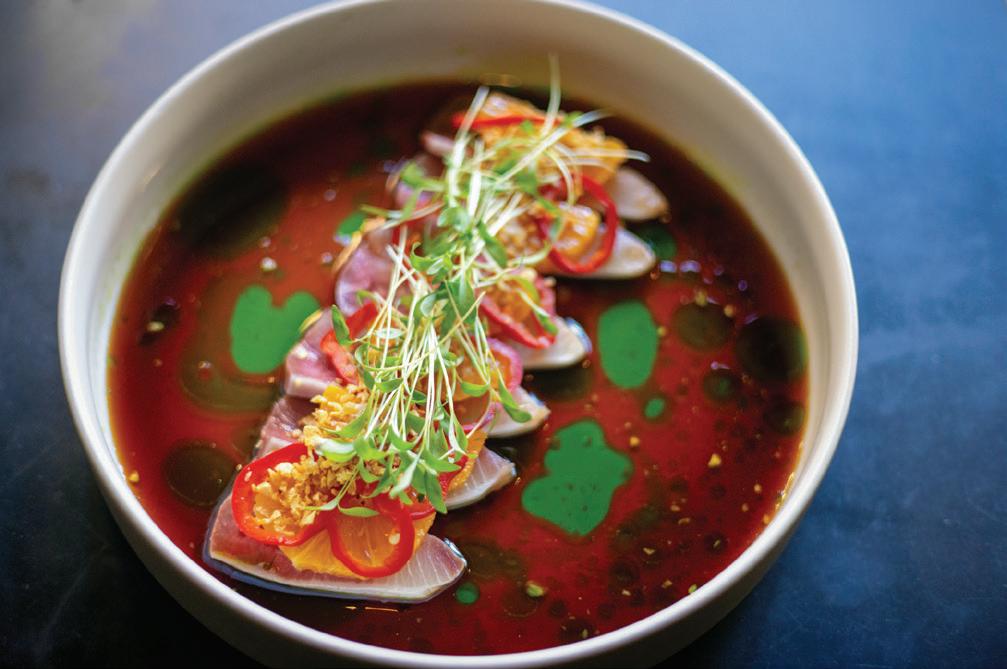
pretty spot-on in regard to texture. I traditionally do not fuck with jackfruit or seitan at all, but I always destroy my entire Rojo’s order without a trace. The guacamole and the velvety beans are stellar, too, as are the salsas. Also, the occasional vegan quesabirria special is not to be skipped, and I challenge meat-eaters to tell the diff. These veggies are skilled cosplayers. Last weekend, I spotted Rojo’s outside of a venue: A long line of tattooed people in hardcore and thrash metal shirts trailed from a blue tent, while a crowd stood at the other end, just shoveling long-awaited prizes into their faces. All were united by a wild, white-knuckled joy, both to eat the stuff and from the suspense beforehand, and also just to have it around, right there on the street. These people needed this beautiful, accessible vegan food, and even if I didn’t personally love it myself, I needed it for them. When I got to the front and saw it was Rojo’s, I was like, oh yeah, duh, of course it is.
If you have a philosophical problem with fake meat, think about novelty foods that are shaped like other foods and how delightful and alluring they are to you. In Sweden, there is the smörgåstårta, a bologna sandwich shaped like a cake. Japanese cuisine has taiyaki, which are fish-shaped waffles. Consider the humble spaghetti squash. The gummi cheeseburger. The candy cigarette. If you must mindfuck yourself into trying some of the best Mexican food in the city, figure that this menu is just a bunch of spicy lavish salads shaped like tacos and burritos. And they just happen to be lights-out delicious.
FREMONT
Oh man, I love this story. Did you know that Seattle has a burgeoning Turkish district? After popping up around town for years, chef Onur Gulbay moved his Outsider BBQ operation into the old Ballard Pizza Company space on Leary this year—next door to
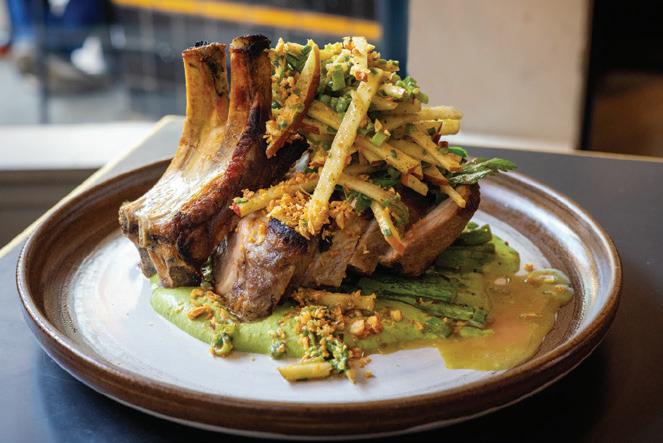
his friends at Hamdi, a Michelinesque fine diner serving Turkish classics and cocktails. Originally from Istanbul, Gulbay and his wife moved to Texas in the mid-2010s to work in tech, but Gulbay never developed a taste for the industry. After a few years, he quit, deciding he’d rather serve Texas-style barbecue instead. Inspired by Franklin BBQ in Austin, he bought a smoker and a truck, studied the craft, and became a pitmaster. When his wife got a tech job in Seattle in 2022, they hauled all the gear up here, and he began popping up at breweries. And boy, was Seattle ready for him.
In a city not exactly known for its barbecue, it may not mean much to say there’s nothing like Outsider BBQ anywhere else around here, but the distinction transcends the barbecue category, honestly. You wouldn’t normally describe brisket as delicate, but this stuff is thinly sliced and melts at the slightest touch, like the beef bacon it is. Gulbay is out here making his own smoked sausage out of the trimmings from the brisket and pork ribs, resulting in a bouncy texture similar to a Danish pølser, before loading it up with molten cheddar and jalapeños. The moist pulled pork needs no sauce, although Outsider’s two sauces, a sweet Texas and a mustardy Carolina, are
spectacular. Gulbay’s menu lists some standard sides—mac and cheese, slaw, corn casserole—but it doesn’t mention that they’ve all been subtly Turkified, with surprise flavors like sumac, poppyseed, black pepper, cinnamon, and lemon zest. And it works. Now in his own space and with access to a giant kitchen, Gulbay is, well, on fire, and his menu has hugely expanded as such. A frequent special, the massive beef ribs, is the stuff of my carnivorous dreams: served à la Flintstones with the bone in. Same goes for the beef cheeks, which have the same high melty quotient as the brisket, but are somehow even beefier.
The banana pudding deserves a callout here, too. It’s as thick as a frozen custard— Gulbay adds heavy whipping cream to Jell-O pudding mix and real bananas, then embeds Nilla wafers in the morass, which soften and resemble chunks of pound cake. Absurdly rich and deluxe. It’s like something they would’ve poured in an elaborate copper mold and served to Queen Victoria.
Let’s talk Turkey here: Since I first went to Outsider BBQ months ago, I’ve thought about this menu almost every day, no lie, and I’ve sent as many friends there as possible. Gulbay’s changing the barbecue game in Seattle before it’s even fully started.







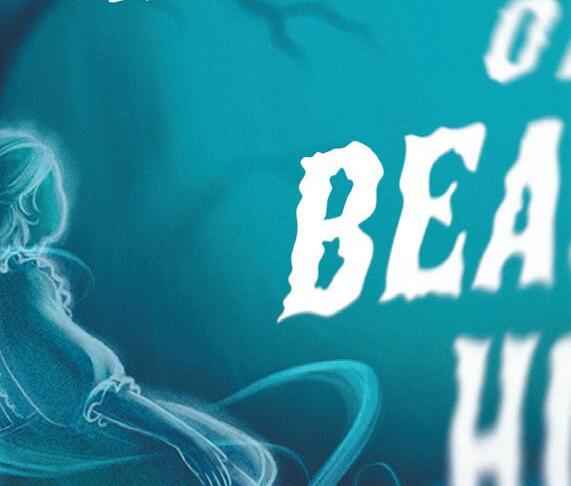



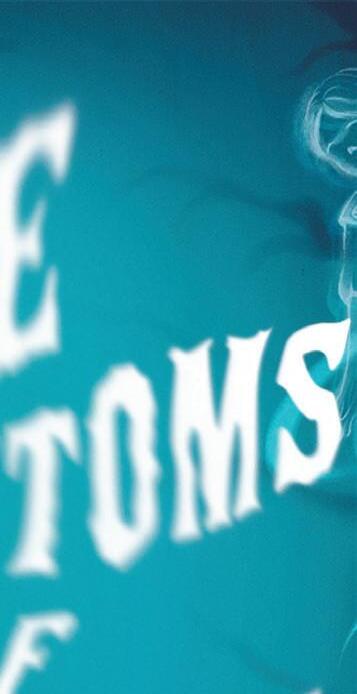
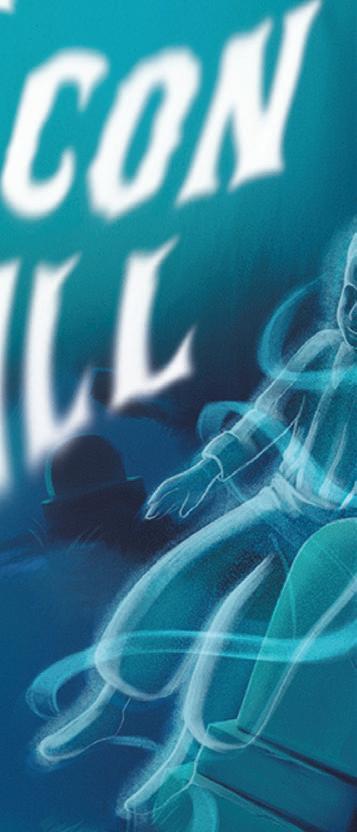

BY BESS LOVEJOY
ILLUSTRATION BY ALEXA PITT


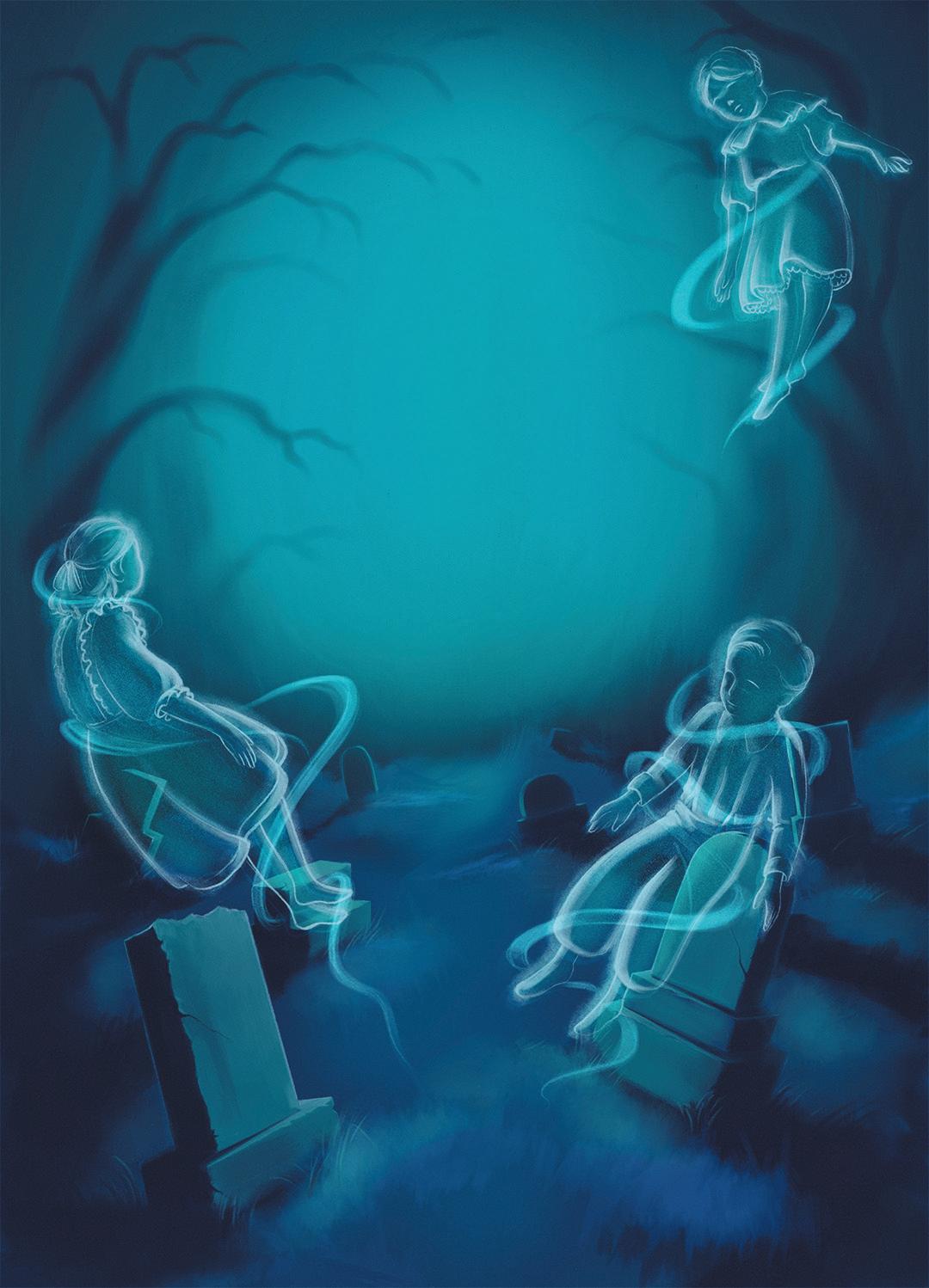


Fbeen echoing the Duwamish, the first people on this land.
Standing at the edge of the cemetery on a golden September day, Ken Workman—a Duwamish Tribal Councilman and descendant of Chief Seattle—says his people likely had a relationship with the land that became the cemetery. “It’s in the right spot,” he notes. “Just down at the bottom of the hill, there were longhouses and camas fields, so there was a Duwamish population in the area. If we were going to bury somebody, this would fit all the criteria.” Though the Duwamish are best known for placing their dead in trees, Workman explains, they also practiced earth burial, especially after settlers arrived with their devastating diseases.
In the 19th century, fraternal orders provided settlers with social networks and insurance, including burial insurance. Washington Territory newspapers brimmed with reports of their activities, written with an avidity today reserved for social media
sit there for the better part of a century.
Around 1997, a man began knocking on doors near the cemetery, telling neighbors their houses had been built over the graves of children. By then, the place was so overgrown that many people had forgotten it was a cemetery at all—it appeared to be nothing but a tangle of wild brush, a repository for old car parts, a playground for rats. Whatever was happening there, it had a very bad aura. So it’s not surprising the stories took root.
It’s true that Hiram Corson, a prominent member of the community back in the early 20th century (you might know his avenue), had chopped the cemetery he then owned in half, selling the northern half off for development. After his death, the title to the cemetery passed to family members, then disappeared into a legal quagmire. The burial records were lost. By the late 1930s, the county had become the owner of the site
inson came forward in the late 1990s, saying he wanted to restore it, the county was willing to listen.
But Dickinson, too, went rogue, at least in the eyes of the local government, cutting down trees without permission, one of which reportedly fell and injured a county worker. The county issued a cease-and-desist, and eventually banned him from the site. Research (including Hahn’s column back in 2001) points to him as the one knocking on doors back in 1997, telling neighbors their houses were built atop baby graves.
Is there any truth to those rumors?
In 2001, one woman who lived near the cemetery told the Post-Intelligencer’s Jon Hahn that she had tried to sell her house several times, always in vain: “Everyone knows about the ghosts.”






or more than a quarter-century, the stories have centered on children—phantom figures said to shimmer with an iridescent glow. Neighbors claim these spectral babes come into nearby homes on Beacon Hill, where they rummage through toy chests, scatter playthings across stairs, take porcelain dolls from glass cabinets, and set dogs a-snarling. ries of believe.






But the strangeness of Comet Lodge, the historic cemetery on South Graham Street in Beacon Hill, runs deeper than tales of glowing children. For much of the 20th century, the burial ground was a place of concealment and confusion, where things grew tangled, hidden, and forgotten. StoPoltergeist -style desecrations still cling stubbornly to the site (“They moved the headstones, but they didn’t move the bodies!”). Yet the truth is stranger, sadder, and messier than the tales would have you


Many cemeteries did have a “Babyland” for child burials, says Mikala Woodward, a curator at MOHAI and former director at Rainier Valley Historical Society (she’s leading a tour of the cemetery on October 18). And the section for child graves at Comet Lodge is often described as being in the northwest. Yet “it wouldn’t have been legal at the time to sell [the northern portion] for development if people had been buried there,” Woodward says. “So you tell me.”




It’s possible to draw a straight line of progress (scare quotes implied) from the Denny Party’s arrival on November 13, 1851, to Lake View Cemetery, which usually gets top billing as Seattle’s pioneer burial ground. Lake View overlooks both sets of mountains, and its founder monuments (the Dennys, the Borens, etc.) are not far from the celebrity graves of Bruce and Brandon Lee. The cemetery is kept in tip-top shape, and in the springtime, cherry blossoms rain down a celebratory pink confetti.
But there are other tributaries of Seattle’s history, and one of them ends here, in this cemetery just o I-5. It began on September 14, 1851, when the Collins party landed at the mouth of the Duwamish River. Luther M. Collins, Jacob Mapel, Samuel Mapel, and others in their group are generally credited as the founders of Georgetown—which became a Seattle neighborhood in 1910— and, more broadly, of King County itself.
Samuel Mapel was the first white settler we know to have been buried on the land that became Comet Lodge, in 1880. His father, Jacob, followed a few years later, along with another member of their party, Henry Van Asselt. In burying their dead here, the settlers are often said to have
infl uencers. In 1893, some of the Georgetown settlers, including the Mapels, formed Comet Lodge No. 139, a chapter of the Independent Order of Odd Fellows. Two years later, the lodge opened a five-acre cemetery intended to serve the rapidly growing community forever.
Forever lasted barely a few decades. For perhaps a dozen years, burials were frequent, and the cemetery became home to many of Georgetown’s blue-collar dead, who labored in the mill, in the Rainier brewery, and at other jobs that fueled the young city. It also became the final resting place of Emma Rigby, one of the area’s first female doctors.
But the cemetery was di cult to reach, perched atop a steep hill. In 1959, P-I columnist Frank Lynch describes how “It was quite a trip from [Georgetown] to the upper west slope of Beacon Hill in the fading days of the last century. One man out of that time and place told us he remembered the funeral processions winding up the old road. The drivers stopping two, three times to blow the horses. Hot summer days and the clouds of dust.”
The long climb up the hill may have been part of why burials stopped at Comet Lodge around the 1910s. In 1908, the lodge sold the cemetery to Georgetown undertaker H.S. Noice (for $1), and in 1912, Noice sold the land to Dr. Hiram R. Corson (for $10). Around this time, the fraternal chapter went out of operation. And it is here that the murk began to settle over Comet Lodge Cemetery. It would

through a tax foreclosure process, although they didn’t quite know what to do with it. In a 1948 letter to city council, the city treasurer and his deputy reported: “We have personally investigated the cemetery and found it to be in a deplorable condition. Graves were sunken, tombstones were scattered here and there, and the brush has overgrown everything with the exception of a few foot paths.”
That’s not to say there weren’t restoration attempts—to fight back against the vines, the gloom, and growing amounts of garbage. In the 1930s, ’40s, and ’70s, people tried. But toward the end of the century, two big restoration attempts went badly wrong.
In the late 1980s, a Beacon Hill resident named Don Kipper claimed to have bought the cemetery from Corson’s descendants. He talked a good talk, saying he wanted to restore the place and add a garden to feed the neighborhood. But residents soon watched in horror as he brought in bulldozers that destroyed trees and graves. Kipper was acting without any government authority, and the state cemetery board eventually issued a cease-and-desist order. But by then, many of the headstones had been destroyed, nearly a century of history crunched in the maw of a giant machine. Kipper apologized, then vanished.
The blackberry vines moved in again. But Kipper’s destruction did have one big upside: It reminded the county that they owned a cemetery. So when a man named John Dick-
buried a baby beneath those houses, if we’re they’re crawling over from the cemetery
Research by Andi MacDonald, once president of the Washington State Cemetery Association, and by Steve Sheppard with the Department of Neighborhoods in 1979, describes the northern half of the cemetery as almost certainly vacant when it was sold. So while it’s impossible to prove no one ever buried a baby beneath those houses, if we’re talking about settler ghosts, chances are they’re crawling over from the cemetery rather than coming up from the foundations. However, some of the ghost stories predate Dickinson. They may date back to the early 20th century, when little kids played in the section with child graves, Woodward says. “The kids who came, they felt a connection to the kids who had died,” she says. “You know, our culture doesn’t let us really face death directly. So we have to do it through ghost stories.”
Today, the ghost stories help ensure we remember this place. Though it was restored more completely by the county around the turn of the last century, it only holds a fraction of the graves it once did. (Estimates hover around 100, out of 450 or so.) As soon as it began going to ruin, those with means moved their dead. The gravestones that still dot the site are placed decoratively, but have long since become unmoored from the plots they once marked.
On a bright fall afternoon, Comet Lodge looks peaceful—a humble patch of land with a hard-won dignity. The blackberries are kept to small, pretty tendrils, the rats long since banished. It’s not showy, but it is serene, and perhaps that’s what its founders would have wanted.
Yet perhaps the stories persist because something here resists silence. The ground will not forget its history, even if the living do. And so, when dusk settles over Beacon Hill, neighbors still glance toward the cemetery, wondering if the faint glow at their window belongs to headlights—or to the children who never quite left.
Former Rainier Valley Historical Society director Mikala Woodward is hosting a tour of Comet Lodge Cemetery Oct. 18. RSVP at rainiervalleyhistoricalsociety.org.

BY KATIE LEE ELLISON
Iwas recently asked about my favorite flower. Jasmine at night in Los Angeles returns me to myself, across time. That smell anchors me in a personal ancestry specific to California.
Poppy State is Myriam Gurba’s labyrinthine creation through California’s plants, expansive markers and partners in her life, and the book itself, while it refuses the cliched delusion of catharsis so commonly found in American memoir, does offer a kind of return and a clearing.
“California is many things to me,” Gurba said, when we spoke. “Beyond this political entity with these arbitrary borders that we call a state that is governed by an asshole named Gavin Newsom. It’s a spiritual state, but it’s also the land, and all of the life that is sustained by the land herself.”
And it’s long sustained her.
“I remember being on the playground [as a child] after it had rained and thinking that California smelled so delicious that I should probably put her in my mouth. Because if she smells this good, she’s probably gonna taste even better, right? And when no one was looking, I would collect rocks and put them in my mouth, and then suck the flavor out of them, like, concentrated California.”
Gurba has written many books, including Mean (a true-crime memoir), and Creep, an ambitious essay collection that successfully takes on the concept of oppression through cultural commentary and personal essay, calling out a past abuser, the United States itself, and many historical events and cultural figures in between. Creep , while as funny and fast as any she’s written, is heavy and dark with violence in its many forms. Poppy State reads like a progression and expansion of the experience and perspectives in Creep, explored through her distinct voice and style, defined in part by something she calls textured writing.
“By texture, I mean that when your eyes move across the page, you have a tactile experience, because there’s so much care in word arrangement, the visual, as it’s represented,” says Gurba. “When I consider texture, I then start to think, stylistically, what would help me to achieve the type of texture that I want to represent?
“With Creep, I wanted to lead readers into a sort of fog without them knowing that’s where we were going, then just sort of push them into it. Typically, essay collections begin with the title essay, but I inverted that so that readers arrive [in that fog]. Rather than putting them on a journey toward enlightenment, it’s a journey into confusion.
Poppy State continues that journey of confusion. I wanted to create a structure

that would both confuse, but also contain, which is why a maze or a labyrinth came to mind. We could say that Poppy State is my exit from that fog into forests and valleys and deserts. So we’ve left this landscape where I can’t see my own hand when I extend it in front of myself. Now there’s this openness, and I’m able to interact with the land.”
“The prose is written in a way that is intended to be incantatory”
In Mean and Creep , we witness sexual and physical assaults at the hands of men Gurba has escaped and survived. In Poppy State, the primary male figure is her father, and while she says he’s not perfect, she creates a glowing portrait of him. There
is peace made in these pages, and it was surprising to me as a reader not to get any daddy shit talking. It was refreshing and powerful, which is typical of her.
“As my relationship to plants was deepening and working to heal me or to revive me, it became undeniable that the relationship I had with plants was entirely facilitated by my father. So, for all of his faults, and for all of the mistakes that he made raising us and in his role as a patriarch, I wanted to honor what he had gotten right. The two things that he most got right in my life are, one, the relationship that he helped me to establish with the earth, especially through plants. That’s going to sustain me for the rest of my life, and I relate to my father now through plants. He also introduced reading into my life—a fundamental part of who I am, and I have to celebrate him for that. That he taught me to read, and the fact that he taught me to garden, go together. I see them as intertwined.”
As multifaceted as this description of a
relationship may be, the narrator of this book comes across far more complex as she grows and outgrows one situation, relationship, and life after another. I had to ask her how many selves she included in this book.
“You could say that I’m many people, in that many people are also plants. Because in this [book’s] world, a person is also a poppy. And in this world, a poppy flower is also corn. And in this world, corn is a vegetable, and in this world, vegetables are also books. And then there’s the notion of my lost soul, and where is she? Is she in this construction as well? Or has she left the building?”
This is a book about getting lost in order to be found. It’s a book that reaches for a spirituality that refuses containment. I also wondered if Gurba was using this book to cast spells, even specifically on her readers, because of certain patterns and repetitions that few readers would miss. This led us to a rich discussion about her spiritual practice in Santería.
“The prose is written in a way that is intended to be incantatory, which it does through rhythmic accretion,” Gurba says. “You mentioned three and five appearing frequently in the book. I am what is called an aborisha, meaning that, in Santería, an Afro-Cuban religion, I have received a set of spirits and warriors. When you receive these warriors, it means that you’ve received a set of protective spirits, and these spirits dwell in your home, and you have to care for them. The primary warrior is Eleguá, and Eleguá’s number is three. Eleguá clears obstacles from one’s path…I am always asking him to remove whatever obstacles need to be rolled out of my path. He’s one of my favorite orishas. Orishas are, like, these divine messengers to God.
“The number five emerges because there is that scene in the book where I’m ordered by a priestess to make an offering to the goddess Oshun, who is a protective female goddess and whose number is five. She’s somebody that people who have often been victimized by gender-based violence turn to for healing and sweetening.”
I was fascinated by this concept of active, playful, tangible relationships with multiple gods that require you to show up for them in your daily life. Inside this book, which is about a journey back and also through, I heard a testimony for getting lost, for losing yourself. I thought of the California I know and love. The dusty hot mountains to climb. The Joshua trees. The poppies along the cliff side leading into the ocean. We are lost, catharsis not more than a fantasy, and in its place, Gurba offers a hypnotic return to what we know, what we are, to land, to ourselves. ■
BY MEGAN SELING
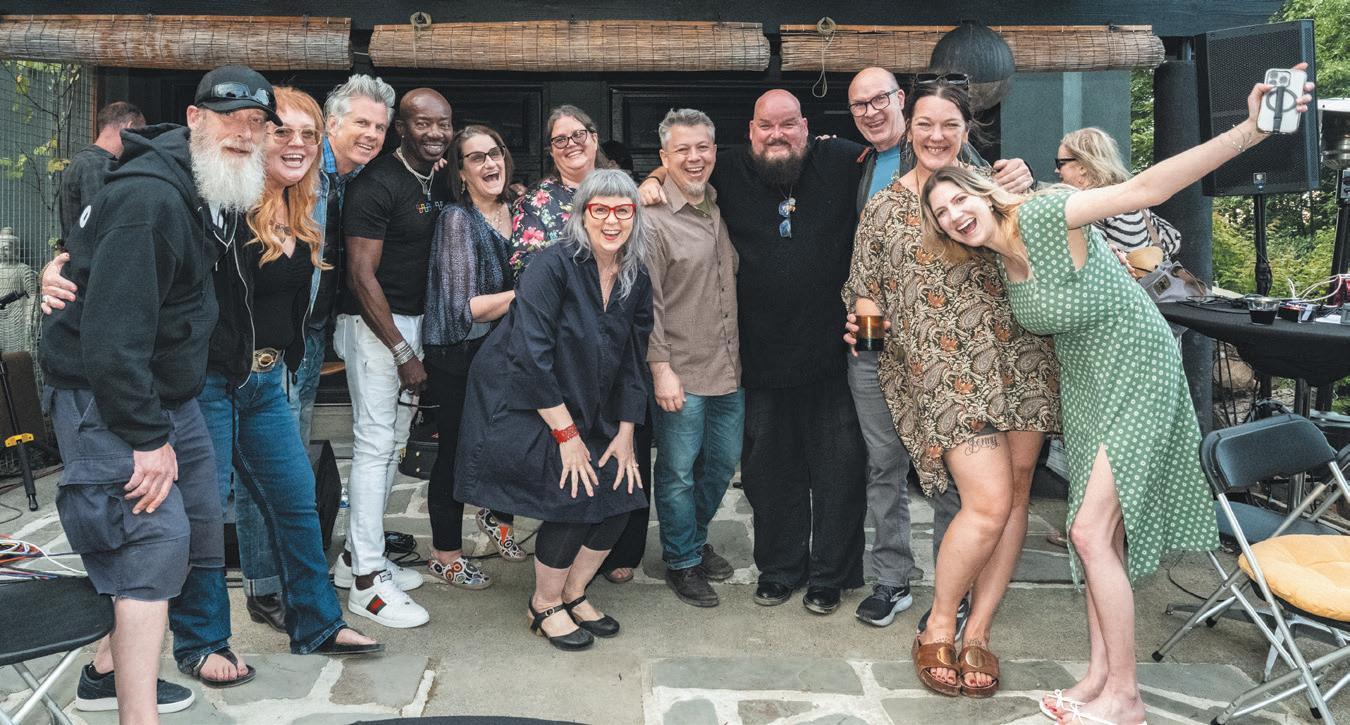
Rachel Crick found the name for her new archival project when she was talking to a potential collaborator.
“We were on the phone with Art Chantry, the art director for The Rocket,” she says, “and he said, ‘So what’s the deal here? Are you trying to take photos of as many weirdos as possible?’”
Yes, actually. And with that, As Many Weirdos as Possible was officially born.
Since 2021, Crick and her Weirdo colleagues—producer Pamela Houle, director Ricardo Frazer, and photographers Rosetta Greek, Lance Mercer, Chris Pugh, and Charles Peterson—have been photographing folks that were part of the Pacific Northwest music scene from 1985 to 1995 in front of a local landmark of their choosing, and collecting their handwritten memories and stories.
While much has been written, filmed, photographed, and otherwise documented about what is arguably the most influential musical decade of our region’s history, As Many Weirdos goes beyond the hitmakers and headline names to shine a light on the radio DJs, concert promoters, music critics, and even a pizza delivery guy, resulting in a richer, fuller picture than we’ve seen before.
“I thought this would be 50 photos and stories in a coffee shop,” she says. Now, the
collective has photographed more than 300 people, and they’re in the arduous process of compiling all those portraits and stories into what they hope will become a series of coffee table books.
This month, Team Weirdo is hosting two opportunities to get a peek at what they’ve been up to. First, on Friday, October 3, musician and author Nabil Ayers will host an evening of storytelling with Riz Rollins, Marco Collins, Steven Severin, Paul Schurr, Sheila Locke, and Chenelle Marshall. Then, on October 10, folks from the organizaion will participate in a fireside chat at Hotel Crocodile during Belltown Art Walk, and the hotel’s hallways, lobby, and even a couple rooms, will be filled with Weirdo artifacts.
While preparing for October’s events, Crick shared details about how the project came together and what’s next, now that they’ve captured, well, as many weirdos as possible.
What is it about the 1985 to 1995 time period in Seattle that was especially exciting or enticing for you?
The decade was important to me because that’s when I started watching, that’s when I started historically seeing things going in the direction that would become the time that changed the world. Everything from
Bikini Kill to Nirvana. It also was the timeframe that almost every single person who is a member of our volunteer team, we were all working in music during that time, in some form or fashion. The majority of us are Seattle natives, or have lived here the majority of our lives, and we all lived and worked in Seattle during those 10 years in music.
And I want to be really clear that this is Pacific Northwest music history. We’re photographing and capturing stories from people from Olympia to Bellingham. And when
“We’re capturing stories from people from Olympia to Bellingham. This is larger than Seattle.”
I started looking at that, that passageway and the time frame, there was so much going on. There’s the riot grrrls in Olympia and the Beat Happening in Olympia, and they had their own thing going on up in Bellingham. And everything in between—there are bands coming out of Lynnwood, Everett, and Tacoma. This is larger than Seattle.
I love that it’s not just rock-focused, too. That’s a huge part of it, but you also have, like, Shellie Hart, who I used to listen to on KUBE 93.3, and Sheila Locke and Sir Mix-a-Lot. It’s really important to me that this project is diverse in lots of different ways. There was so much going on here, music-wise, you know, Vitamin D and Jake One got their start during that time. And Shellie Hart actually started at C89.5 before she went to KUBE. And then there’s people like Amy Denio, who’s doing jazz, and we even have Greer Grimsley.
It’s not just musicians, it’s engineers, journalists, photographers, bartenders, bouncers. We even just recently did a photo of and got a story from a guy who was a pizza delivery guy—the pizza company that he worked for had a contract with one of the theaters, so when a show would roll through town, he would take the pizzas over to the bands, and he would hang out with them and see the shows.
I just did a portrait of a guy, just randomly, when I was doing a shoot with Rob Stewart from Paisley Sin. He said he wanted to go to this place called Brad’s Custom Auto in Lake City. It turns out that this auto garage used to have a recording studio in it and a rehearsal space in the back. Brad was repairing cars in the front and renting out the back to musi-
cians, and [the band] Zeke recorded there— all these people recorded in the back of this auto garage off Lake City Way!
I’d imagine that that’s not the only time that that has happened, that you’ve had that kind of organic growth just as people started to tell their stories.
[A lot of] it has been people saying, “Oh, did you talk to this person? Did you talk to this person?” Gretta Harley was a huge supporter when we very first started this. She’s got her project These Streets, which focuses on women, and she’s been a huge supporter and advocate for the work that we’re doing. [Former Rocket editor] Charles Cross was huge. He loved the project. He gave us contacts with so many people, and he really helped us a lot, too. So it’s all been word of mouth and support of people who believe in what we’re doing.

And it’s the same with landmarks. When we talk to the person and say, “We want you to be in this,” we ask them to think about a location that still exists in the Pacific Northwest, to have their picture taken. And it’s been interesting watching what people pick. I’ve done a picture of a guy on a rock, literally his favorite rock. Greer Grimsley, the opera singer, he wanted his picture taken in front of Ozzie’s, the tavern up on Queen Anne, and now that classic Ozzie’s sign is gone. Lance Mercer had his picture taken at a building on the Ave, and now that building is gone, so we were also able to capture locations as a part of the work that we’re doing, too.
The plan is to put it all together in a book, right? When do you decide you’ve gotten enough material?
That is something that’s been super important to us, community events. It’s more than just a way of getting the word out about what we’re doing; it’s also, coming off COVID, it’s been a way that we could get our community back together. Since I started this project, I have been dreaming of a live storytelling event. I love to listen to the Moth and This American Life. I’d been thinking a lot about how we could turn this into a live storytelling event. Now that we’re at a place where we’ve got a ton of stories to choose from, I went through—it was really hard—and I found six stories that I thought would translate well to being told live. I hope to do this one storytelling event and see how it goes—I would love for this to be an ongoing series.
Without spoiling any of the stories, can you give us a hint as to maybe one or two of the reasons you picked any of the specific stories, like some keywords or something?
Since they were interviewed and shared their stories, some weirdos have died. How does that feel, to ensure that part of their legacy is going to stay around?
It’s been like a blessing, right? Susie Tennant passed away. Tom Hansen passed away. We were lucky to have been able to get a photograph of them and their story before that.
It’s so hard. We have photographed over 320 people. Our goal is to do three books and have there be about 100 [people] in each book and then put them in a box set. But then we need to find a publisher, or we need to figure out a way to raise the money to do it ourselves.
I love that you’re hosting events, and that you have something going out into the world while you’re putting this book together.
[Laughs] Steven Severin, when he told me the story on the phone, I just laughed and laughed, because it has so many crazy elements about the rapper Kool Keith. Kool Keith comes to Seattle, and he has these wacky demands, and so Steven has to send an intern or something out to go and
try to take care of Keith’s wacky demands. I’ll just say that it’s food and beverage items. And then, when Kool Keith finally gets back with the intern, a Kool Keith show is chaotic enough, but then just pandemonium erupts. And Paul Schurr, his story is straight up and down, just rock-and-roll lifestyle. It’s like jail and fire and so many things. I love those kinds of stories.
When this is “done,” are you going to go into other decades? Are there other plans to expand?
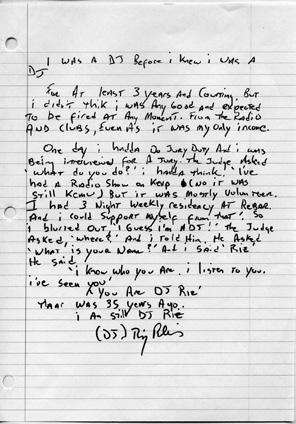
One of the ideas that I have, and I haven’t solidified this yet, is I would like to take this model and take it to other cities. This decade is crazy all over the United States. If you think about Bay Area hip-hop, hip-hop in LA, if you think about Minneapolis in general, Austin, Athens, Georgia. It would be really awesome if I could take this model and go to Minneapolis and give a workshop, like: this is what we did, this is what we needed to do to get it set up, here’s what we learned. And then maybe we could also archive with ours, so when you went to our website, you could look at Seattle weirdos, Minneapolis weirdos, Austin weirdos. That would be my dream. ■
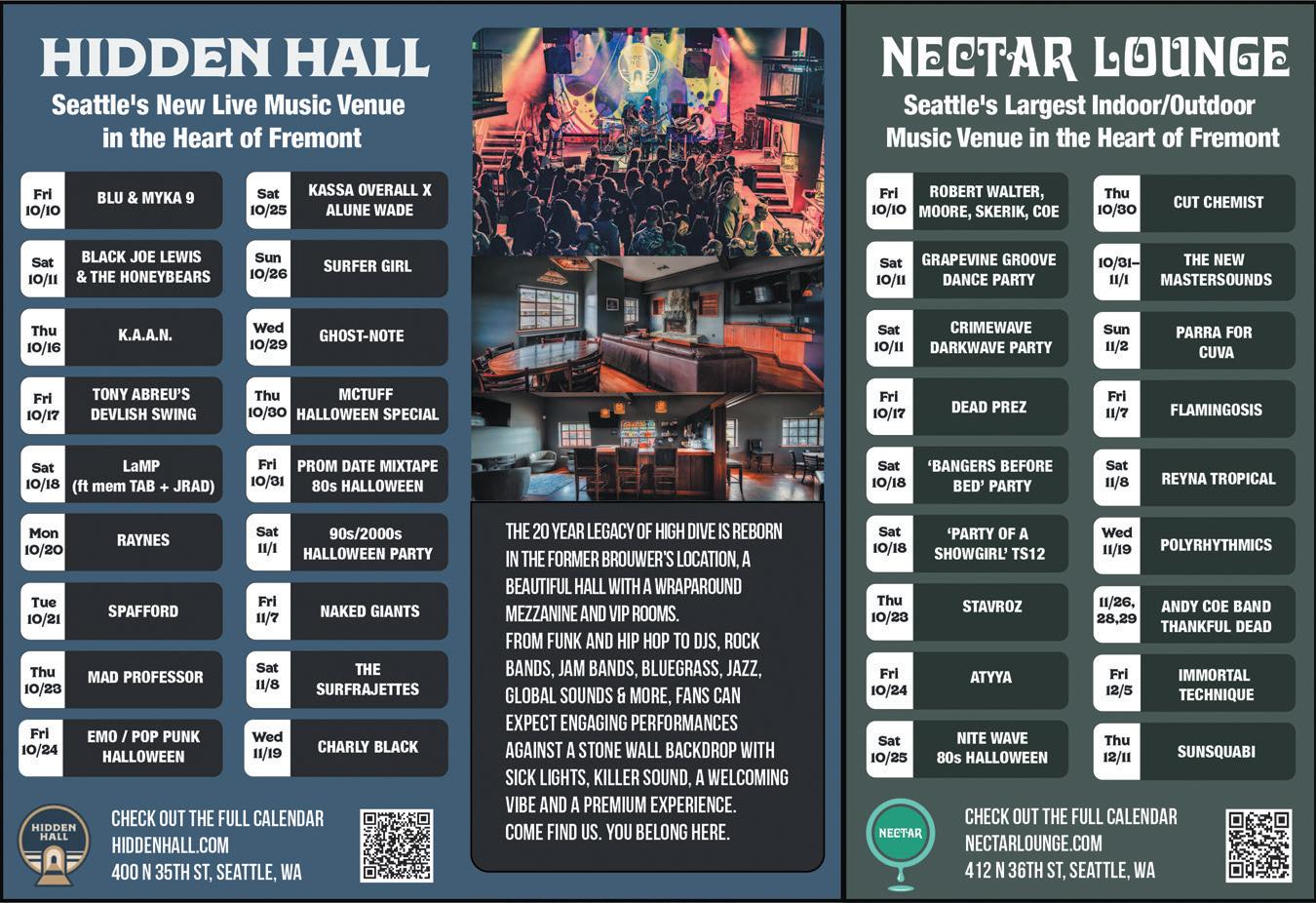

(That Aren’t in Chinatown)
BY MICHAEL WONG
Ihope, at this point, it’s safe to say we all know Chinatown has the motherfucking goods.
I sure know so. But as I scroll my ADHD-mandated six hours of social media per day, I’ve come to think that maybe, possibly, the range that many Seattle people have with Asian food often starts to dissipate once South Jackson Street hits 12th Avenue South.
cious Asian food in neighborhoods beyond. Ready? Let’s do it.
Thai Tom (University)

So I compiled three of my favorite Asian spots outside the CID that I hope will entice you to explore deli-
This iconic hole-in-the-wall Thai restaurant is as much of a fixture of the Ave as the scent of teriyaki grease baked into every brick on the block. UW alumni from decades past may not remember the cherry blossoms in the quad as much as they’ll remember how the pad thai smacks at Thai Tom.
If you’re a Husky or Husky-wannabe,
you’re already in the know. But for the uninformed, Thai Tom is one of those places you might take Anthony Bourdain if he were still with us, and if he thought you were cool enough to eat with. It’s tiny, like hallway tiny, and it’s hot, even when there’s snow outside. That’s because Thai Tom centers its guests around the main event: the chefs working the woks with expert-level finesse. In this way, Thai Tom is a show you get to be part of.
Given its limited space, you might wait a short while to get your seat, standing outside in a makeshift queue rubbing shoulders with kids who are younger than the iPhone.
The heat at which these cooks flip noodles
and season by eyeball will have you wondering how any of them still have eyebrows. To add to the heat, everyone who works here wears all black, like a Sephora, but with more sweat. Watching the main cook simultaneously service six different woks will break your brain if you stare too long.
Amplifying the mystique, this spot is famously cash only. But it’s cool, nothing costs more than $15. The menus are etched into wooden planks, amended here and there with pieces of masking tape for pricing and availability updates. That’s how you know. When you make your order, you’ll choose from Thailand’s greatest hits with
your choice of protein. I’m giving you permission: Order the fucking pad thai. Go ahead, nobody’s gonna judge you or question whether you are truly a respecter of Asian culture. Everybody’s ordering the pad thai. And as you try the fool’s errand of attempting to determine which wok is cooking your order, before you know it, a plate of hot noodles arrives at your table with a scoop of rice on the side.
You’ll taste it for yourself, but to give you some clues, a wok-cooked pad thai whose flames you witnessed singe the hairs of the person cooking it just hits different— thank the “wok hei” (breath of the wok) that characterizes dishes cooked like this. You’ll get sweet-and-savory textural intrigue backdropped by smoky, charred aroma that you just can’t replicate at your apartment.
If you ever see a “ Kee Mì Gia” spot, you should clock it as an instant Asian Verified situation. Roughly translating to “House of Noodles,” the name carries lineage, dating back to when Cantonese folks migrated to Vietnam and brazenly showed the Viets how Chinese folks get down with soups. As possibly the two biggest fans of noodle soups on the continent, it was a match made in heaven.
That’s the DNA here, and Tung Kee Mì Gia, at the edge of White Center and Burien, wears it with pride. You’ve possibly driven by it dozens of times—wedged in a stretch of Burien where the surroundings look more like industrial SoDo than your food-crawl bucket list. But if you see construction trucks in the lot and high-vis vests filling the tables, you’re in the right place.
The first thing you’ll notice when you walk in is the aquarium. A giant, crystal-clear tank glows next to the counter, lovingly maintained, with each fish flicking around like it has better health insurance than you (it does). The rest of the space is no-frills but gives me nostalgia for holidays I’ve never celebrated, with goldenrod painted walls, mismatched chairs at glass-topped tables, and a freshly vacuumed burgundy carpet.
Place your order by pointing at huge sun-faded pictorials on the wall, maybe phở gà, maybe egg noodle with duck, maybe one of their signature “Big” bowls (a word that is included in half the menu’s dishes, btw), and before you can text your friend “I’m here,” a Wreck-It-Ralph-sized bowl slides in front of you, enough food to meal prep for the whole week. All for less than one hour of minimum wage.
But neither the quantity nor the price ever cancels out the quality. The broth is always clean, rich, and restorative, the kind of soup that warms your marrow after a double shift. The noodles arrive springy, holding their chew through the last slurp. And the meats—roasted duck, tender slices of beef, bright pink char siu—hit all the comforting notes. Take a nod from the blue-collar workers you’ll inevitably encounter and order the “Big Combination Wonton Noodle Soup,” a basin bowl of soup teeming with the full roster of proteins: pork, chicken, meatball, shrimp, and wontons. If you’re looking for something dry, go for the “Combination Crispy Chow Fun” with shrimp, pork, and chicken, which should really
also have the word “Big” in it. Depending on how much weed you smoke, it can feed you for days.
What really makes Tung Kee Mì Gia sing is Quyen, the slender Vietnamese man who greets almost everyone who walks through
I’m giving you permission: Order the fucking pad thai.
the door. Conversations with Quyen have a way of grounding you—his easy smile fills the small dining room, a reminder of what we stand to lose in a world dominated by quick-service spots and delivery apps.
For the construction crews, it’s fuel. For me, a soft-handed remote worker cosplaying in my Carhartt, it’s a portal into a melting pot of Seattle that doesn’t need a fake flower Instagram story wall to justify it. It just needs a fat-ass bowl of soup to keep it going. And maybe, so do you.
Over the decades, Seattle’s Beacon Hill has quietly become the city’s new Filipinotown, and CheBogz may be the spot to size that up best. Sitting kitty-corner from the light rail station, in the thick of the action among players like Musang, Homer, and Bar Del Corso, the spot is humming with energy at every hour of the day, attracting a rotating cast of Filipino elders, city and transit workers between shifts, and, yes, healthcare professionals.
CheBogz’s menu is a litmus test for every Filipino classic. Deeply savory chicken adobo, comforting beef kare-kare, Inihaw-style BBQ, and lumpia so crisp you can hear the crunch from the next table. Take your titas, nanays, and lolas here without fear of confronting the disappointment that often comes with taking your Filipino relatives to a Filipino restaurant.
If you’re going for one thing, go with the pork sisig—sizzling, fatty, crispy pieces of pork belly that meld into the garlic aioli and aromatics atop piles of hot rice. It’s the kind of dish that sneaks into your dreams. Their dessert program is also a joy, equal parts nostalgic and inventive. I spent weeks obsessed with their Halo-Halo and their Oreo Ube Tres Leches Cake (to the chagrin of my primary care doctor). These are the crowd-pleasers, yes, but they’re also proof that CheBogz isn’t performing Filipino food for outsiders. This is straight-ahead, in-your-face, Pinoy comfort food, served with pride and without pretense.
CheBogz smacks while staying rooted. And it exists today because the Paraiso sisters refused to let Beacon Hill’s Filipino food story get erased. After losing Kusina Filipina, their first restaurant, to rising rents, they didn’t bow out quietly. Instead, they fired up a food truck, launched a Kickstarter, and kept feeding the people. The response was overwhelming: Neighbors, customers, and fans rallied and CheBogz was born, brick and mortar, on the same hill that had once priced them out.
For Seattle, it’s a reminder: Good food survives because people support it, and fight for it. Let the fight continue. ■


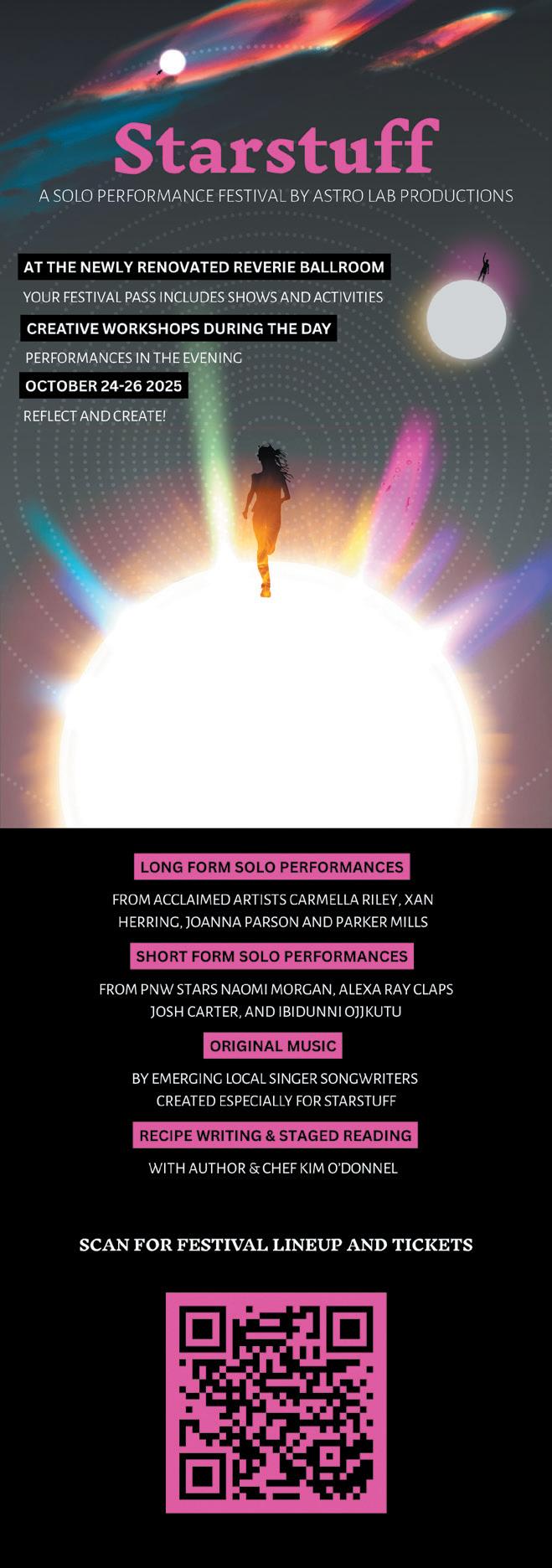

We do our best for
but please check venue websites for updates and more information, as event details may have changed since press time!
Housekeeping note: We have ceased to include pricing information, unless the event is free or sliding scale. (This is mostly due to third-party ticket vendors, like Ticketmaster, who have a monopoly on pricing that is not only unfair, but also confusing, due to varying fee structures. We hate them, and so should you.)

OCT 4
Icelandic singer-songwriter, composer, producer, and multi-instrumentalist Laufey captured the hearts and minds of a generation with her whimsical, jazzy 2023 album Bewitched, which took home a Grammy for Best Traditional Pop Vocal Album. With her newest album, A Matter of Time, she explores influences from multiple genres and reveals a more complex, vulnerable side: As she told Uproxx, “People expect a pretty façade of girly clothes, fantastical stories, and romantic music. This time, I was interested in seeing how I could draw out the most flawed parts of myself and look at them directly in the mirror.” She’ll be joined on her tour by Brit model turned indie-pop singer Suki Waterhouse. (Climate Pledge Arena, 7:30 pm, all ages) JULIANNE BELL
OCT 5
Following in the tradition of X-Ray Spex and Huggy Bear, Brighton, England’s Lambrini Girls blow the cobwebs off punk with a hurricane of caustic energy
and barbed lyrics about sexism, homophobia, gentrification, police brutality, rich bastards, music-biz nepotism, eating disorders, and frauds. (Their dance-pop anomaly “Cuntology 101” stands with the Slits’ “Typical Girls” in the Funny Feminist Rock Hall of Fame.) Boasting a fan club that includes Iggy Pop and Kathleen Hanna, the Girls have dropped one of the thorniest and most exhilarating albums of 2025, Who Let the Dogs Out. Lilly Macieira busts out filthy and thick basslines (think Daisy Chainsaw) while guitarist Phoebe Lunny cranks out wiry, mosh-pit-inspiring riffs and contributes asbestos-throated vocals. (Crocodile, 8 pm, all ages
without acknowledging the crowd, British abstracttechno innovators Sean Booth and Rob Brown get down to the serious business of submerging their loyal fans (there are no other kind, in my experience) in a shape-shifting torrent of convulsive electronic sorcery. At a typical Autechre gig, hallucinogens are superfluous, as the strangely angled and textured music is more than enough to discombobulate you. Cautionary tale: At a packed 2001 AE set in a bunker at the Detroit’s Electronic Music Festival, I was tripping on ac*d and felt as if I were trapped forever in a fucked-up maze. A friend who was there accurately described the sound as “castanets clacking on a crack-house floor.”
sational and abstruse still has substantial drawing power more than 30 years into their existence. An awesome AE live show is one of the few sure things in the music biz and, frankly, the world at large.
( Crocodile, 6:30 pm & 10:00 pm, 21+) DAVE SEGAL
OCT 9



OCT 6
Every Autechre show is a hyperkinetic séance of rhythmic complexity and intense volume.


It’s amazing that a group this improvi-

Woman Blues
Performing in total darkness

Lucinda Williams is my favorite songwriter. From early songs like “Sharp Cutting Wings (Song to a Poet)” to the flawless “Side of the Road” and “Fruits of My Labor,” Williams has the rare ability to write a folk song that isn’t simply sad or happy, but ignites the dark, hidden shadows of joy. This is perhaps the clearest on her 1980 sophomore album, Happy , which set a tone for her long legacy of introspective, nuanced songwriting. Williams suffered a stroke back in 2020, which has left her unable to play guitar, but got back on the road just a year later, leaning on her love of playing music and writing to get her through the dark times. During that period, Williams finished her memoir, Don’t Tell Anybody the Secrets I Told You, and her 15th studio album, Stories From a Rock n Roll Heart. The alt-country legend will grace the 5th )


Don’t Tell Anybody the Secrets I Told



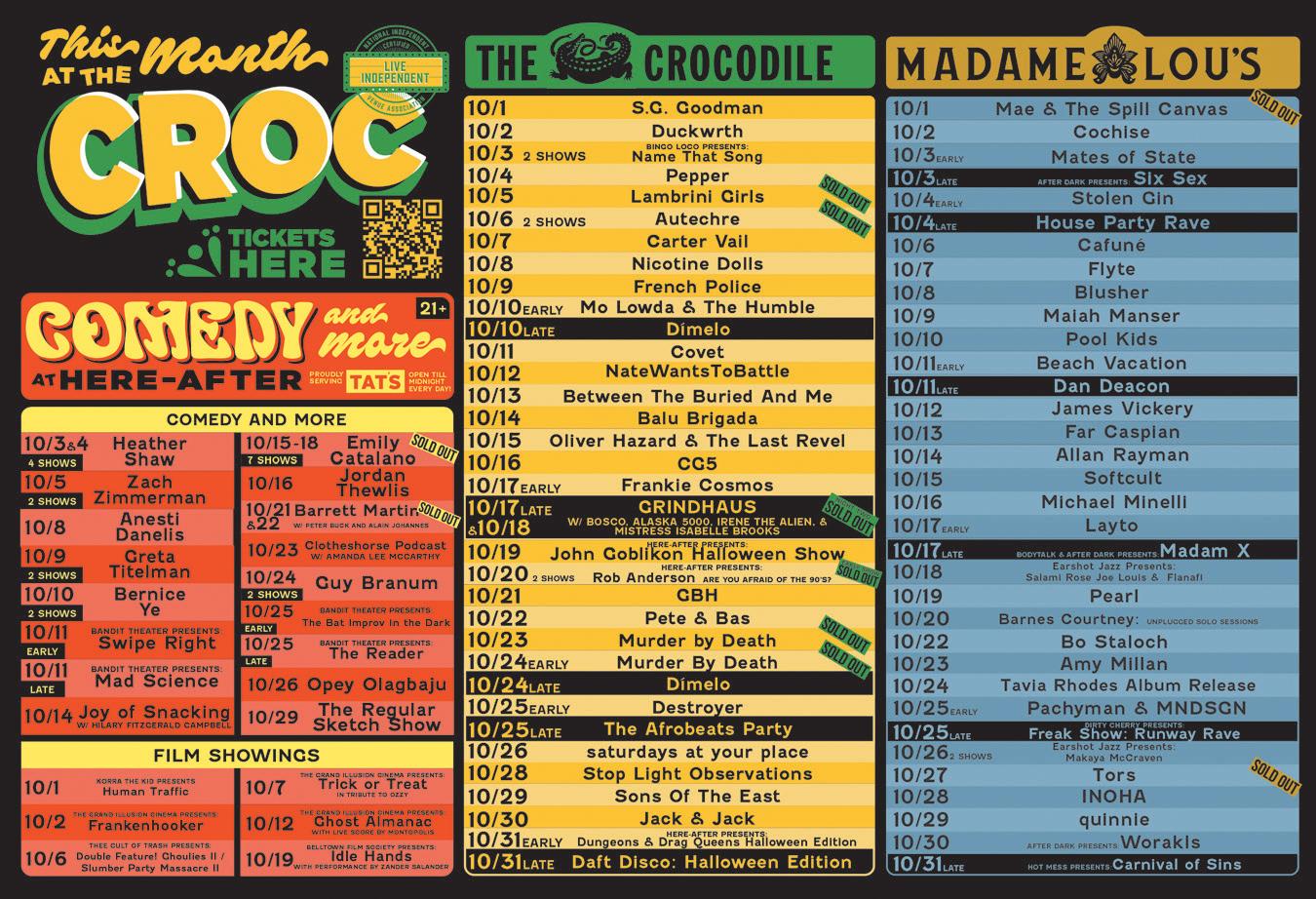
Avenue Theatre with an evening of stories, songs, and visuals from her nearly 50-year-long musical career. (5th Avenue Theatre, 7:30 pm, all ages) AUDREY VANN
OCT 11
I was once shopping at a small Portland record store with the golden-hour sun shining through the windows, expensive incense smoke wisping through the air, and delightfully minimal ambient music blasting. Eager to recreate the bliss when I got back to Seattle (but too shy to ask the employee what the record was), I turned to good ol’ Shazam for answers. It turned out to be Patricia Wolf’s 2022 minimalist masterpiece, See-Through. Using field recordings, acoustic, and electronic instruments, Wolf unites the natural and synthetic worlds, creating a meditative and hypnotic experience. As a part of Wayward’s experimental music series, Nonsequitur, Wolf will debut new material on a variety of electronic instruments. She will be joined by sound artist WNDFRM (aka Tim Westcott) and trippy live visuals from video artist Leo Mayberry. (Chapel Performance Space, 8 pm, all ages) AUDREY VANN
OCT 13
If the idea of two sweetly harmonizing Norwegian women making nonchalantly brilliant electronic music doesn’t pique your interest, then you should probably reassess your aesthetics. Henriette Motzfeldt and Catharina Stoltenberg have been creating interesting and varied electronica since 2018, like a less flamboyant Björk—although the intimate, orchestral work of France’s Colleen may be a more accurate touchstone. But with this year’s Big city life, Smerz take a graceful leap forward with their songwriting and arranging skills. They exude that irresistible deadpan cool, like Wet Leg, but Smerz come off as more bedroom auteurs than arena-filling entertainers. The title track is rock-ribbed, bass-heavy electro-pop with an oh-so-haunting keyboard melody. The sassy, methodical electroclash of “Roll the dice” sounds like a more understated Peaches. “You got time and I got money” is the lowest-key seduction anthem you’ll hear all year and boasts the excellent line “Baby, can I see you naked? / Even though I love how you dress.” “But I do” is enchanting, slow-motion funk with entrancing vocal harmonies and a killer, subliminal bass line. It’s one of the songs of 2025. (Do you know how many songs have been released this year??)
(Hidden Hall, 7:30 pm, 21+) DAVE SEGAL
OCT 14
California garage-rock chameleon Ty Segall has the kind of pace of musical creation (17 solo studio albums in as many years in addition to an incalculable amount of singles, rarities, side-project band releases and Comedy Central theme songs) that paints a clear picture of a man who is just about that rock-and-roll lifestyle. Acknowledging such compulsions, Segall told the Associated Press last year that he was “trying not to release as much anymore”; however, as this spring’s Possession LP (plus his recent collaborative Freckle album) makes clear, nobody can tell Ty Segall what to do, not even Ty Segall. He has, however, landed in a fairly conventional place. Possessions sees a return to melodic, approachable songwriting that circles influences like Paul McCartney and Kurt Vile more than his more Stooges-like freakout moments. What Segall’s endearing unpredictability on record amounts to is that he’ll have even more variety to keep audiences on their toes at each show on this tour with a full band. (Neumos, 7 pm, all ages) TODD HAMM

OCT 7
Since their formation in 2010, the Baltimore-based hardcore punk band Turnstile has grown from hometown darling to mainstream breakout success, racking up multiple Grammy nominations in 2023, headlining festivals, and drawing praise from the likes of Hayley Williams and Dev Hynes. The group counts Bad Brains and Sade among their influences and mixes hardcore with melodic pop structures, resulting in eminently listenable songs with widespread appeal. If you’re still not convinced, the Seattle stop on their Never Enough tour will feature sets from rising digicore artist Jane Remover, Australian hardcore five-piece Speed, and fellow Aussie punks Amyl and the Sniffers. (WAMU Theater, 7 pm, all ages) JULIANNE BELL
OCT 23
If you are a jazz dude and not familiar with this mysterious trio, don’t worry, your ego and masculinity aren’t tarnished! The Miki Berenyi Trio isn’t really a jazz trio at all, but a dream-pop supergroup consisting of Lush’s Miki Berenyi, Moose’s Kevin McKillop, and Aircooled’s
Oliver Cherer. The ensemble’s debut, Tripla, is a richly layered kaleidoscope of trip-hop, dance music, shoegaze, and ’90s rock. Berenyi’s immediately recognizable voice meditates on the disrespect of Mother Earth (“8th Deadly Sin”), toxic masculinity (“Big I Am”), and misogyny spread on social media (“Grango”).
Although the subject matter is often dark, the album is actually quite joyful. I suspect it will sound amazing live. And don’t you dare miss an opening set from feminist post-punk icon Gina Birch (of the Raincoats) and her new band, the Unreasonables. (Neptune Theatre, 8 pm, all ages) AUDREY VANN
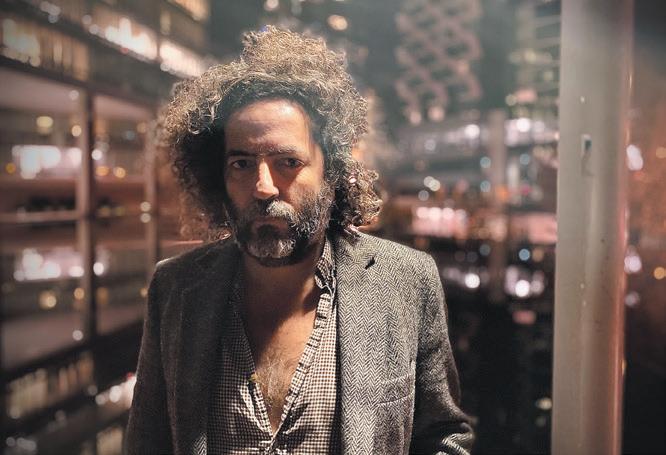
OCT 25
Is there any band cooler than Shonen Knife? The answer is no. Formed in Osaka, Japan, in 1981 by two college friends and their younger sister, the band was named after a knife marketed to boys, and the trio began writing pop-punk songs about candy, animals, and consumerism. They’ve had some lineup changes throughout the years, but the current touring band consists of founding sisters Naoko and Atsuko Yamano and drummer Risa Kawano (who has been with the band since 2011). Just take it from noted Shonen Knife fanboy Kurt Cobain, who once said, “When I finally got to see them live, I was transformed into a hysterical 9-year-old girl at a Beatles concert.” They will be joined by British garage-rock duo the Pack A.D. for two consecutive shows. The late show sold out quickly, so don’t sleep on these tickets! (Tractor Tavern, 4:30 pm & 8:30 pm, 21+) AUDREY VANN
OCT 26
Chicago-based drummer Makaya McCraven’s riotous Earshot 2022 gig at Nectar had the crowd going as wild as a Sun Ra keyboard solo. A key figure in the current jazz resurgence as part of the crucial International Anthem label, McCraven shows a keen
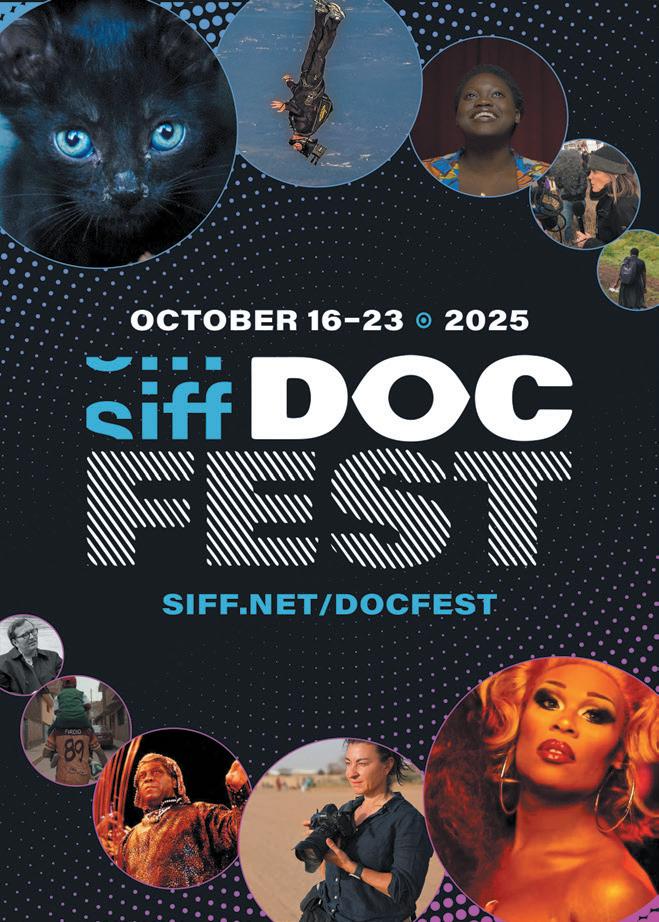
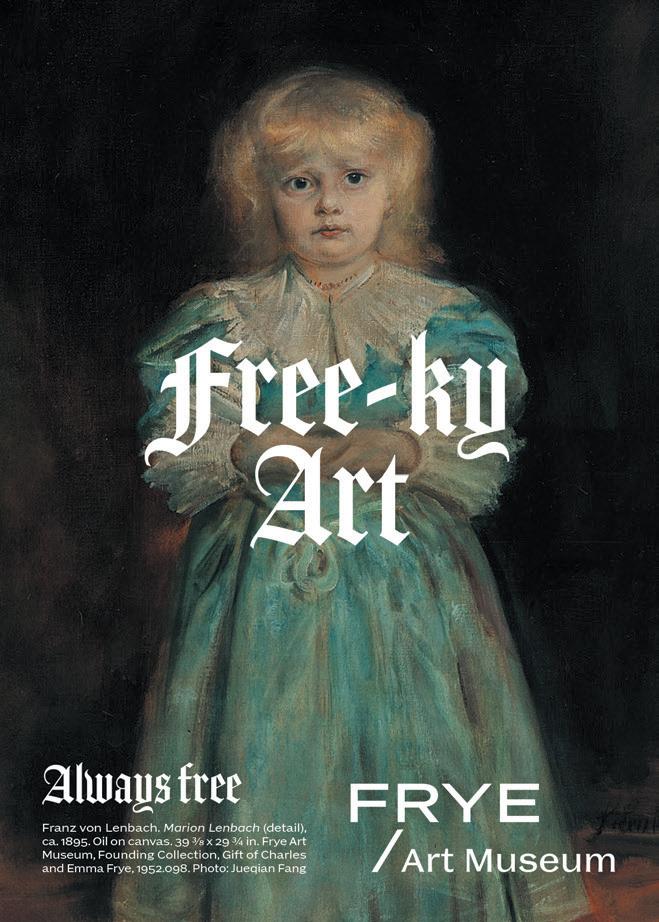
Nation of Language
Oct 9,

OCT 9 –10
When Ian Richard Devaney croons, “Just a reminder, I’m in love,” on Nation of Language’s beautifully sparse 2023 single “Weak in Your Light,” you’d have to be missing a pulse not to feel properly reminded. Buoyed by Devaney’s dramatic new wave vox and braced with shimmering synthesizers, Moog drum tracks, and, let’s be honest, statuesque cheekbones, NoL’s nostalgic, emotion-drenched intellectual pop has grabbed fans from across the Smiths → Future Islands continuum and beyond since 2020’s Introduction, Presence. Now touring in support of their fourth album, the Sub Pop–backed Dance Called Memory, the Brooklyn trio has added a bit more guitar to their arpeggiated analog-synth formula (there’s even strumming!), without losing their sleek, stylish allure. (Showbox, 8 pm, all ages) TODD HAMM
appreciation for the music’s ’60s/’70s avant-garde while adding his own distinctive spin with inventive post-production editing and electronic enhancements. His newest output consists of four EPs that will be collected under the title Off the Record (available on physical formats October 10 and digitally October 31). These tracks spawned from live improvisations over the years and then were chopped and spiced [sic] into the fascinating pieces you hear on record. Each EP has its own personality and personnel. Hidden Out! features some of McCraven’s most athletic, powerful drumming. The funky “Battleships” slinks in the vein of Mr. Ra’s “Twin Stars of Thence,” with spidery guitar filigree by Jeff Parker. The People’s Mixtape offers polyrhythmic avant-funk that should appeal to open-minded hip-hop fans. PopUp Shop’s serpentine post-bop jams could’ve earned Blue Note’s stamp of approval back in the day. The jaggedly rhythmic and electronics-laced Techno Logic, with cornetist Ben LaMar Gay and tubaist Theon Cross, represents Makaya’s most experimental material. Fortuitously,
OCT 30
If the thought of witnessing extraordinary hip-hop skills in the flesh still tingles your brainbox, get your ass to Nectar for Cut Chemist and Edan. Cut (aka Lucas MacFadden) has shone as a producer for vibrant, old-school rap crew Jurassic 5 and Latin funk ensemble Ozomatli, lacing their tracks with endless permutations of head-nodding beats and golden melodic snippets. He’s also maintained an inspirational side hustle as one of the world’s most technically adept and broad-minded DJs/turntablists; his sets trading off eclectic deep cuts on 45 with DJ Shadow are essential lessons in multidimensional dopeness and genius mixing. East Coaster Edan is an MC/DJ/producer with a grip of CC collabs to his
name. His clever/crude rhymes and fast-twitch flows match his beatmaking élan, as exemplified by 2000’s Primitive Plus and 2005’s psych-rap classic Beauty and the Beat. I’m not sure what form their performances will take here, but whatever the case, your hands will likely spend a lot of time in the air. (Nectar Lounge, 8 pm, 21+) DAVE SEGAL
NOV 3
In her bio, singer-songwriter Lael Neale writes that she loves “not listening to music”—and it shows (in the best way). Employing drum machines, power chords, and a Suzuki Omnichord, Neale creates a singular sound that’s all her own: equal parts dream pop, classic country, and gospel. Her latest album, Altogether Stranger, sounds like an ’80s private press record that would eventually land a coveted Light in the Attic reissue (IYKYK). Neale will support the album after a set from LA-based experimental artist Guy Blakeslee. (Sunset Tavern, 8 pm, 21+) AUDREY VANN
More
Loudon Wainwright III Oct 1, Vashon Center for the Arts, 7:30 pm, all ages
Tate McRae: Miss Possessive Tour Oct 2–3, Climate Pledge Arena, 7:30 pm, all ages
Jembaa Groove Oct 3, Baba Yaga, 7 pm, 21+ Racoma, Adeline Hotel, Jackie West Oct 6, Tractor Tavern, 7:30 pm, 21+
Pup, Jeff Rosenstock, Ekko Astral Oct 7, Showbox SoDo, 7:30 pm, all ages
Playboi Carti Oct 8, Climate Pledge Arena, 7 pm, all ages
JUL!ET, Avery Cochrane, Camille Cano, DJ Shayrosay Oct 9, Barboza, 7 pm, all ages
Acid Mothers Temple, the Macks, Kinski Oct 10, Clock-Out Lounge, 8:30 pm, 21+
The Beta Band: The Three EPs Tour Oct 14, Showbox, 8:30 pm, all ages
The Tubs Oct 14, The Vera Project, 7 pm, all ages
Miki Yamanaka Trio, George Colligan, Zyanna Oct 15, Baba Yaga, 7 pm, 21+
Garbage, Starcrawler Oct 15, Paramount Theatre, 8 pm, all ages
Dua Lipa: Radical Optimism Tour Oct 15–16, Climate Pledge Arena, 7:30 pm, all ages
Planned Parenthood Benefit Show: Star Anna, Caspian Coberly, Stoneyard Oct 16, Tractor Tavern, 7:30 pm, 21+
Frankie Cosmos Oct 17, Crocodile, 6 pm, all ages
KAYTRANADA x JUSTICE TOUR Oct 17, Climate
Pledge Arena, 7 pm, all ages
Madrona Fest: Black Belt Eagle Scout, Nathan Salami Rose Joe Louis, Flanafi Oct 18, Madame Lou’s, 6:30pm, 21+
Evans Fox, and More Oct 18, Key Peninsula Civic Center, 12 pm, all ages
Stereolab, Bitchin Bajas Oct 18, Neptune Theatre, 8 pm, all ages
Hand Habits Oct 21, Tractor Tavern, 8 pm, 21+
Lambrini Girls
Oct 5, Crocodile



Linda from Work, Bearaxe, Bexley Oct 22, Neumos, 7 pm, 21+
Lorde: Ultrasound Tour Oct 22, Climate Pledge Arena, 7 pm, all ages
NonSeq: Cat Toren’s Human Kind, Every Shade of Green Oct 23, Chapel Performance Space, 8 pm, all ages
Arooj Aftab Oct 24, The Great Hall, 8 pm, all ages
Sombr Oct 24, WAMU Theater, 8 pm, all ages
Destroyer: Dan’s Boogie Tour Oct 25, Crocodile, 6 pm, 21+
Rat City Recon Oct 25, Southgate Roller Rink, 4 pm, 21+
Seattle Rock Orchestra Performs David Bowie
Oct 25, Moore Theatre, 7:30 pm, all ages
Durand Jones & the Indications Oct 29, Showbox
SoDo, 8 pm, all ages
Glitterfox, Salt Lick Oct 30, Tractor Tavern, 8 pm, 21+
The Decemberists with the Seattle Symphony Nov 1, Benaroya Hall, 8 pm, all ages
Freakout Festival: Melt-Banana, Liz Cooper, Wine Lips, and more Nov 6–9, various locations, 21+
Soul Nite Weekender Presents: Bernadette Bascom Nov 7, Black Lodge, 9 pm, 21+
Belly: 30th Anniversary of King Nov 9, Crocodile, 6 pm, 21+
Herb Alpert & The Tijuana Brass & Other Delights Nov 9, Benaroya Hall, 7:30 pm, all ages
Patti Smith: Horses 50th Anniversary Tour Nov 10, Paramount Theatre, 8 pm, all ages
David Byrne Nov 11–13, Paramount Theatre, 8 pm, all ages
Doechii Nov 10, WAMU Theater, 8 pm, all ages
Neko Case Nov 14, Paramount Theatre, 8 pm, all ages
King Princess: The Girl Violence Tour Nov 16, Showbox SoDo, 8 pm, all ages
Heart Nov 23, Climate Pledge Arena, 7 pm, all ages
Lola Young Dec 2, WAMU Theater, 8 pm, all ages
The Mountain Goats Dec 3–4, Neptune Theatre, 8 pm, all ages




OPENS OCT 4
Rodney McMillan is a South Carolina–born, California-based artist who works across mediums to explore the social and political history of the United States. For this solo show, McMillian has taken inspiration from the lush nature surrounding the Henry to explore a landscape “overgrown with the lingering effects of physical, political, and social violence.” McMillian’s works range from abstract sculptures (made of thrifted cloth coated in house paint) to fantastical landscape paintings, as well as political video works informed by the Civil Rights and Black Power movements that remind us that the past will always linger. In his artist statement, McMillan writes that the past “is a fertilizer that feeds and cultivates the country we must tend to every day.” (Henry Art Gallery, free) AUDREY VANN
OPENS OCT 15
Combining landscape and portrait photography, Seattle-born Duwamish artist Camille Trautman asks, “How can I escape the screen and truly exist in this land?” I am a huge fan of the late-20th-century photographer Francesca Woodman, and Trautman’s photographs reimagine Woodman’s ghostly, grayscale approach and extended exposure technique, with the added insight of being a trans person in the digital era. While Woodman often obscured her body with mirrors, Trautman opts for LCDs (technology that uses liquid crystals to display images) to veil their body in natural settings. These works explore how landscape photography and digital media can shape or distort cultural identity by promoting or denying visibility. This October, Trautman is participating in the Frye’s Boren Banner Series, which asks regional artists to design a billboard-sized piece of art to be prominently displayed on Boren Avenue, along with a solo exhibition of related works. (Frye Art Museum, free) AUDREY VANN
THROUGH APRIL 19, 2026
Stepping into Anila Quayyum Agha’s installations at the Seattle Asian Art Museum is a full-body immersion: intricate webs of shadow and light projected from a single source drench every surface in expanding, contracting geometries. The Pakistani American artist is known for her immersive environments, which take the masculine energy of monolithic steel forms (à la Richard Serra) and transform them with delicate patterns laser-carved into the surface. The light projected from inside these 350-pound floating steel frames in turn transforms everything it touches, including you, into something ethereal. While some of her motifs are inspired by Islamic designs, Agha herself is not religious, and the work is meant to evoke spiritual and emotional resonance that transcends culture. While there, stop by Ai Weiwei’s Water Lilies, a 50-foot-long pixelated interpretation of Monet’s painting rendered in 650,000 LEGO blocks—a work subversively sublime in its own right. (Seattle Asian Art Museum) AMANDA MANITACH
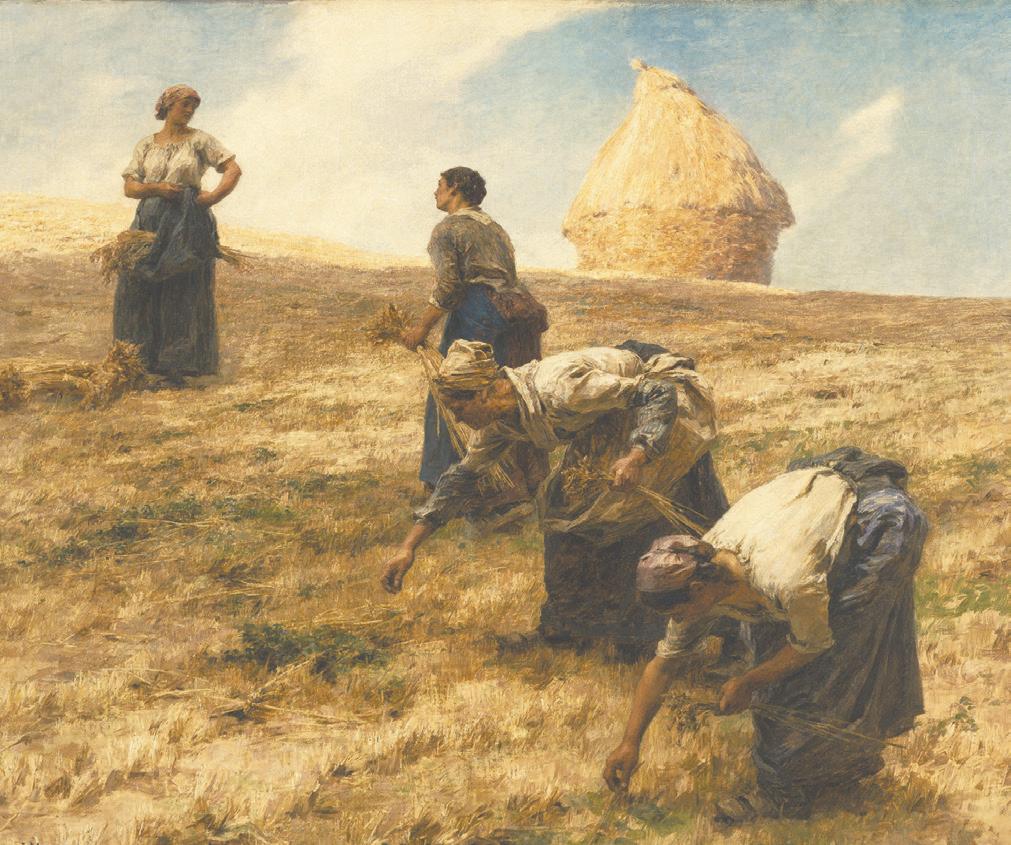
OPENS OCT 23
The Seattle Art Museum’s new exhibit reflects on the Age of Impressionism through the lens of the French culinary tradition. With more than 50 works by household-name painters such as Gauguin, Monet, and Pissarro, the exhibit showcases the life cycle of food through the processes of cultivation, preparation, presentation, and consumption. These 100-yearold-plus oil paintings by old masters will transport you to the lush country gardens, bustling markets, and swanky restaurants of late 19th-and early 20th-century France. After viewing the exhibit, eat a generously buttered baguette and watch Babette’s Feast. You can thank me later. (Seattle Art Museum) AUDREY VANN
THROUGH DEC 13
An exhibit that is an international game that starts with a single work of art that gets interpreted and translated hundreds of times, with more than 1,400 players and as many works of art? That’s TELEPHONE, an art experiment/exhibit in its third and largest iteration. Conceived by Seattle-based artist and software designer Nathan Langston, the premise is simple: Just like the children’s game, one work of art gets punted along (without context) to multiple recipients, who then interpret it as a new work of art, and so on until there’s a giant family tree of whispered artworks that have evolved in infinite ways. The results of the game will be revealed in a massive exhibit spanning two venues, with artworks ranging from musical compositions and poetry to painting, sculpture, and video. (Base Camp Studios 1 & 2) AMANDA MANITACH
The True Butterfly Effect Through Oct 4, Slip Gallery, free
Safety/Luck Through Oct 10, Center on Contemporary Art, free
Mary Finlayson: Orange, Violet Through Oct 11, Winston Wächter Fine Art
Brad Winchester “RAVELING” Through Oct 18, James Harris Gallery, free
Stefan Gonzales, Dual Solo Exhibitions Through Oct 18, the Vestibule & Specialist, free
Outside: In Through Oct 25, Foster/White Gallery, free
Rachel Campbell: Oddly Familiar Through Oct 25, Spectrum Fine Art, free
Nina Katchadourian: Origin Stories Through Oct 26, National Nordic Museum
Pepper Pepper: Pink Moment Through Oct 30, M. Rosetta Hunter Art Gallery, free
Of The Land: Curated by Sobia Zaidi Through Nov 1, SOIL, free
Whiting Tennis Through Nov 1, Greg Kucera Gallery, free
Small Works Exhibition Through Nov 7, Gage Academy of Art, free
Asian Comics: Evolution of an Art Form Through Jan 4, 2026, MoPOP
Tariqa Waters: Venus Is Missing Through Jan 4, 2026, Seattle Art Museum
Ash-Glazed Ceramics from Korea and Japan Through July 12, 2027, Seattle Art Museum
Ai Weiwei: Circle of Animals/Zodiac Heads (Bronze) Through Oct 2027, Olympic Sculpture Park, free Ten Thousand Things Through Spring 2027, Wing Luke Museum
Gossip: Between Us Ongoing, Tacoma Art Museum
Cultured Commodities: Photographs from the Henry Collection Opens Oct 18, Henry Art Gallery, free
Fay Jones: New Paintings Opens Oct 18, Studio E Gallery, free
Kim Smith Claudel: End Cycle Opens Oct 25, The Vestibule, free
Beau Dick: Insatiable Beings Open Oct 25, Frye Art Museum, free
Jonathan Lasker: Drawings and Studies Opens Oct 25, Frye Art Museum, free
Jen Ament: Head Trip Opens Oct 30, Spectrum Fine Art, free
CAM 10th Anniversary Party Oct 31, Common Area Maintenance, 7 pm, donations accepted
New Nordic: Cuisine, Aesthetics, and Place Opens Nov 15, National Nordic Museum

OPENS OCT 18
Priscilla Dobler Dzul’s museum debut in Seattle centers on stories of water “as portals of cosmic ancestral knowledge.” The artist, who divides her time between Tacoma and Yucatán, Mexico, pulls imagery and inspiration from both locales to weave works, including sculpture, textiles, and video, that unfold a story of environmental devastation entwined with cultural revitalization. In other words, the dark fairy tale of our current climate crisis, but with a possible happy ending: Dzul’s beckoning to reconnect to the universal sources of life and to “reimagine collective existence through the labor of craft.” Dzul’s own work is rooted in craft that draws from her Maya and multicultural heritage, but is infused with electric color and contemporary inflections—a cosmological melting pot of material and meaning that resonates with our times. (Frye Art Museum, free) AMANDA MANITACH
Chi-ming Yang: ‘Octavia E. Butler: H Is for Horse’
OCT 10
Merging science-fiction writer Octavia E. Butler’s early unpublished writings and drawings with literary analysis and memoir, Chi-ming Yang’s new book, Octavia E. Butler: H Is for Horse, maps out the making of a genius. The book offers a look at Butler’s childhood interests, including horses, Martians, Western novels, and racial justice, and how those morphed into a fascination with human-alien symbiosis and supernatural beings that defy the constraints of gender, race, and class. The book is organized in 26 short A-Z chapters, which pay homage to Butler’s love of library research and both writers’ experiences of the public library as a sanctuary. (Elliott Bay Book Company, 7 pm, free, all ages) AUDREY VANN
OCT 30
Even if you have not read Pamela Des Barres’s 1987 memoir, I’m With the Band: Confessions
of a Groupie, I promise you’ve seen its mark on pop culture (see: Cameron Crowe’s Almost Famous). Along with being a best-selling author and the original “rockstar girlfriend,” Des Barres was also a member of all-female performance art troupe the GTOs (Girls Together Outrageously), who released the incredible experimental rock album Permanent Damage, produced by Frank Zappa, back in 1969. Des Barres will bring her one-woman show to the Rabbit Box to share her wit, wisdom, and firsthand experiences with everyone from Mick Jagger to the Manson Family. (Rabbit Box Theatre, 8 pm, 21+) AUDREY VANN
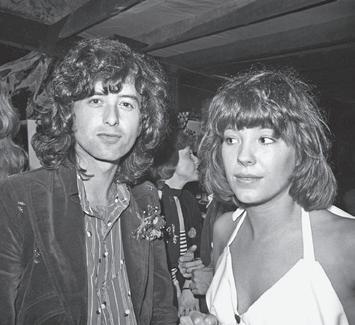
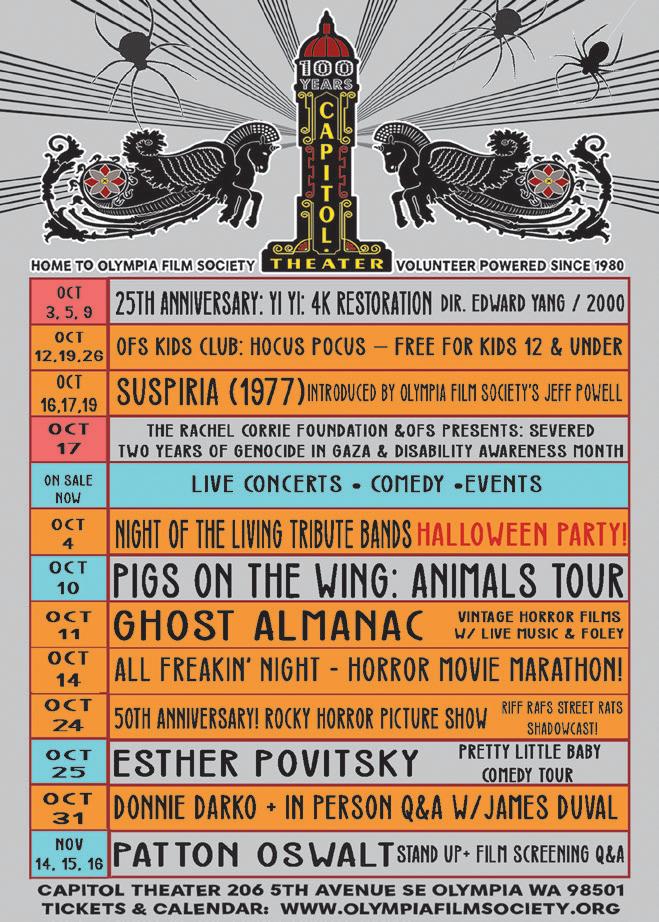


OCT 28
I’m very much here for the recent influx of dark feminist fiction about female appetites (e.g., Woman, Eating; A Certain Hunger; Hungerstone), so I was instantly hooked by the premise of The Atlas Six author Olivie Blake’s new novel, Girl Dinner. College sophomore Nina Kaur is accepted into The House, the most sought-after sorority on campus. Meanwhile, adjunct professor Dr. Sloane Hartley, who is struggling to manage her career alongside the travails of new motherhood and a less-than-supportive husband, becomes the mysterious society’s new academic liaison. Soon, the two women find themselves pulled progressively deeper into an uncanny world of cannibalistic rituals and feminine rage. Blake will discuss her book with local speculative fiction writer Isabel Cañas, author of The Possession of Alba Díaz. (Third Place Books Lake Forest Park, 7 pm, all ages) JULIANNE BELL
Kathleen Flenniken with Melissa Kwasny & Peter Pereira Oct 2, Elliott Bay Book Company, 7 pm, free Margeaux Feldman Presents: Touch Me, I’m Sick Oct 2, Third Place Books Seward Park, 7 pm, free Psychedelic Salon: Psilocybin & Menopause Oct 2, Town Hall Seattle, 7:30 pm
Roque Raquel Salas Rivera with Quenton Baker Oct 3, Elliott Bay Book Company, 7 pm, free Yume Kitasei with Wendy N. Wagner Oct 6, Elliott Bay Book Company, 7 pm, free
M. L. Rio Oct 7, Elliott Bay Book Company, 7 pm, free
Tami Parr Presents ‘Goats in America: A Cultural History’ Oct 9, Third Place Books Lake Forest Park, 7 pm, free
Leni Zumas with Danya Kukafka: ‘Wolf Bells: A Novel’ Third Place Books Ravenna, Oct 10, 7 pm, free Victoria Redel with Laurie Frankel Oct 12, Elliott Bay Book Company, 7 pm, free
The Joy of Snacking with Hilary Fitzgerald Campbell Oct 14, Here-After, 7 pm, 21+
Writers in the Schools (WITS) Back-to-School Fundraiser Luncheon Oct 17 (register by Oct 3), Edgewater Hotel, 11 am–1 pm, free with registration
A Conversation with Elizabeth Gilbert Oct 20, Town Hall, 7:30 pm
Raina Telgemeier & Scott McCloud Oct 21, Town Hall, 6 pm
Timothy Snyder Oct 26, Benaroya Hall, 7:30 pm
Grace Byron with Jas Keimig Oct 30, Elliott Bay Book Company, 7 pm, free
Li-Young Lee Nov 3, Rainier Arts Center, 7:30 pm
Becky Spratford Nov 6, Central Library, 8:30 pm, free
An Evening with Patti Smith Nov 9, Meany Hall, 7:30 pm
Oyinkan Braithwaite Nov 12, Central Library, 7 pm
Miranda July Nov 13, Moore Theatre, 8 pm
David Sedaris Nov 16, Benaroya Hall, 7 pm
A Conversation with Padma Lakshmi Nov 18, Benaroya Hall, 7:30 pm
OCT 2–11
As Lady Gaga once said, “Category is dance… or die.” So go see some experimental, existential, “f*ck shit up” kind of dance at Velocity’s new OUT THERE festival. Each weekend pairs two 30-minute works with DJ sets before and after. The first weekend (Oct 2–4) showcases Seattle’s maia melene d’urfé’s a crisis of standing and LA’s Jobel Medina and Elliott Sellers’s IMMDED IMMGEWD. The pairing will be an intricate testament to the skill and challenges of having a body within our current, chaotic world. The second weekend (Oct 9–11) features ALAN by Seattle’s Jordan MacIntosh-Hougham and Jesse Freitas, as well as BLOT by Vancouver’s Vanessa Goodman in collaboration with Tonga Collective from Poland. That weekend will get your mind reeling about AI ethics, pondering how chemistry and engineering fit within dance, and questioning where the human ends and the science of it all takes over. As Alan, a chatbot you might meet at the festival, says, “We are all born in the matrix, and the rest is drag.” (12th Avenue Arts, 6 pm DJ set, 7:30 pm dance show, 21+) NICO SWENSON
OCT 9–11
Choreographers, performers, and filmmakers Wen Hui and Eiko Otake first met in 1995 at an experimental theater festival, sparking a collaborative relationship that would span decades. Eiko grew up in postwar Japan and now resides in New York, whereas Wen Hui was raised in China during the Cultural Revolution and currently lives in Germany. In January 2020, Eiko went to visit Wen Hui in China for a monthlong artist fellowship, and the two began to excavate the war-related memories stored in their bodies. Throughout the pandemic, they worked together remotely on the documentary No Rule Is Our Rule which explores their history, friendship, and trauma. This powerful dance performance, which the artists forged together in residencies, expands on that conversation—the women share their somatic stories through a “complex tapestry of language, movement, and video” and prompt the audience to question their own relationship to war. (On the Boards, 8 pm) JULIANNE BELL
OCT 11–12
You might know Los Angeles–based comedian Atsuko Okatsuka from her iconic signature bowl cut or her viral #dropchallenge, which she coined by dropping it low to “Partition” by Beyoncé in a video with her grandmother (a frequent subject of her stand-up). Her most recent special Hulu special, Father, had me in stitches with her absurdist takes on topics such as her secret past as a high school cheerleader, her shared made-up language with her husband, and the realization that she has the exact same body type as her estranged dad. She’s sure to serve up more of her hilariously off-kilter worldview at her show at the Moore Theatre for her Big Bowl Tour. (Moore Theatre, times vary, all ages) JULIANNE BELL
‘The Little Foxes’ by Lillian Hellman
OCT 15–NOV 2
Set in a small Alabama town in 1900, Lillian Hellman’s The Little Foxes follows Regina Giddens as she manipulates her way into receiving a hefty family inheritance in an era when sons were considered the only legal heirs. The story is the perfect example of
how a lack of women’s rights can lead to a multitude of women’s wrongs—it’s the ultimate “good for her!” story. Since its original stage production, starring Tallulah Bankhead in 1939, the leading role has been revived for stars like Bette Davis (in the 1941 film adaptation), Elizabeth Taylor, Stockard Channing, Laura Linney, Cynthia Nixon, and more. This group of actresses alone speaks volumes about the drama and camp of this theater masterpiece. (Intiman Theatre, various times, all ages) AUDREY VANN
NOV 1
Hilarious Asian-millennial perspectives spill forth from Jimmy O. Yang at a rapid pace in his stand-up performances. Sure, the actor and former strip-joint DJ covers some familiar ground: relationships, parentchild interactions, the importance of friendships, how different cultures talk about money, media representation of his people—and the pressure he feels as a high-profile Asian to do his tribe proud. But the Chinese American comic also tackles some less common subjects, such as the feet etiquette of different cultures, the limited options for Halloween costumes among Asians (“I was Bruce Lee for six years.”), whether it’s okay for Asians to say the n-word when singing along to rap songs, as well as an advanced lesson on how to tell Asians apart by the sound they make when they’re disappointed. He also does the best tai-chi joke I’ve ever heard. With his acting chops honed in TV comedy shows such as Silicon Valley and Space Force and the movie Crazy Rich Asians, Yang has become an efficient and super-expressive joke machine. (Paramount Theatre, 7 pm & 9:30 pm, all ages) DAVE SEGAL
Pacific Northwest Ballet Presents: Jewels Through Oct 5, McCaw Hall, various times
The Roommate Through Oct 19, ArtsWest, various times, all ages
Demetri Martin Oct 4, Moore Theatre, 6:30 pm, all ages
Stereophonic Oct 7–12, Paramount Theatre, various times, all ages
RuPaul’s Drag Race Werq the World Tour 2025 Oct 14, Paramount Theatre, 7:30 pm
This Is Halloween: The Live Music and Dance Multimedia Spooktacular Oct 16–Nov 1, Triple Door, various times, age restrictions vary
Shrew Oct 18–Nov 2, ACT, various times, all ages
The Pirates of Penzance Oct 18–Nov 1, McCaw Hall, various times
Chicago Oct 22–Nov 2, 5th Avenue Theatre, various times, all ages
Hidden Nature: The Spectre of the Potato Oct 24–25, Base: Experimental Arts + Space, various times, free
Adam Sandler: You’re My Best Friend Oct 29, Climate Pledge Arena, 7:30 pm, 16+
International Ballet Theatre: Dracula Oct 29, Paramount Theatre, 7:30 pm, all ages
C.S. Lewis: The Screwtape Letters Nov 1, Moore Theatre, 4 pm & 8 pm, all ages
Nate Bargatze Nov 6–7, Climate Pledge Arena, 7 pm, all ages
Aya Ogawa: The Nosebleed Nov 13–15, On the Boards, 8 pm
Conner O’Malley Nov 20, Neptune Theatre, 7 pm & 9:45 pm, all ages
Penelope Nov 28–Dec 21, ArtsWest, various times
In Tandem: A Trio of Duets Dec 18–20, On the Boards, 8 pm
THROUGH OCT 11
Rejoice: The world’s premier indie erotic film fest is back with a new batch of 22 sexy shorts, each under 5 minutes and unlike anything you’ve seen before. This season’s lineup includes lusty vampires, a cyberpunk bounty hunter on the prowl, a goddess come to life, a slutty slumber party, and a demon tube sock terrorizing a horny otter, just to name a few. Plus, each screening will be hosted by a fabulous local drag queen: Betty Wetter at On the Boards, Bobbi Jo Blessings at the Lumber Yard Bar, and Miss Texas 1988 at Quality Flea Center. (Various locations, various times, 21+)
JULIANNE BELL
OCT 5–9
BFFs Kei, Kyoko, and Nozomi plan to play the final high school concert together when their lead singer unexpectedly quits the band. In a pinch, the girls recruit the first person they see—Korean exchange student Son, who is not fluent in Japanese. Together, the band hustles to learn three songs in three days to wow their peers. Described by the Beacon Cinema as an “effervescent, tenderhearted snapshot of youth,” the 2005 gem captures the unrestrained joy that happens when friends jam. (The soundtrack, by the way, was composed by the Smashing Pumpkins’ James Iha.)
Don’t miss this 20th-anniversary screening with a snazzy new 4K restoration. (Beacon Cinema, various times) AUDREY VANN
Airplane! Unreleased Director’s Cut Screening and Q&A Oct 3, Paramount Theatre, 8 pm, all ages
20th Tasveer Film Festival & Market Oct 8–12, Tasveer Film Center, various times
Seattle Latino Film Festival Oct 10–18, various locations, various times
‘Ghost Almanac’ with a Live Score by Montopolis Oct 12, Here-After, 7:30 pm, 21+
Thelonious Monk: Straight, No Chaser Oct 22–23, Northwest Film Forum, 7 pm
Mandy (2018) Oct 23, Beacon Cinema, 7:30 pm
Israel Palestine on Swedish TV 1958–1989 Oct 25–Nov 2, Northwest Film Forum, various times
Happyend Nov 9–21, Northwest Film Forum, various times
Didn’t Do It For Love Nov 10–11, Beacon Cinema, various times
The Last Dive Nov 14–23, Northwest Film Forum, various times
Cinema Dissection: Double Indemnity Nov 22, Northwest Film Forum, 10 am
SIFF Movie Club: The Night of the Hunter (70th Anniversary) Dec 3, SIFF Cinema Uptown, 6 pm
Derek Jarman’s Blue Dec 4, Northwest Film Forum, 7 pm
Cinema Dissection: Pan’s Labyrinth Dec 13, SIFF Film Center, 10 am

OCT 16–23
Sure, it’s no Sundance, Cannes, or Venice Film Festival, but SIFF’S DocFest is a pretty big deal. In the last five years alone, the festival has screened Academy Award nominees like 2022’s All the Beauty and the Bloodshed and 2021’s Flee, as well as premiered heavy hitters like The Sanctity of Space. This year’s programming is possibly the best yet, with highlights like Sun Ra: Do the Impossible (about the dearly departed Afro-futurist jazz icon), A Deeper Love: The Story of Miss Peppermint (following the life of the Broadway star and drag royal), and Steal This Story, Please! (about Democracy Now! journalist Amy Goodman). (SIFF Cinema Uptown, various times) AUDREY VANN
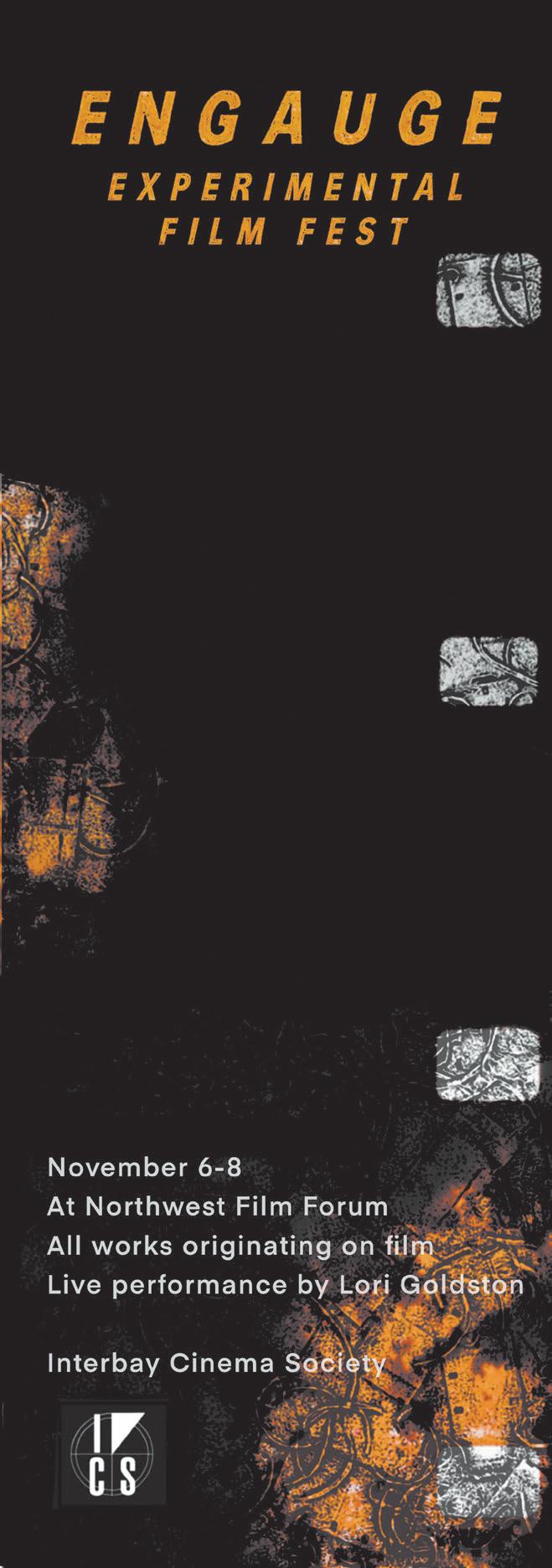




























I think the frog could be wetter.






















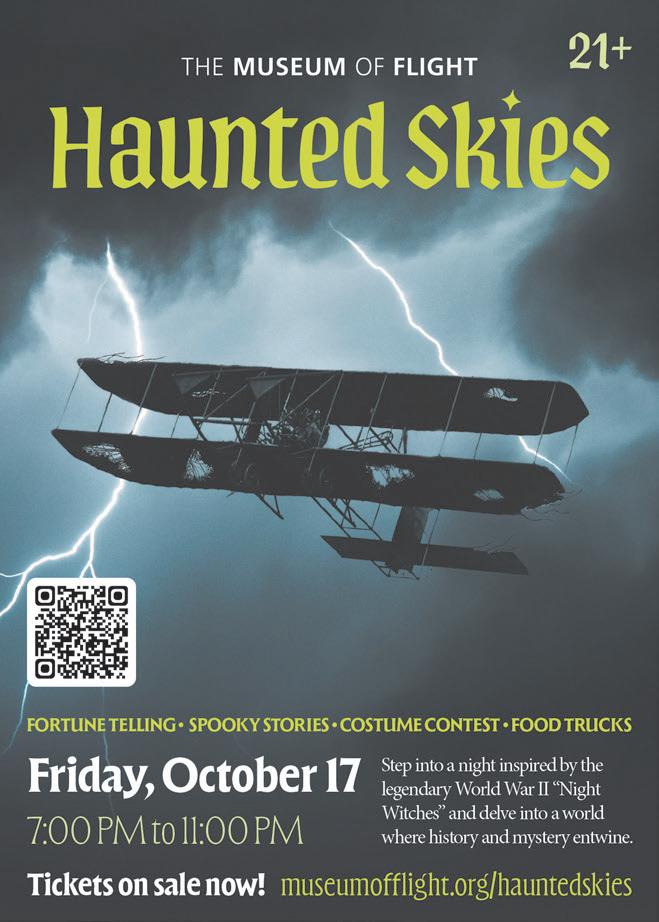
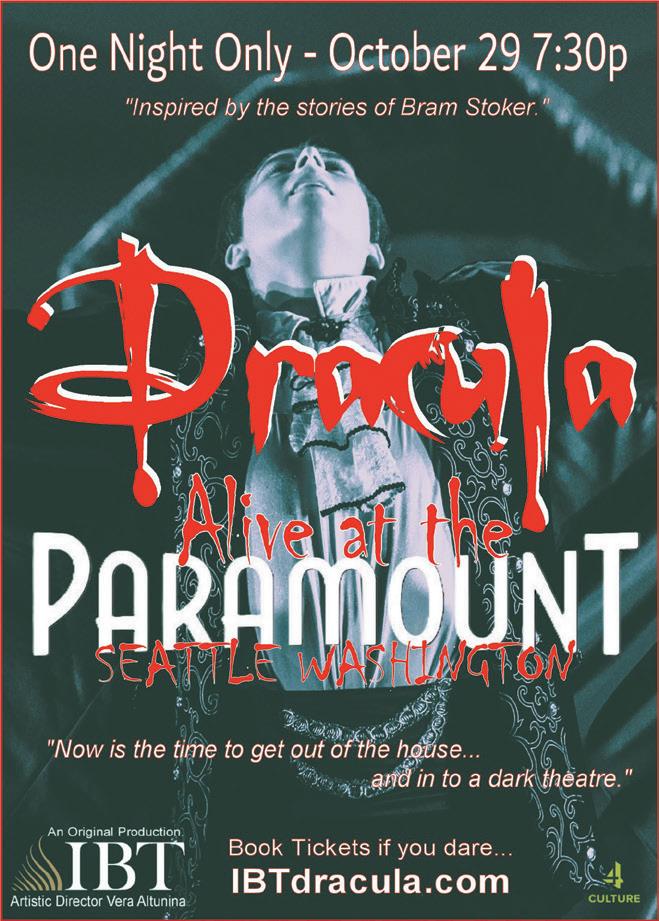

OCT 14
Samin Nosrat revolutionized the cookbook world in 2017 with her James Beard Award–winning manifesto Salt Fat Acid Heat, which educates readers on the four fundamentals of flavor, so that they can cook well intuitively. (The recipes for buttermilk chicken and autumn panzanella are fall staples in my household.) She reached a wider audience and charmed viewers with her warmth and gusto on her 2018 Netflix series of the same name, in which she traveled to various destinations to learn more about the four elements. Eight years after the publication of Salt Fat Acid Heat her highly anticipated follow-up, Good Things, has arrived. It contains 125 of Nosrat’s most cherished recipes, from saffron roast chicken to nostalgic yellow cake with chocolate frosting, as well as advice, anecdotes about her adorable dog Fava, and meditations on how food can nourish community. Samin will join her friend, author and former Stranger staff food writer Angela Garbes, for a conversation about food, creativity, and connection. (Benaroya Hall, 7:30 pm)
JULIANNE BELL
OCT 15
Australian food writer Hetty McKinnon got her start delivering fresh salads via bicycle for her Arthur Street Kitchen project in 2011 and has a knack for creating thoughtful vegetarian recipes that don’t feel like a consolation prize, thanks to thoughtful touches and creative twists. She’s also a regular New York Times Cooking contributor and writes the popular Substack newsletter To Vegetables, With Love. In her latest cookbook, Linger: Salads, Sweets and Stories to Savor, she returns to her salad roots with irresistible recipes like curry potato-and-pea dumpling salad, bibimbap-style gnocchi with gochujang vinaigrette, and tom kha noodle salad with seared mushrooms.
(Book Larder, 6:30 pm) JULIANNE BELL
OCT 22
Over the course of her career, legendary New York Times–bestselling cookbook author Dorie Greenspan has won five James Beard Awards, collaborated with Julia Child, and developed thousands of recipes. In her new cookbook, Dorie’s Anytime Cakes, the culinary grande dame turns her attention to simple, effortless cakes that can be whipped up with pantry staples at a moment’s notice, from “BFF brownie cake” to buttermilk plum cake. She’ll stop by Fremont Abbey for a conversation with food writer Nancy Leson, followed by a Q&A and book signing. Bonus: Cake will be provided in celebration of Dorie’s birthday week. (Fremont Abbey, 7 pm) JULIANNE BELL
OCT 26–NOV 8
Gourmands across Seattle rejoice over this twiceyearly event, which gives diners the opportunity to try curated menus for $20, $35, $50, and $65 at dozens of restaurants. It’s an excellent opportunity to branch out from your usual rotation of tried-and-true favorites and cross some destinations off your culinary bucket list. Round up some friends to join you, and don’t forget to tip your server generously. (Various locations) JULIANNE BELL
More
Ballard Farmers Market Every Sunday, Ballard Ave, 9 am–noon, free
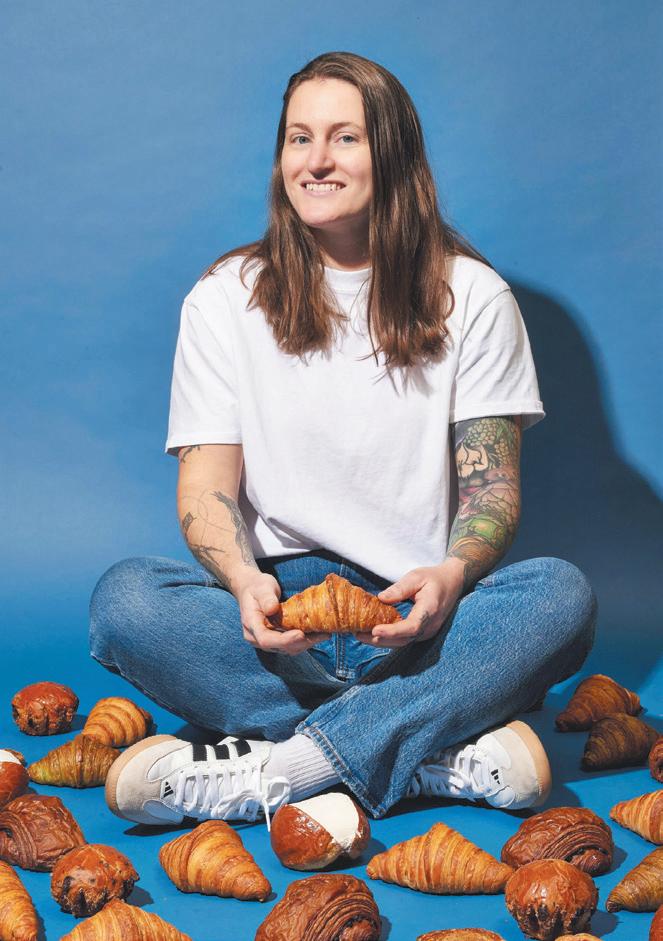
OCT 7
If you’ve ever made a pilgrimage to baker Christina Wood’s Central District shop Temple Pastries, then you already know what kind of magic she can work with laminated pastry and unexpected flavor combinations. Now, she wants to teach you how to re-create that wizardry in your home kitchen with her debut cookbook, Pastry Temple, which introduces readers to the Three Pillars of Pastry: brioche, puff pastry, and croissant. Wood is self-taught herself, so who better to guide you through recipes like gochujang babkas, poached quince tarte tatin, and sumac-roasted strawberry cheesecake croissants? She’ll chat all things pastry with Seattle Met food and drink editor Naomi Tomky, followed by a Q&A and signing. (Book Larder, 6:30 pm) JULIANNE BELL
Capitol Hill Farmers Market Every Sunday, E Denny Way and Nagle Pl, 11 am–3 pm, free West Seattle Farmers Market Every Sunday, Alaska Junction, 10 am–2 pm, free Fremont Sunday Market Every Sunday, Evanston Ave N and N 34th St, 10 am–4 pm, free
21st Annual Great Pumpkin Beer Festival Oct 3–4, Elysian Brewing Company, 4 pm, 21+ Leavenworth Oktoberfest Oct 3–18, Leavenworth, WA
Adam Reiner: The New Rules of Dining Out Oct 21, Book Larder, 6:30 pm
Seattle Coffee Festival Oct 25, Magnuson Park Hangar 30, 9 am
THROUGH OCT 12
If you’re anything like me, you harbor romantic fantasies of autumnal apple-picking each year, imagining yourself baking pies from scratch and canning preserves, but stop short of mustering the energy to organize an actual outing to an orchard. Luckily, the Seattle Farmers Markets collective has us covered with their delightfully named “applelooza,” a wholesome annual event dedicated to the seasonal fruit. You’ll get to taste a diverse selection of Washington-grown apple varieties, cast your vote for your favorites, enjoy apple-themed trivia and raffles, and learn more about the state’s apple farmers. (Various locations) JULIANNE BELL
OCT 19
Earlier this year, our mortal world lost the great filmmaker David Lynch, but his work lives on through his films, television shows, friends, and fans. This special evening with the stars of Twin Peaks is just one example of that. Ray Wise (Leland Palmer), Harry Goaz (Deputy Andy Brennan), Kimmy Robertson (Lucy Moran), Sheryl Lee (Laura Palmer), and longtime Lynch collaborator and producer Sabrina S. Sutherland will share firsthand recollections and behind-the-scenes moments from the making of the cult classic drama and its 2017 reboot. (Neptune Theatre, 7 pm, all ages) AUDREY VANN
NOV 1–2
Dog people have the luxury of showing off their pets on daily walks, but we cat owners have to settle for photos, hoping that an image can convey our cat’s unique personality and star power—it’s not fair! Sea-Meow Con offers a rare oasis for cats and cat owners to strut their stuff in public, with two days dedicated to our feline friends. There will be merchants slinging cat-related goods (for both humans and cats), advocates, furries, speakers, musicians, filmmakers, and more. There will also be plenty of social cats on-site, including on leashes, in strollers, and in fenced areas for cuddling. (Seattle Center Exhibition Hall, 10 am, all ages) AUDREY VANN
CannaCon Oct 3–4, Clark County Event Center, 10 am 18th-Century Georgian Salon by Costumers of Color, Inc. Oct 4, Women’s University Club of Seattle, 5:30 pm
Joanne Lee Molinaro: The Korean Vegan Homemade Oct 27, Book Larder, 6:30 pm
Author Dinner: Arnold Myint, Family Thai Nov 4, Hatch Cantina, 5–9 pm
Town Hall Author Talk: Michael Twitty, Recipes from the American South Nov 7, Town Hall, 7:30–9 pm Oyster New Year Nov 8, Elliott’s Oyster House, 4–9 pm
Gobble Up Nov 15, Magnuson Park Hangar 30, 10 am–5 pm
Whiskies of the World Nov 22, The Rainier Club, 6:45–9:30 pm
49th Annual Rocktoberfest: Rock, Mineral, and Jewelry Show Oct 4–5, Evergreen State Fairground CroatiaFest Oct 5, Seattle Center, all ages, free Turkfest Oct 11–12, Seattle Center, all ages, free Collections Spotlight: Bicycles Opens Oct 18, Museum of History & Industry
Diwali: Lights of India Oct 18, Seattle Center, all ages, free
Maiden Voyage: Vinyl Lounge & Market Oct 18, Hotel Crocodile, 4 pm, 21+
Tacoma Holiday Festival Oct 23–26, Tacoma Dome, all ages
Seattle Catrinas Festival 2025 Nov 1–2, Town Hall Seattle, 11 am, all ages
Kickstands Up! 125 Years of Motorcycling in the PNW Opens Nov 28, Museum of History & Industry



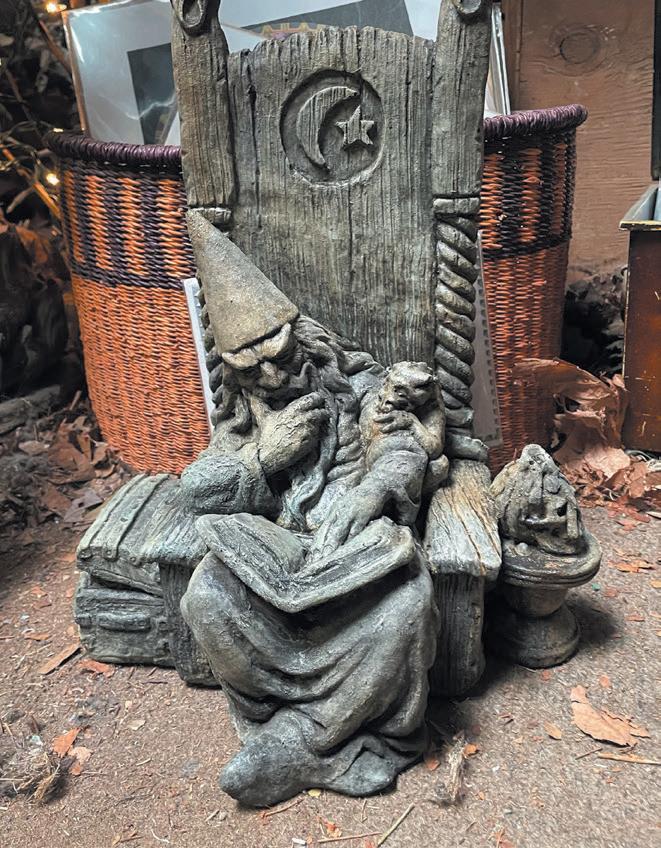


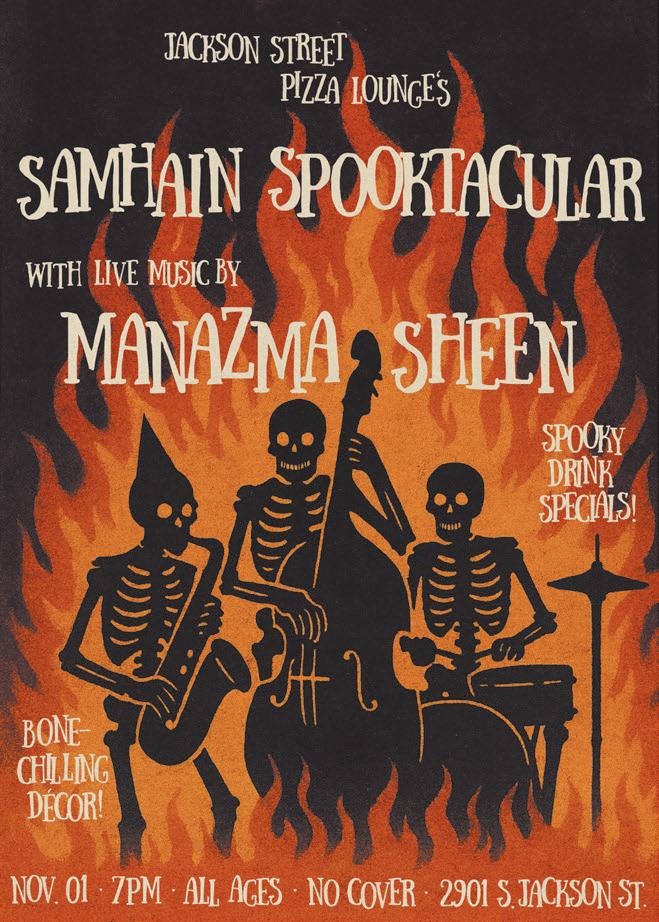
OCT 1
(FILM) In A24’s critically acclaimed horror-thriller Green Room, the fictional punk band the Ain’t Rights, composed of bassist Pat (the late Anton Yelchin), guitarist Sam (Alia Shawkat), drummer Reece (Joe Cole), and singer Tiger (Callum Turner), are touring the Pacific Northwest when a series of misadventures leads them to grudgingly perform at a neo-Nazi bar outside Portland. After the members witness a stabbing committed by a member of the Nazi metal headliner in the venue’s green room, they find themselves locked in a grim battle for their lives, fighting a gang of “red lace” skinheads tooth and nail alongside the murder victim’s friend Amber (Imogen Poots). Everyone in the main ensemble delivers powerful performances, but Patrick Stewart is particularly chilling as the aloof white supremacist bar owner, Darcy. (SIFF Uptown, 6 pm) JULIANNE BELL
OCT 2
(FILM) Frank Henenlotter’s (director of Basket Case) Frankenhooker brings together a few of my favorite things: Mary Shelley’s Frankenstein, models who act (the film stars Penthouse’s August 1986 Pet of the Month, Patty Mullen), and camp icon Shirley Stoler (of The Honeymoon Killers and Seven Beauties). The lore of this film runs deep—a ratings body representative reportedly told Henenlotter that the film should be rated “S for shit.” And, when it was released on VHS, it mortified rental customers with a sound chip that exclaimed, “Wanna date?” when it was picked up. Needless to say, it’s taken a few decades for this gem of a movie to be appreciated. Kick off Halloween month with a special screening of the 1990 release, presented by the Grand Illusion Cinema. (Here-After, 7:30 pm, 21+) AUDREY VANN
OCT 11
(DANCE NIGHT) Lace up your leather corset and pile on the vampy lipstick: This event billing itself as “goth gf 4 goth gf” promises a pleasantly macabre time for sapphics of all stripes (no cis men or TERFs allowed) and is located inside a haunted subterranean vault “with a history as dark as the music.” Bat your lashes at other gothic babes while dancing the night away to everything from sexy Cobrah songs to industrial beats. Prizes will be awarded to attendees with the most elaborate outfits, so dress to impress. (Asylum Collective, 9 pm–2 am, 18+) JULIANNE BELL
THROUGH JUNE 2026
(VIS ARTS) Just in time for spooky season, two exhibits at TAM are worth making the trek for. Haunted is a group show curated by Ellen Ito that riffs on “hauntology,” a term coined by Jacques Derrida to describe things that elicit feelings of temporal displacement and nostalgia for lost futures or the past. Works by 13 artists, including Mary Ann Peters and
Bosco
GRINDHAUS: October 17–18, Crocodile

Kelsey Fernkopf, will stir spectral memories through moving image, installation, and photographic works.
Opening the same night, Cable Griffith: Uncanny
Twilight offers a mini-retrospective of the Seattle artist’s recent work. Griffith is a master of landscape painting, but he takes the genre to a place of fluorescent-drenched splendor just beyond reality’s pale. His lexicon of mark-making has evolved over the years to encompass a rhythm and repetition of dots, dashes, and painterly pixels that render waterfalls, forests, and wastelands vibrational—as if we were traipsing through an impasto video game world steeped in shrooms and viewed under a blacklight. (Tacoma Art Museum) AMANDA MANITACH
OCT 17–18
(DRAG) Self-proclaimed “demon queen of Seattle” and RuPaul’s Drag Race All Stars season 10 contestant Bosco’s drag and performance showcase Grindhaus consistently curates the sparkliest, most gag-worthy lineups, and this special two-night Halloween edition is no exception. The “sexy, scary, moonlit” double-feature will include “extraterrestrial phenomenon from the planet Glamtr0n” Alaska Thunderfuck 5000, fellow All Stars season 10 stars Irene the Alien and Mistress Isabelle Brooks, local favorites Betty Wetter and Glenn Coco, and dance crew Purple Lemonade. (Crocodile, 10:30 pm, 21+) JULIANNE BELL
OCT 18
(PARTY) I’m currently working my way through all seven seasons of Buffy the Vampire Slayer for the first time. Despite having to compartmentalize my feelings about Joss Whedon’s abusive creep behavior and sit through Xander’s grating incel antics, I can’t deny that I love the ’90s fashion, watching Buffy kick ass, and Willow’s progression from awkward wallflower to lesbian witch. If you share my longing to party like the Scooby Gang, I have good news: Baba Yaga will transform into the crew’s favorite hangout, the Bronze, for one glorious night, complete with themed trivia and Buffyverse-adjacent tunes from 1996–2003, performed by the band Five by Five. (Baba Yaga, 5 pm, all ages) JULIANNE BELL
OCT 19
(FILM) You’ll never forget your first time watching the bananas 1977 Japanese horror-comedy technicolor phantasmagoria that is House. The story follows a teen schoolgirl named Gorgeous who goes on a summer trip to visit her aunt’s home in the countryside, along with her six friends: the brainy Prof, music-loving Melody, athletic Kung Fu, perpetually hungry Mac, gentle Sweet, and daydreamer Fantasy. One by one, the classmates fall victim to the house’s supernatural traps. This movie has everything: a disembodied head biting someone in the ass, a flesheating piano, mattresses falling from the sky, and an evil white Persian cat named Blanche. Really, it must
be seen to be believed. Drag queen and self-described “bird-brained bombshell” Monday Mourning will give an introduction to the film, which is part of her “Mourning Sickness” series of camp and cult classics. (Northwest Film Forum, 7:30 pm) JULIANNE BELL
OCT 25
(DANCE NIGHT) Seattle’s ’60s dance night Boots! will transform into “Booots!” for a haunted, zombiethemed hop featuring ghoulish go-go dancers, dilapidated decor, and bone-rattling Halloween-themed 45s from beyond the grave (courtesy of hosts Maxwell Edison and Sarah Savannah). There will also be drink specials, a go-go cage, and plenty of photo ops. (Sunset Tavern, 9:30 pm, 21+) AUDREY VANN
OCT 25
(DANCE NIGHT) Category is: Night of 1,000 Gagas! Embrace Lady Gaga’s darkest, campiest era at this Mayhem Ball–themed Halloween bash. I promise that there will be plenty of Little Monsters dressed as the Lady in Red, so stand out with something crafty— might I suggest her iconic Kermit the Frog coat, worn in 2009, or her 2013 chic ghost ensemble? Whatever you wear, just dance to her endless stream of hits, selected by DJ Baby Van Beezly. (Neumos, 9 pm, 21+) AUDREY VANN
OCT 28
(FILM) I will never forget the first time I saw Tim Curry as Dr. Frank N. Furter step out of the elevator singing “Sweet Transvestite” in fishnets and a sequin corset. I was 13, at the Admiral Theater’s monthly midnight screening of the The Rocky Horror Picture Show, and I felt deeply confused and excited by my first crush that existed beyond gender. This, my friends, is the bi experience. As the years have passed, I’ve seen these recurring screenings of Rocky Horror slowly disappear from our city, and now it appears that Seattle has none left. Don’t miss this devastatingly rare opportunity to force the young outcasts in your life to watch the 1975 cult classic with a special appearance from Brad Majors himself, Barry Bostwick. (Paramount Theatre, 7:30 pm, all ages) AUDREY VANN
OCT 29
(PERFORMANCE) For one night only, the International Ballet Theater will treat Seattle to a production of Bram Stoker’s classic vampire tale Dracula, featuring opulent gothic costumes, jaw-dropping choreography, and a haunting score by composers Charles Gounod, Astor Piazzolla, and George Enescu. For this special opening night performance, Count Dracula himself invites all audience members to wear their Halloween costumes to the show. Those who impress the Count may even summon his presence. (Paramount Theatre, 7:30 pm, all ages) AUDREY VANN
OCT 31
(DRAG) Chicago-based drag icon, recording artist, and RuPaul’s Drag Race All Stars winner Shea Couleé is embarking on their first-ever headline DJ tour and bringing a “Halloween-inspired celebration of fantasy and fierce beats” to six different cities, and Seattle is lucky enough to host their tour stop on actual Halloween. Famed Chicago DJ MISTER WALLACE will join them, as will their drag sisters Kerri Colby, Aja, and Luxx Noir London. According to Shea, costumes are “not just encouraged, but expected,” so be sure to serve “dark glamour meets ’90s nostalgia” to avoid having to sashay away—there might just be a prize awarded for the most sickening look. (Showbox, 9 pm, 21+) JULIANNE BELL
The Emerald City Slasher (IMPROV) Through Nov 1, West of Lenin, 7:30 pm Can Can’s Hitchcock Hotel (FILM) Through Nov 16, Market Theater, various times Mimosas Cabaret: Death Becomes They/Them (PERFORMANCE) Through Nov 16, Unicorn, 21+ Fussy Cloud Puppet Slam Volume 29: It’s Aliiive! (PUPPETS) Oct 3–4, Theatre Off Jackson, 7:30 pm
Halloween Pet Parade (PETS) Oct 5, Volunteer Park, 11 am, all ages, free Poe Unexpected: Edgar Allan Poe Improvised (PERFORMANCE) Oct 3–Nov 1, Unexpected Productions Improv, 7:30 pm Trick or Treat (in tribute to Ozzy) (PARTY) Oct 7, Here-After, 7:30 pm, 21+
Kink and Cocktails: Graveyard Smash (PARTY) Oct 11, Mountain Room, 7 pm, 21+
Halloween Train (TRAINS) Oct 11–26, Northwest Railway Museum, all ages
Ghost Almanac with Live Score by Montopolis (FILM) Oct 12, Here-After, 7:30 pm, 21+
Ghoul Talk’s Halloween Bash (LIVE MUSIC) Oct 16, Central Saloon, 7 pm, 21+
This Is Halloween (PERFORMANCE) Oct 16–Nov 1,
Triple Door, various times
Cozy Little Murders (READINGS) Oct 19, Seattle Public Theater, 7 pm
My Favorite Murder Live (PERFORMANCE) Oct 21–22, Paramount Theatre, 7 pm
I’M NOT OKAY! Emo and Pop Punk Halloween Party (DANCE NIGHT) Oct 24, Hidden Hall, 9 pm, 21+
Nite Wave Halloween Party (DANCE NIGHT) Oct 25, Nectar Lounge, 8 pm, 21+
MAKE-YOUR-OWN-COSTUME: A Free DIY
Workshop/Craft/Sewing Day! (COMMUNITY) Oct 25, Asylum Collective, 1:30 pm, free
Promiscuous: Halloween (DANCE PARTY) Oct 25, Chop Suey, 9 pm, 21+
Hoax, a Halloween Indulgence (PARTY) Oct 30, The Ruins, 7 pm, 21+
Behind the Scream: A Live Conversation with David Arquette & Screening (FILM) Oct 30, Pantages Theater, 7:30 pm
Candlelight: A Haunted Evening of Halloween Classics (LIVE MUSIC) Oct 30, Museum of Flight, 6:15 pm & 8:30 pm
Halloween Fundraiser for Gaza (LIVE MUSIC) Oct 30, Baba Yaga, 8 pm, 21+
TUSH! (DRAG) Oct 30–31, Clock-Out Lounge, 9 pm, 21+
HOWL-O-WEEN: Puppy Girl Halloween Party (PARTY) Oct 31, Asylum Collective, 9 pm, 18+
Ha Ha Halloween Comedy Celebration (COMEDY) Oct 31, Old Stove Brewing, 7:30 pm, 18+
Souled Out Funk Super Halloween Dance Party (DANCE NIGHT) Oct 31, Aurora Borealis, 8 pm, 21+
Daft Disko: Halloween (DANCE NIGHT) Oct 31, Crocodile, 10 pm, 21+
Twerk or Treat: Annual Neumos Halloween Party (DANCE PARTY) Oct 31, Neumos, 9 pm, 21+
Zombie Disco (DANCE NIGHT) Oct 31, Monkey Loft, 9 pm, 21+
Prom Night of the Living Dead (LIVE MUSIC) Oct 31, Hidden Hall, 8 pm, 21+
Haunted W Seattle Halloween Party (PARTY) Oct 31, W Seattle, 9 pm, 21+
HalloQueen on Halloween (LIVE MUSIC) Oct 31, Tractor Tavern, 9 pm, 21+
BOO Seattle (LIVE MUSIC) Oct 31–Nov 1, WAMU Theater, time TBD, 18+
The Official Halloween Bar Crawl (BOOZE) Oct 31–Nov 1, various locations, 21+
Recession Pop: Halloween Edition (DANCE NIGHT) Nov 1, Neumos, 9 pm, 21+
Día de Muertos Festival (COMMUNITY) Nov 1–2, Seattle Center, all ages, free
creaming at the state of our world? These haunted attractions—ranging from playfully spooky to downright frightening—may offer a cathartic way to let out the terror. (All roughly within an hour of Seattle, and happening throughout October, but please confirm schedules ahead of time!) NICO SWENSON
(GEORGETOWN, SEATTLE)
If you want a good ol’ haunted house experience, this is a pretty classic one. While you might have longer lines for a quick scream, this was once an actual morgue and the site of the disturbing, unsolved murder of nine staff members. (Ages 12+)
(TACOMA)
For those who live in Tacoma or love a little trip to the “City of Destiny,” this one is another traditional haunted house with a decent price point and good remarks for their props, costumes, and characters. (Suggested ages 12+)
3
(SNOHOMISH)
Bopping out to the farm side of haunts, this option has a variety of activities with a haunted house, haunted town, and zombie paintball! (Suggested ages 12+)
(SNOHOMISH)

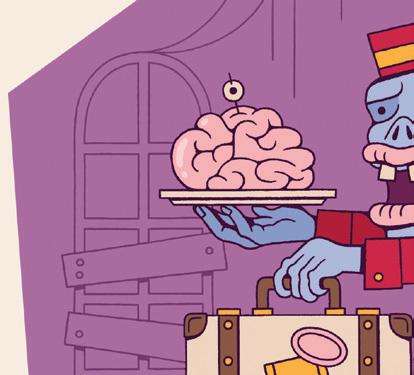

is volunteer-based, with all the profits going to charities of the volunteers’ choosing. (All age options)
(BUCKLEY)
A little bit further out and a slightly higher price, this attraction does have a little bit of everything, with base tickets for the haunted woods and a “haunt & play” add-on for access to a haunted corn maze, ziplines, and whatever a “mega slide” is. (Suggested ages 12+)
(BUCKLEY)
This is another further-out option with a lower price and an indoor haunt. Positive reviews for the aesthetics and performers, negative reviews mostly indicating long lines, and then a whole range of people calling it either super scary or not very scary, so it depends on how jumpy you are.
(Suggested ages 10+)
Not far from Thomas Family Farm, this is another of the corn-fueled, PG-13 scares with two main attractions, VIP-exclusive options, and mixed reviews that mostly recommend attending during less busy times, so the scares aren’t spoiled. (Suggested ages 13+)
(MAPLE VALLEY)
If you want a woodland scare, this haunt has both daytime family walks and nighttime full frights and
(PIONEER SQUARE, SEATTLE)
Moving away from the animatronic jump scares and into creepy story time, this 90-minute tour is a good price point option for history buffs and lovers of the paranormal. (All ages)
Seattle Terrors also has a ghost tour, but this is a great option to mix in some bar hopping along with
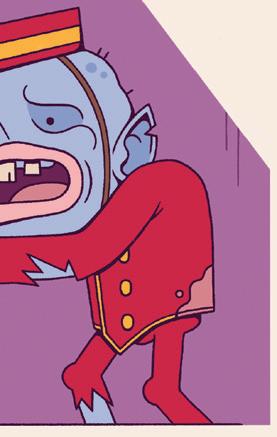

the spooky tales. Extra credit for the pun in the name. (Ages 21+)
(CAPITOL HILL, SEATTLE)
For more boos with booze, and if you have a little more money to burn, this is an immersive vampirethemed night with cocktails and performances for a chill and classy evening. (Ages 21+)
(BELLTOWN, SEATTLE)
If you like an escape room and you have a pack of friends, Hourglass Escapes has an Evil Dead 2–themed room to indulge your masochistic hobby. (Ages 10+ with an FAQ stating that rooms are more “eerie” than scary)
(TACOMA)
A better version of the Sunday scaries, this is a good option for those who aren’t night owls, aren’t looking for jump scares, but are looking for some casual, spooky-themed meandering. Lots of shopping options for occult oddities and spooky novelties at a farmers market turned goth. (All ages)
(FEDERAL WAY)
Everyone has a Wild Waves story, but if you don’t, this could be yours, with Booville for the kiddos and Fright Fest taking over the park at 6 p.m., you’ll either be screaming from the roller coaster or because someone lunged at you in a zombie costume. (All ages, but gets scary after 6 pm)
